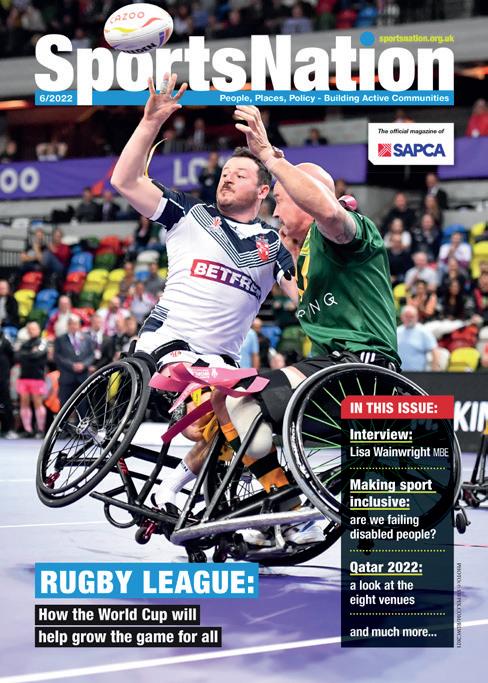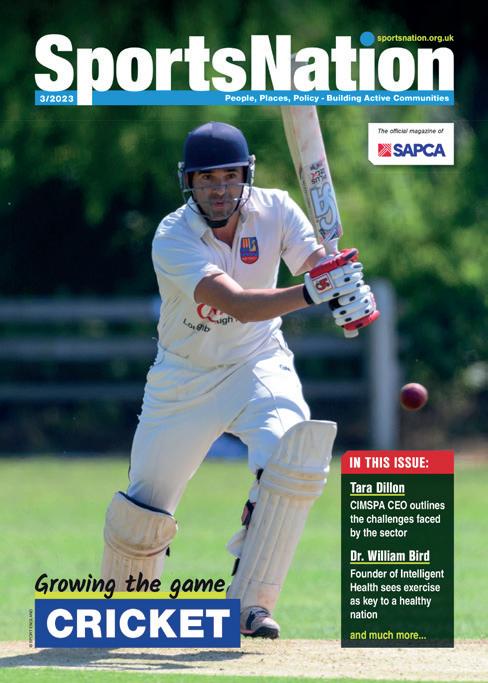SWIMMING Growing the game


























How is swimming tackling the challenges it faces?
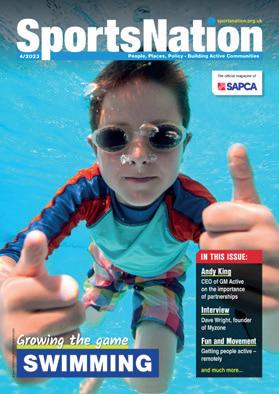



























How is swimming tackling the challenges it faces?


It’s encouraging that there are so many examples of how the physical activity sector is working together with health providers – our interview with GM Active’s Andy King on page 34 provides some insights into successful collaborations.
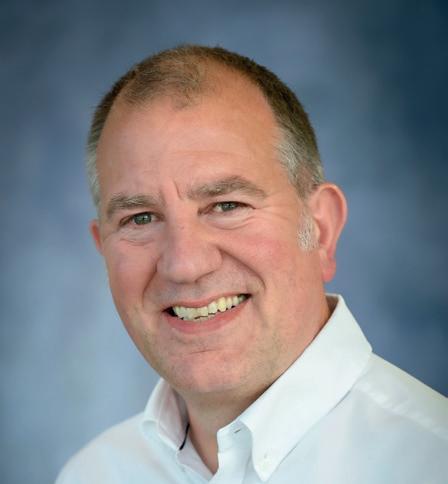
Earlier this year we saw the launch of the Times Health Commission – a yearlong project aiming to address the most urgent challenges facing health and social care. It has stated that ill health among people of working age is projected to cost the UK economy approximately £150bn a year (equivalent to 7% of GDP).
To tackle this burden, the Times Commission will provide recommendations on 10 areas and it has already stated that it will consider the lessons to be learnt from around the UK to identify examples of best practice. It will be interesting to see how prominently the partnership model – such as the initiatives being delivered
in the North West – will feature in those final recommendations.
At two recent industry events, Evolve and Elevate, there was a lot of discussion about why we need data, especially when it comes to persuading the government over the value of investing more in preventative healthcare. As Huw Edwards, CEO of ukactive, said “The government must – if it wants to preserve the NHS – make the shift to prevention.“
As an industry we need to make a compelling argument for inclusion in the health agenda – and better collection of the right data will be key to this. Another important aspect when making that argument is communication – the language we use when making our case. This aspect is explored in two separate articles in this issue, both by SAPCA CEO, Richard Shaw, in his column on p. 30 and in the Elevate report on pages 68 to 73.
Tom Walker Editor
T: +44 (0)7796 512769 E: tom@sportsnation.org.uk















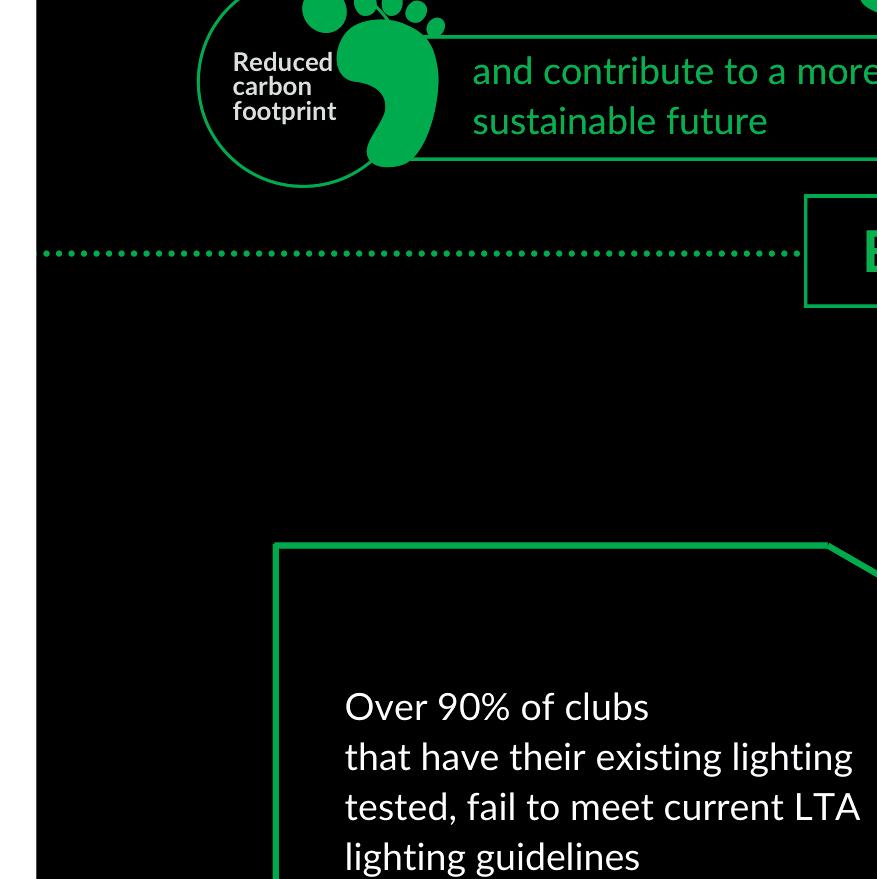

















32 Review: SAPCA Golf Day
A look back at a day of networking – and some golf
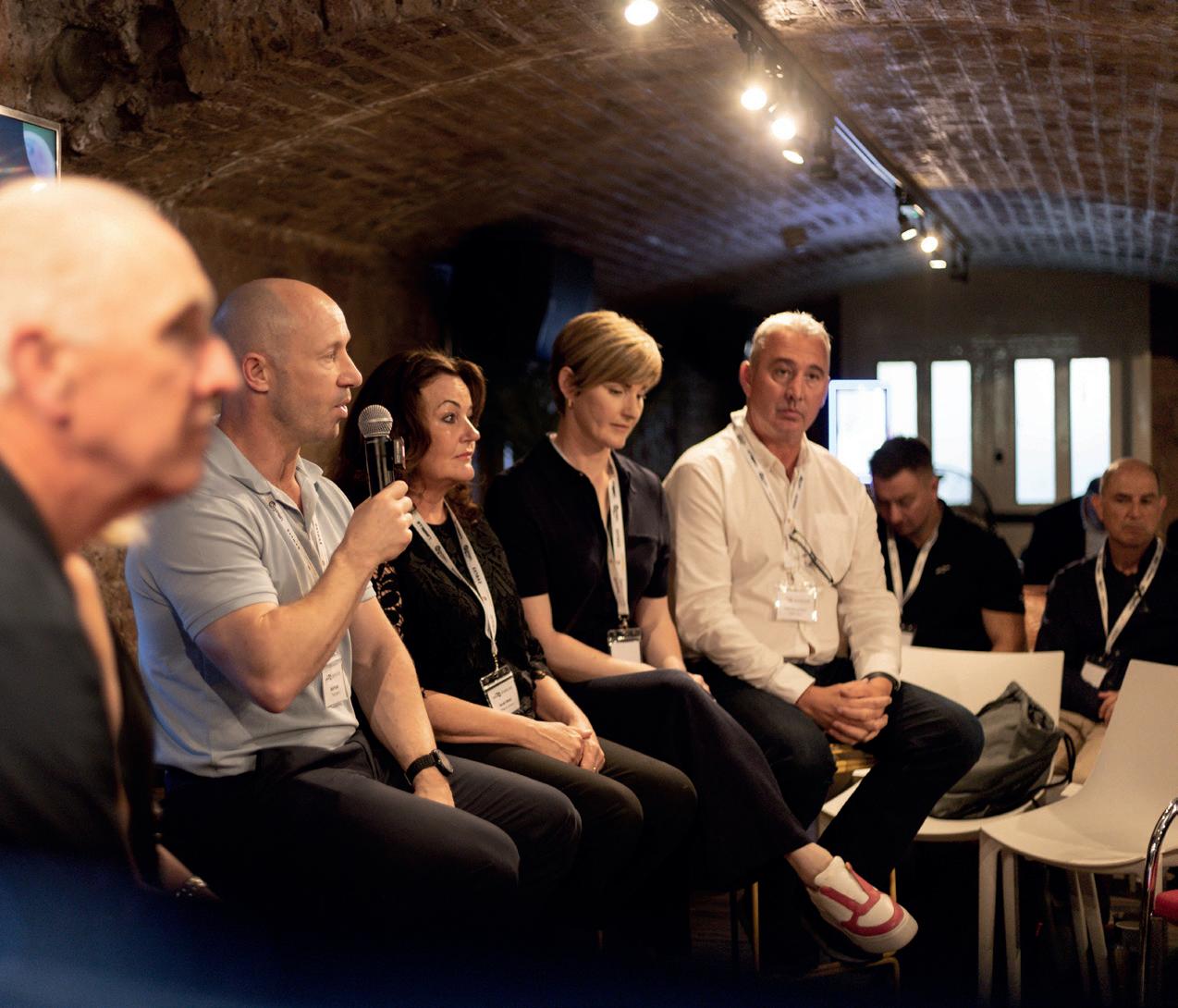
34 Interview: Andy King



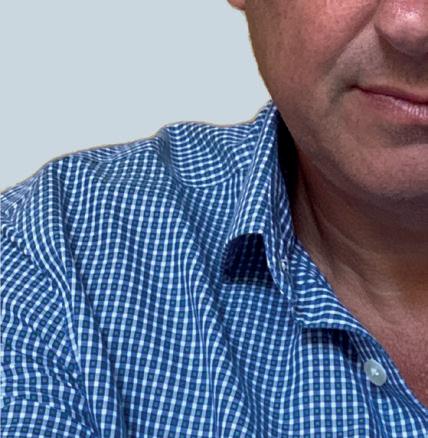
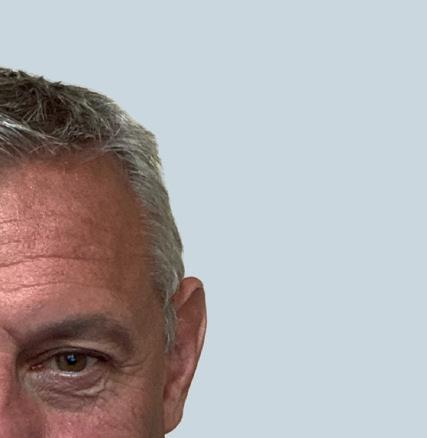
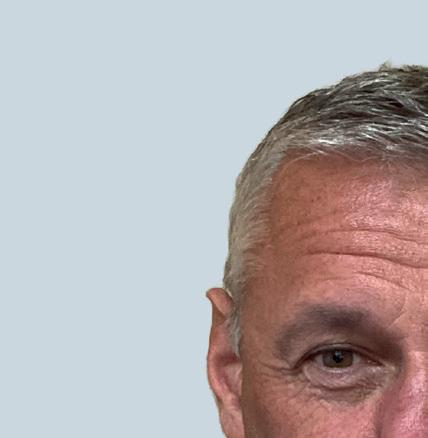
We talk to the chair of GM Active about collaboration and cooperation
42 Focus on sustainability
A look at recent facility projects which have sustainability built in
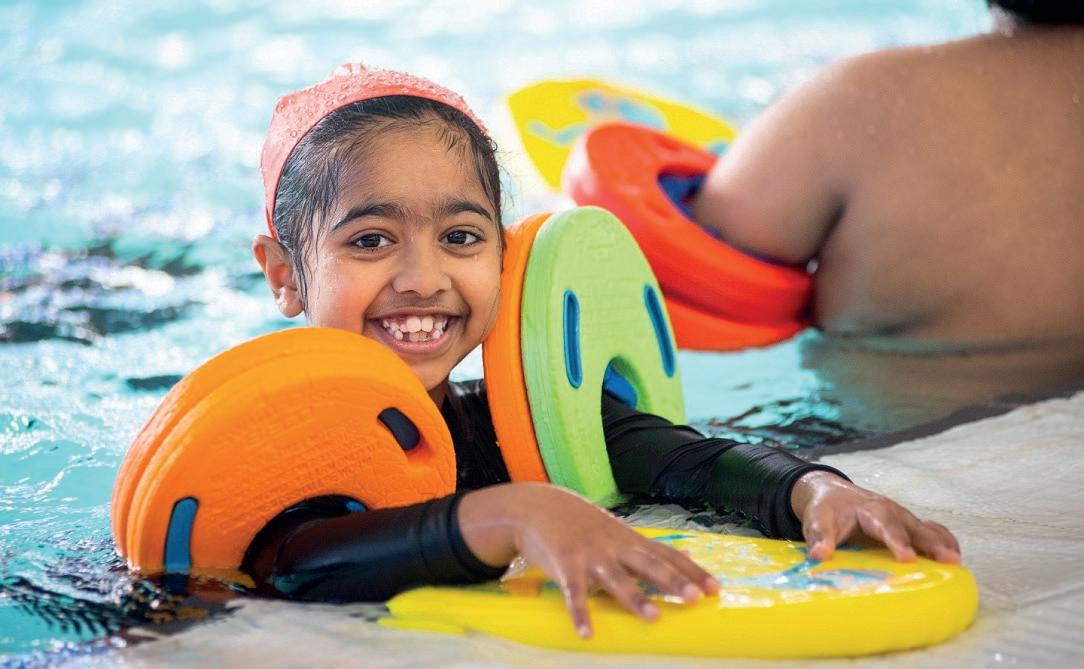
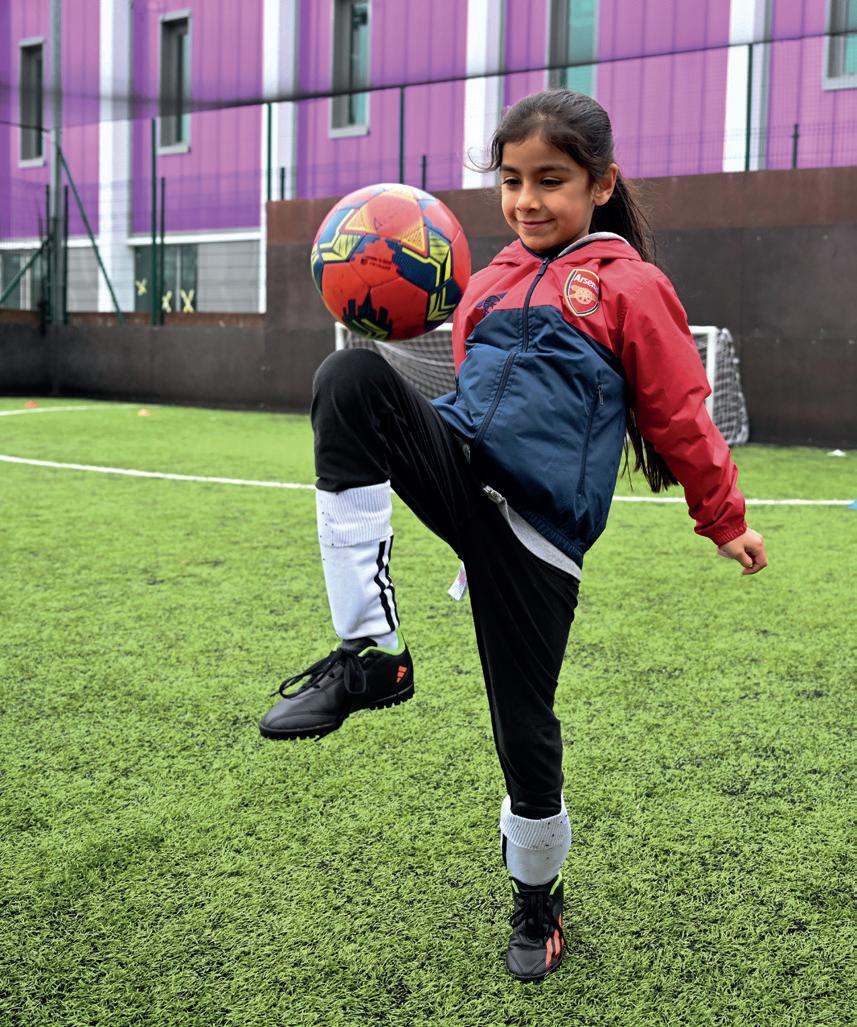
46 Event review: Evolve (part 1)
A Q&A with Leisure DB’s Heidi Blackburn
48 Event review: Evolve (part 2)
Cheriee Wales from Pocket Rocket, one of the Evolve partners, offers her views on the event
50 People profi le: Dave Wright
The founder of Myzone explains why the tech has become so popular
56 Growing the Game: Swimming
How is the sport of swimming growing its numbers, while tackling the challenges it faces?
62 Synthetic turf sports

A look at recent synthetic turf pitch projects

68 Event review: Elevate Report from the physical activity industry’s main trade show


74 SAPCA Showcase Members’ classified directory
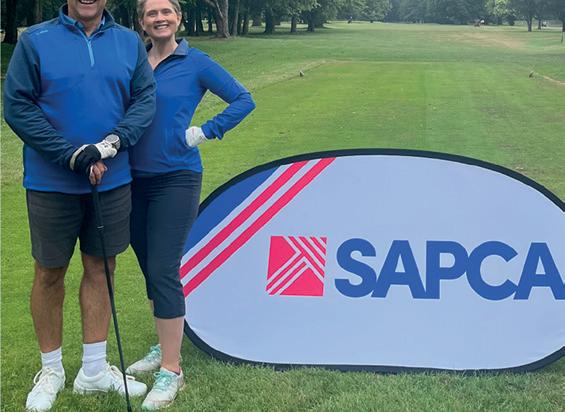

78 Interview: Chris Meyer
How Fun and Moving is delivering physical activity to older people at home
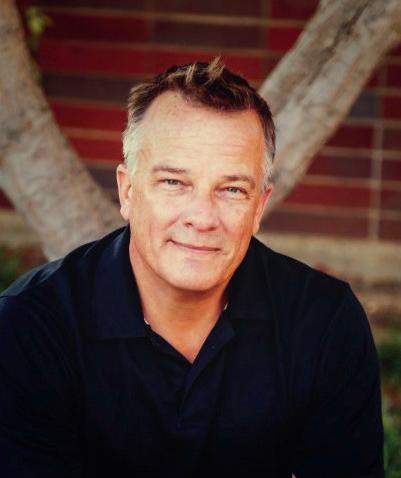
















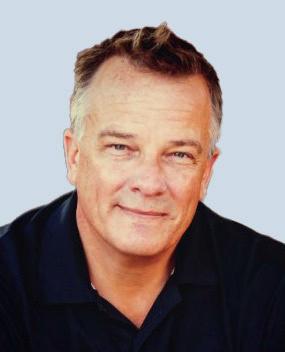



















The report calls for ‘wholesale change’ of women’s football
Sandwell Aquatics Centre, the only purpose-built facility created for the Birmingham 2022 Commonwealth Games, has opened to the public in legacy mode. Housing a 50-metre pool, 10m dive tower and 25m diving pool, the centre hosted all aquatics events at last year’s Games, but was designed with community use at its heart.
Hockey Wales has seen a 15% increase in junior club membership over the past year. The NGB says the growth is thanks to “greater exposure” to the sport – the men’s team played at their first ever Hockey World Cup and the women equalled their best Commonwealth Games finish (8th place).
Women’s football in England has the potential of becoming a “billion pound industry” in the next decade, according to a major review of the sport by former England women’s star Karen Carney. However, the landmark report also found that, for women’s football to achieve its potential, there needs to be a “wholesale change across the game” – from enhancing minimum standards for professionals players to rapid
growth in the development of young talent. The 126-page report is the result of a review commissioned by the UK Government following England’s UEFA Women’s EURO 2022 success. Its publication coincided with the build-up to the FIFA Women’s World Cup 2023.
The review, led by Carney, examined the opportunities and challenges for the women’s and girls’ game – from its commercial future to the fan experience.

The Department for Education has published the government’s School Sport and Activity Action Plan The paper maps out plans to provide more pupils with increased opportunities to play sport. These include providing up to £57m worth of funding to support 1,350 schools to open their sport facilities to the public outside school hours.
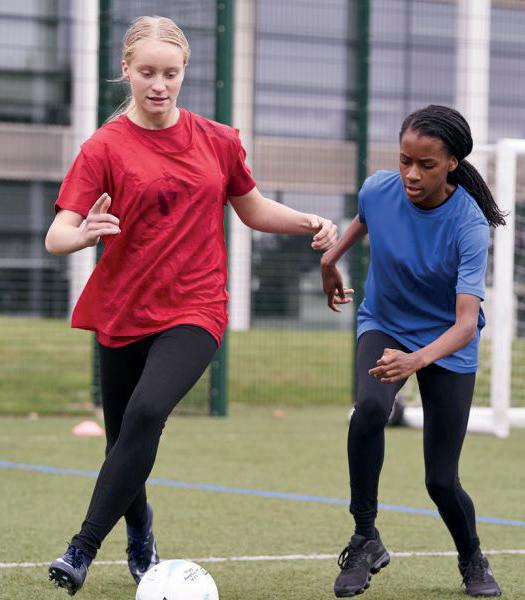
Pocket Rocket Group has appointed Nick Mennell, as Director, to head up the company’s business development and sales consultancy operations.
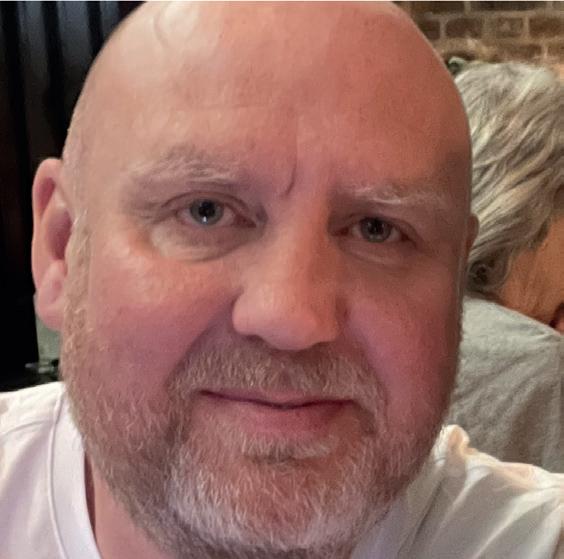
Founded by Cheriee Wales and the late Lawra Angell, Pocket Rocket has delivered marketing expertise to the health and fitness industry since 2017, supporting a wide range of customers including fitness equipment manufacturers, technology companies, fitness operators and education providers.
Nick Mennell has joined the business as Partner and Director to offer clients additional services that go hand in hand with Pocket Rocket’s existing offering.
Cheriee Wales said: “I am incredibly excited to be working alongside Nick to strengthen and grow Pocket Rocket into new areas of the market.”
Former UK Sport CEO, Liz Nicholl, has received a damehood in the King’s Birthday Honours list.

Nicholl, who held the role from 2010 to 2019, is one of several past and present members of the UK’s high-performance sport community who have been recognised in the 2023 King’s Birthday Honours list.
Several members of the England men’s winning Wheelchair Rugby League team were awarded honours, as was Jon Dutton, CEO of the Rugby League World Cup 2021 (RLWC2021).
There was also a CBE for former England rugby union captain, Sarah Alice Hunter (for services to
rugby union) and OBEs for Pippa Britton, vice-chair of UK AntiDoping and David Clarke, CEO of the British Paralympic Association.
Leisure retail and bespoke uniform specialist, Blu Leisure, has promoted Tiffany Barritt into the role of Business Development Manager to support the brand’s ongoing commitment to expanding its presence and grow its operations.
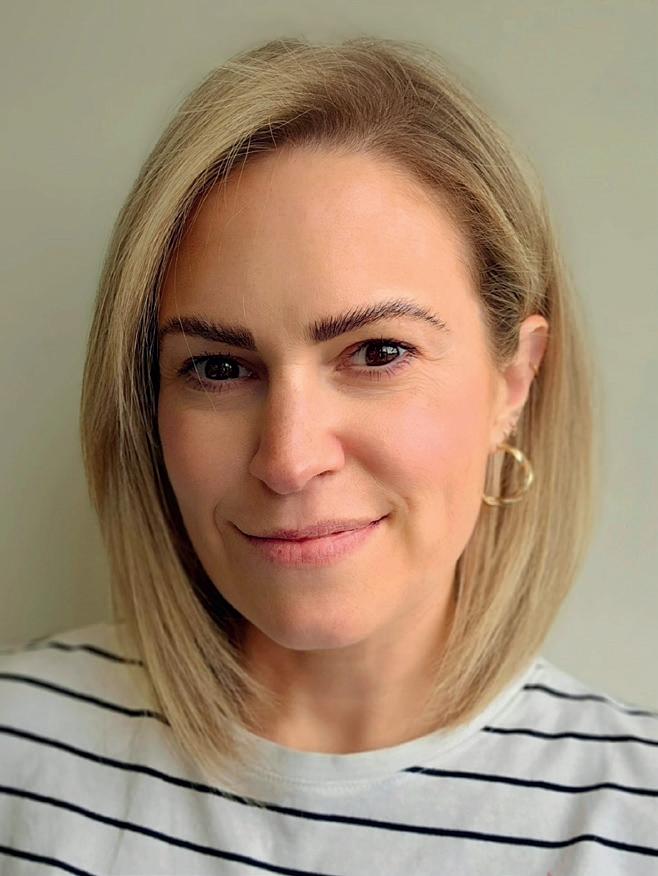
In her new role, Barritt will spearhead new client acquisitions and the expansion of existing client requirements, as part of the company’s wider growth strategy. She will also drive the company’s marketing activity and play an active role in the design and development of new retail lines.
“Blu Leisure is at a transformational point in its evolution,” Barritt said. “In response to operator needs, we’ve


developed a new ecommerce service providing a quick and easy means of ordering retail apparel and accessories around the clock.”
The number of public-use swimming pools in the UK continues to fall, according to the State of the UK Swimming Industry Report 2023, compiled by market intelligence expert Leisure DB.

The report also shows, however, that revenue streams at publicly-owned pools have been buoyed by surging demand for swimming lessons and adults wanting to swim – with the average adult pay-per-swim fee exceeding £5 for the first time.
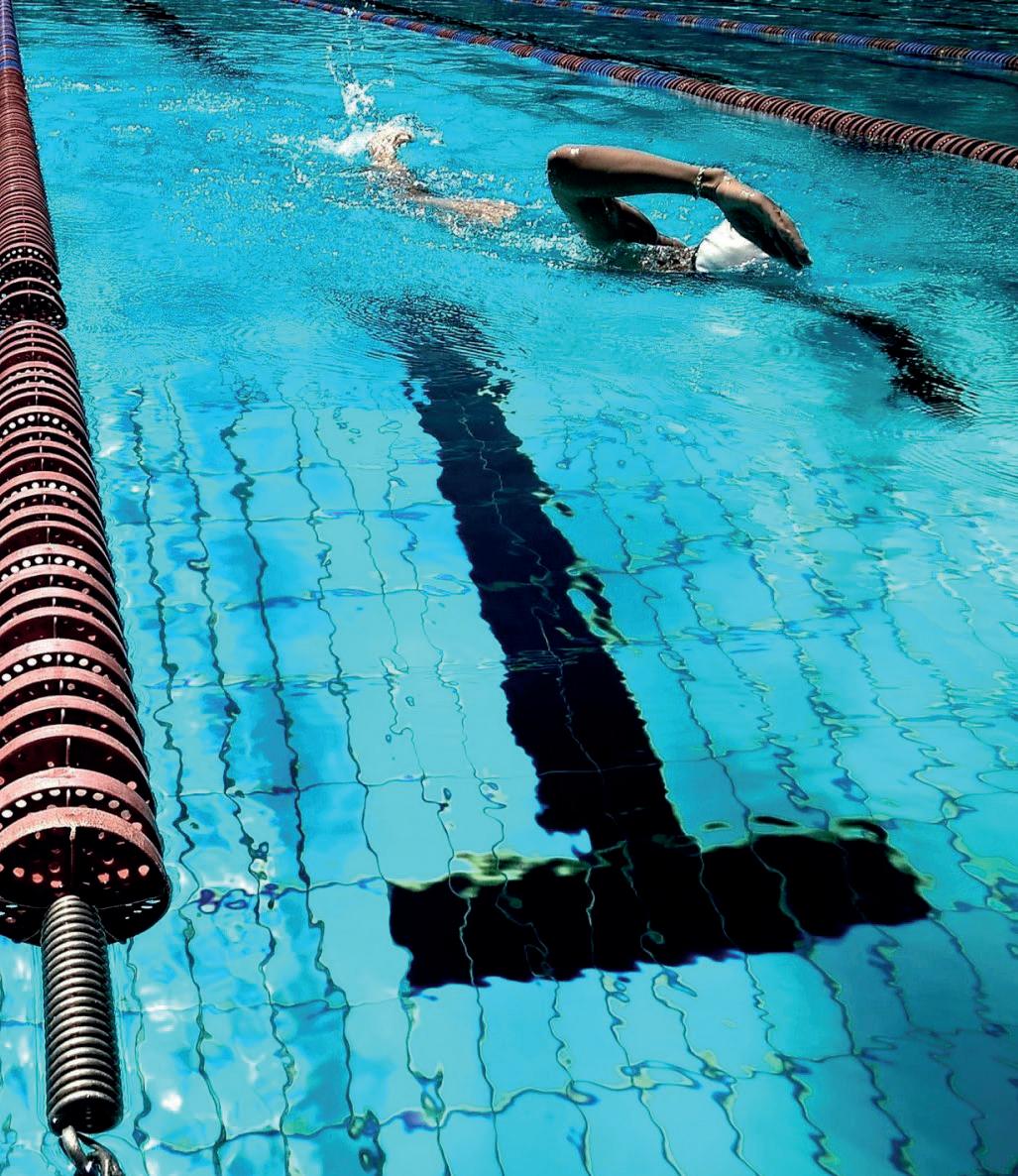
David Minton, Leisure DB founder and industry analyst, said: “The continued downward trend in pool stock is sadly to be expected as the longterm impact of COVID continues to make itself
felt, compounded by the significant repercussions of persistently high energy costs. Neither has government support been forthcoming; the application process for the funding announced in March is only just happening.

“What’s surprising in our 2023 figures is that we haven’t seen a more significant decrease in pool numbers: pool stock reduced over the past 12 months less than in the year directly following COVID.
• To order a copy of the report, visit: www. leisuredb.com/publications. SportsNation readers benefit from a 20% discount using promo code EARLYSWIM20.
Ukactive has published the latest chapter in its Vision 2030 strategy, setting out a number of new milestones for the year (2023-24) ahead.

In its Vision 2030 document, the industry body for the physical activity sector has an overall goal of getting five million more people active by 2030. Each year, it sets a number of milestones to guide its activities.
The new milestones identified for the 12 months ahead include working with a new property group to develop plans for high street renewal, and cross-sector collaborations with CIMSPA (Chartered Institute for the Management of Sport and Physical Activity) and the major business umbrella groups to help reduce
economic inactivity. It will also continue its work to promote the importance of sport and physical activity at Westminster.
“We will continue engaging with the major political parties in order to influence a range of policy

areas ahead of a General Election (set to be held by 28 January 2025), including progressing its policy work on economic regeneration and improving the operating landscape for growth,” ukactive said in a statement.

British Triathlon has launched its new Active Skills for Life initiative, which looks to introduce the sport to more children, while also addressing inequalities within PE and school sport.
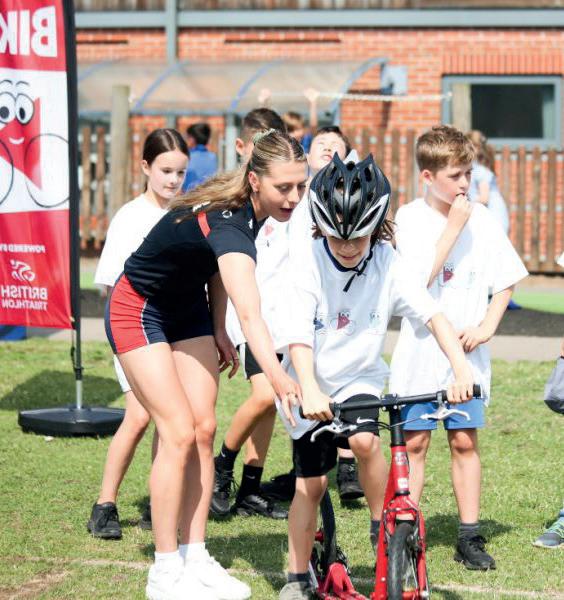
Offering a range of inclusive resources and activities, the programme aims to help children embrace an active lifestyle and develop physical literacy in the core life skills of swimming, cycling and running – the three aspects of triathlon.
As well promoting triathlon in schools, British Triathlon hopes the initiative will help tackle challenges in school sports provision.
Andy Salmon, CEO of British Triathlon, said: “We know that children can establish, build, grow and develop healthy habits from a young age.
“Active Skills looks to address inequalities within PE and School Sport provision at Key Stage Two.”

English cricket is in need of “urgent reform” in order to tackle “deep-rooted and widespread institutional, structural and interpersonal discrimination across the game”.
The call comes after a landmark report – published by the Independent Commission for Equity in Cricket (ICEC) – found that racism is “entrenched” in cricket and that women are marginalised and “routinely experience sexism and misogyny”.

The Holding Up A Mirror
To Cricket report is based on responses from more than 4,000 people and lays bare the extent of game-wide failings. The responses were supplemented by primary research, literature reviews, written and oral evidence from hundreds of individuals, counties, women’s regional teams and wider organisations linked to cricket.
The ICEC sets out 44 recommendations to transform the game’s culture and to redesign governance.
The Football Association (FA) is joining forces with the Premier League to launch a new Stadium Accreditation Programme for clubs that play in the National League System.
As part of the new initiative, the Premier League Stadium Fund will begin collecting ground-grading data for The FA at all of the stadiums used within the National League System.
The process will be digitised through the creation of a new digital tool, StadiumPower. StadiumPower will enable The FA to have a holistic view of the quality of facilities across the game for the first time and will allow it to be better placed to understand some of the challenges that both
clubs and leagues face nationwide.
“StadiumPower will provide far greater insight about stadiums which will help ensure the league’s investment is directed where it is needed the most,” the FA said.
“The new digital process will also allow clubs to keep track of the works required to their facility, as well as provide them with a live platform to report on any changes or improvement works that are carried out at their stadium.”
The rollout of the new programme will begin in July with
the aim of assessing every stadium across the country by the end of the year. More details on the rollout plan of the new process and when each stadium will be visited will be shared with clubs and leagues over the coming weeks.

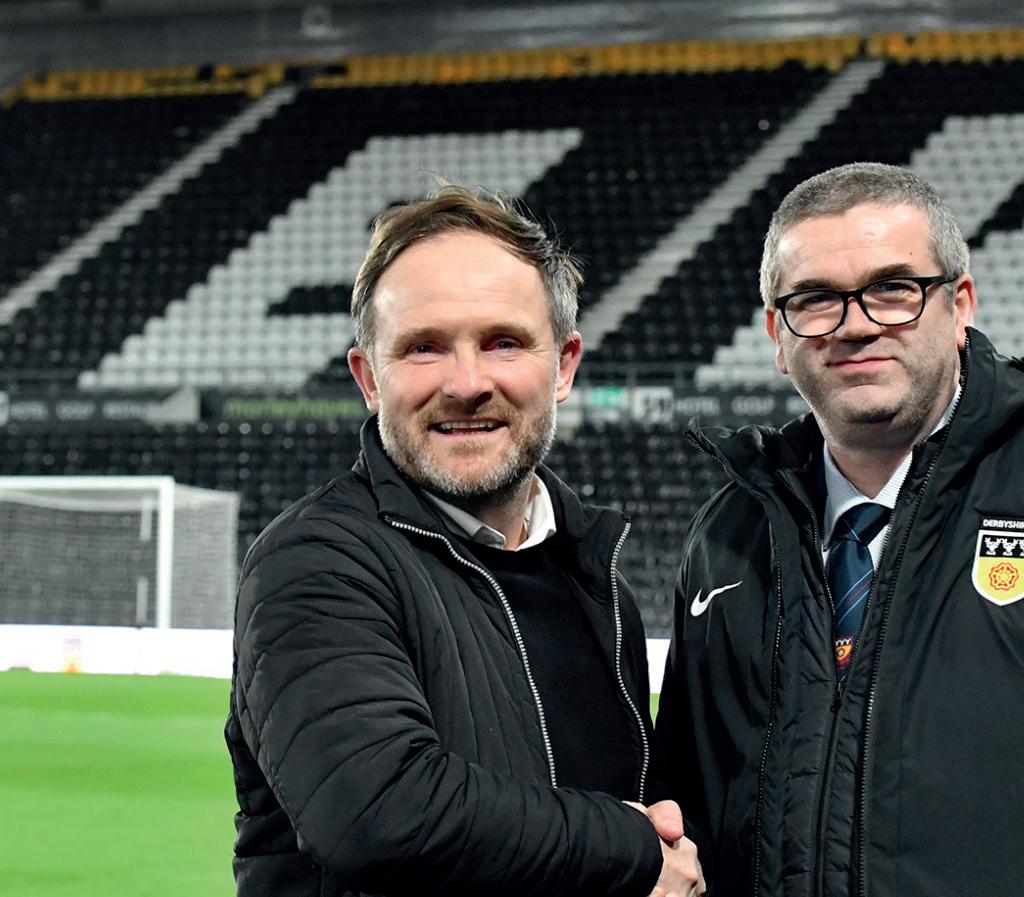
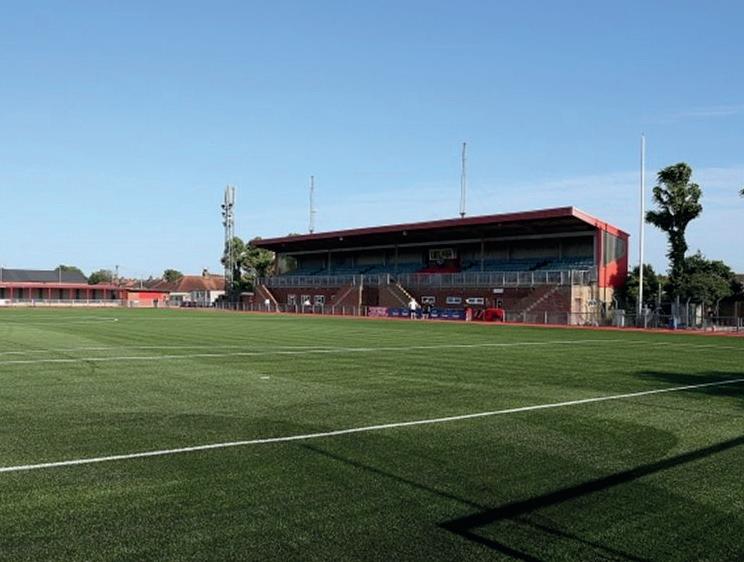
Derbyshire FA has extended its partnership with synthetic sports pitch maintenance specialists, Replay Maintenance, for a further three years.
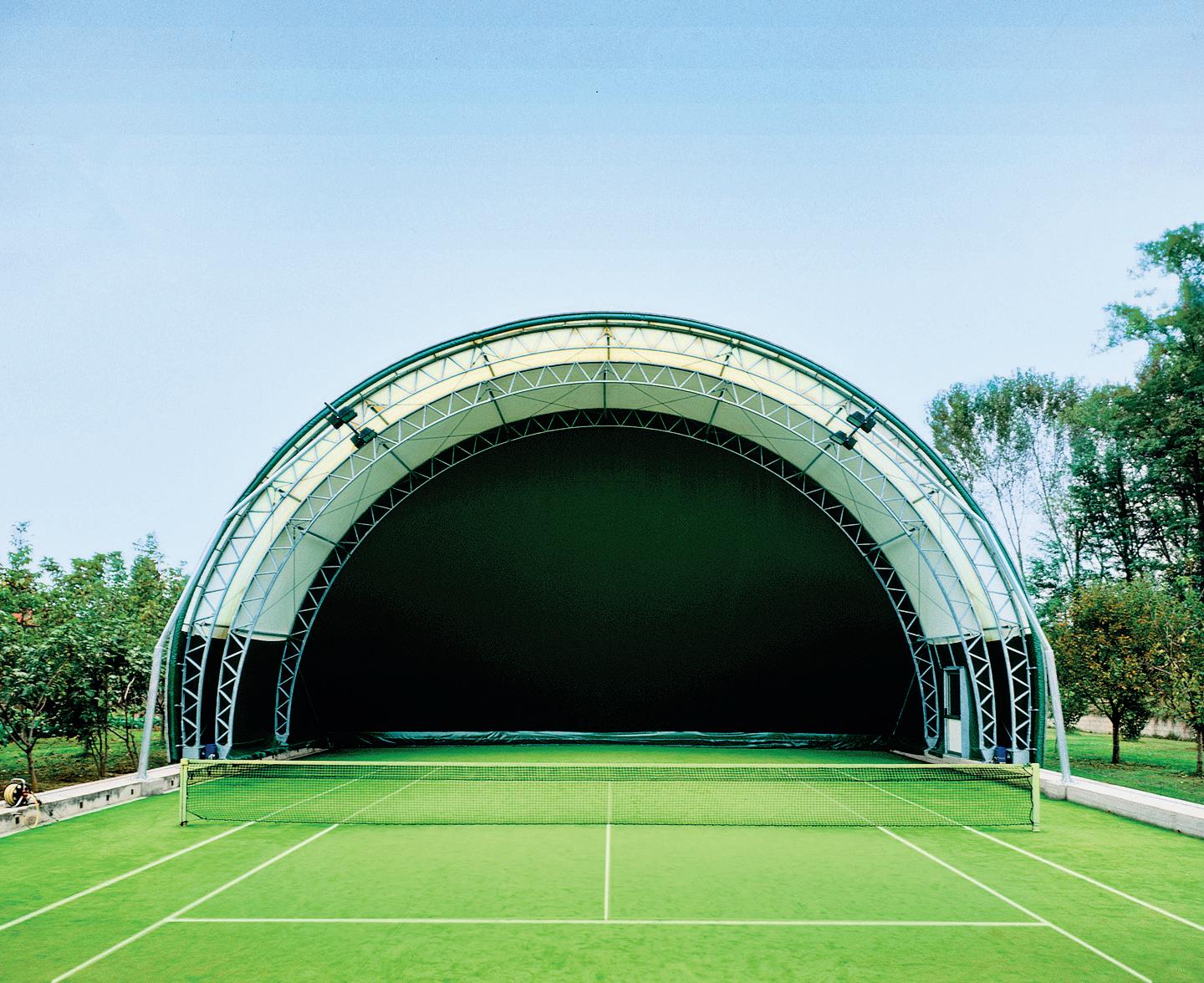

The partnership will see all Derbyshire FAbased 3G Pitch owners, managers and operators benefit from free pitch inspections and reports, discounted specialist annual maintenance contracts, an emergency callout service, pitch repairs, infill top-ups, line marking, weed treatments and FA appeal works. Derbyshire FA will also have access to Passport365 – an asset management tool developed by Replay to optimise operations of sports and leisure facilities.
The partnership will also see the two organisations design bespoke, in-house training courses.

All our structures conform to the relevant building codes and we are SAPCA approved.

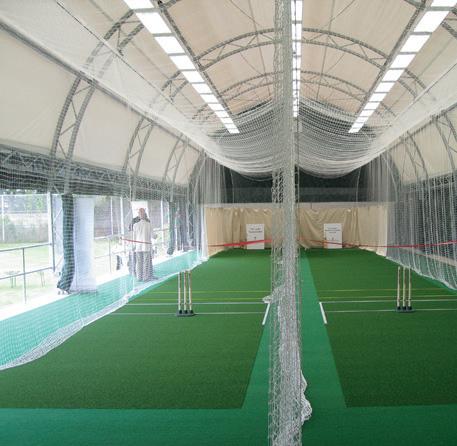







Work is now underway to reintroduce swimming facilities to the residents of Merthyr Tydfil, Wales, after structural damaged closed the town’s pool in 2019. Merthyr Tydfil County Borough Council has secured £6m worth of investment to fund the project, which is being carried out by Alliance Leisure through the UK Leisure Framework.
The recommissioned facilities at Merthyr Tydfil Leisure Centre are expected to reopen to the public in the autumn of 2023 and will provide residents with a 25m, six-lane main pool, a dedicated teaching pool offering a full swimming education programme plus a new splash pool designed to inspire water confidence and deliver engaging sensory experiences for toddlers.

The changing facilities will also be updated and redesigned to improve the overall visitor experience.
Gillian Dunster, Business Development Manager, Alliance Leisure, says: “These works will not only give the people of Merthyr
Tydfil access to a local swimming pool for the first time in four years, but will also help Merthyr Tydfil County Borough Council to meet its carbon reduction ambitions to benefit the community both now and in the future.”
Horizon Leisure has transformed a former Sports Direct gym in Guildford into a health, fitness and wellbeing facility.


Horizon Leisure – the charitable trust which manages Havant and Waterlooville Leisure Centres in Hampshire – invested £1m in the facility, which it acquired earlier this year ahead of its reopening this month. The 9,000sq ft building has been completely refurbished. Work included fitting the centre’s large gym area with highspecification equipment supplied by Life Fitness.
Facilities at the centre include a studio space for group exercise classes and an indoor cycling studio. There is also a new sauna and steam space and a refurbished pool with changing facilities. The move forms part of Horizon’s strategy to acquire new sites and expand its portfolio.
Leisure facility operator, Parkwood Leisure, has partnered with fitness software specialist, Fitronics, to improve accessibility to swimming courses at venues managed by Parkwood and its partners, Legacy Leisure and Lex Leisure.
The new solution permits parents and carers to add children to a specific waiting list for swimming lessons that take place at a time and location that best suits them.
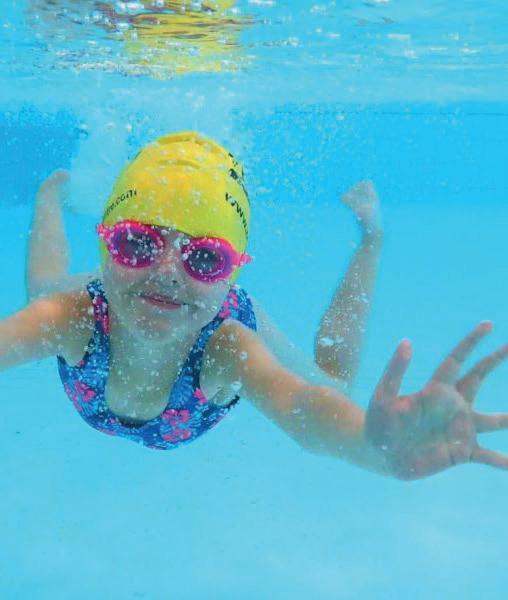
Users are then notified when a space becomes available and the lesson can then be booked directly within Course Pro, the sports and swimming course management tool provided by Fitronics.


Available across Parkwood Leisure’s (and its partners’) 60 venues across England and Wales, the solution is part of Parkwood’s commitment to improve access to essential water safety skills within its communities.
Alex Godfrey, Operations Director at Parkwood Leisure, said: “The new swim waiting list feature of our Course Pro tool is groundbreaking within our sector.”
The solution looks to improve accessibility to swimming courses at Parkwood’s venues

The government’s Swimming Pool Support Fund is now open to applications from local authorities with pools in their area.
The £20m revenue fund closes on 11 August, with an additional £40m pot for capital investment set to be made available in September, to help make facilities more energy efficient.
Announced as part of the Spring Budget, the £60m fund is split into two pots. The initial £20m that has opened for applications is aimed at helping facilities with swimming pools that are most vulnerable to closure, or significant service reduction.
The remaining £40m will be made available in September and will be for investment to improve the energy efficiency
of public facilities with pools in the medium to long term.
Local authorities will be required to apply on behalf of the eligible pools in their area, with the revenue funding element closing on 11 August.
The fund will be managed by Sport England, whose CEO, Tim Hollingsworth, said: “While this funding cannot support all pools in England, it is a significant level of one-off support to contribute to the pressures being felt.”
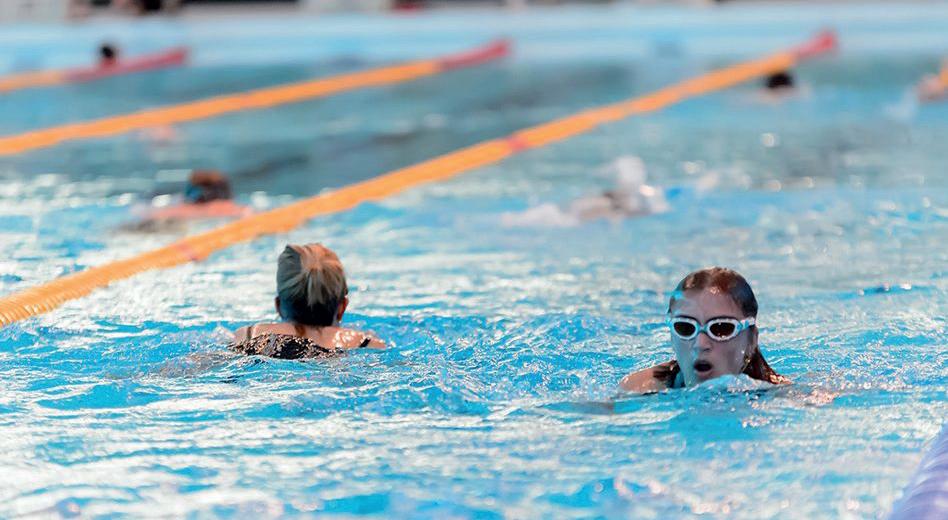
Every £1 spent on sport and physical activity in England returns £3.91 of social and economic value.

The figure comes from a progress report on Sport England’s strategy, Uniting the Movement. The report charts how Sport England and its funding and programming are performing, as the sports body heads into year two of its second implementation plan.
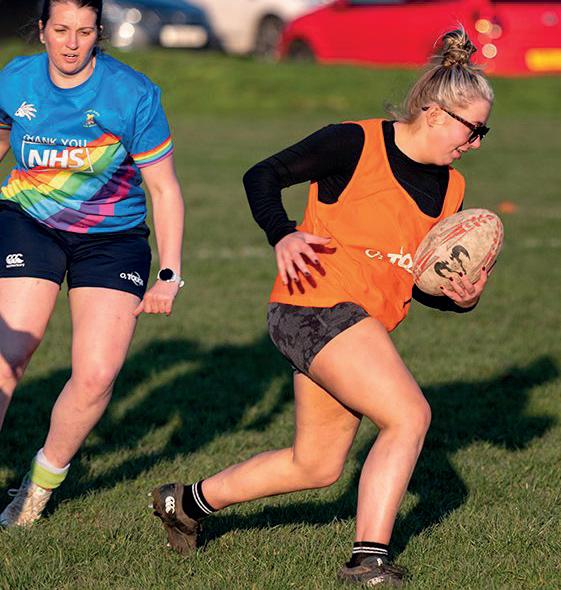
According to the report, England now has record high physical activity levels – with 1.02 million more active adults when compared to last year. Other headline figures include a 1.4% increase in children in Years 3-6 reporting three or more positive attitudes to sport and physical activity.
When it comes to facility development, the report shows that Sport England has funded 250 football and multi-sport pitches over the last quarter.
There is now a record number of active adults in England







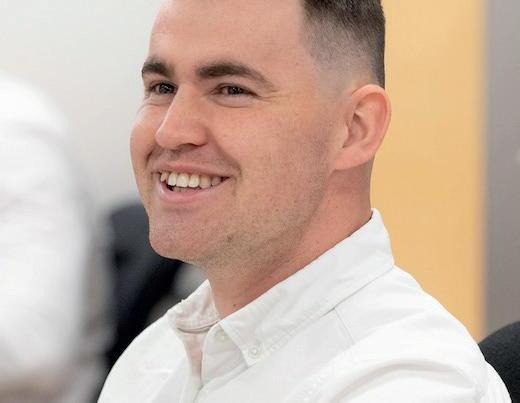

Hundreds of thousands of children are missing out on swimming lessons due to the shortage of swimming teachers, according to new research conducted by the Swimming Teachers’ Association (STA) and Swim England.

The two leading learn-to-swim programmes joined forces to conduct an audit of the aquatics sector that found that 65 per cent of swimming lesson providers are restricted from growing their programmes due to the swimming teacher shortage.
As a result, the two organisations said, up to 660,000 children could be missing out on swimming lessons and “may never learn a skill that could one day save their life”.
The research shows that, of the 73,000 swimming teacher roles
There is a shortage of 12,000 swimming teachers in the UK
available across the aquatics sector, almost 12,000 are currently vacant and unfilled. This means that the sector is down by more than 15 per cent on its total workforce.
Jane Nickerson, Swim England CEO, said: “No one should miss

out on the opportunity to learn to swim and if the issue of teacher shortages is not addressed, it will have a lasting impact on the sector.
“We will continue to work to make the routes into teaching more accessible and inviting.”
The UK has fewer gyms in 2023 than in 2022, but member numbers are up and market value has reached an all-time high. The insight comes from the State of the UK Fitness Industry Report 2023, unveiled by market intelligence expert Leisure DB.
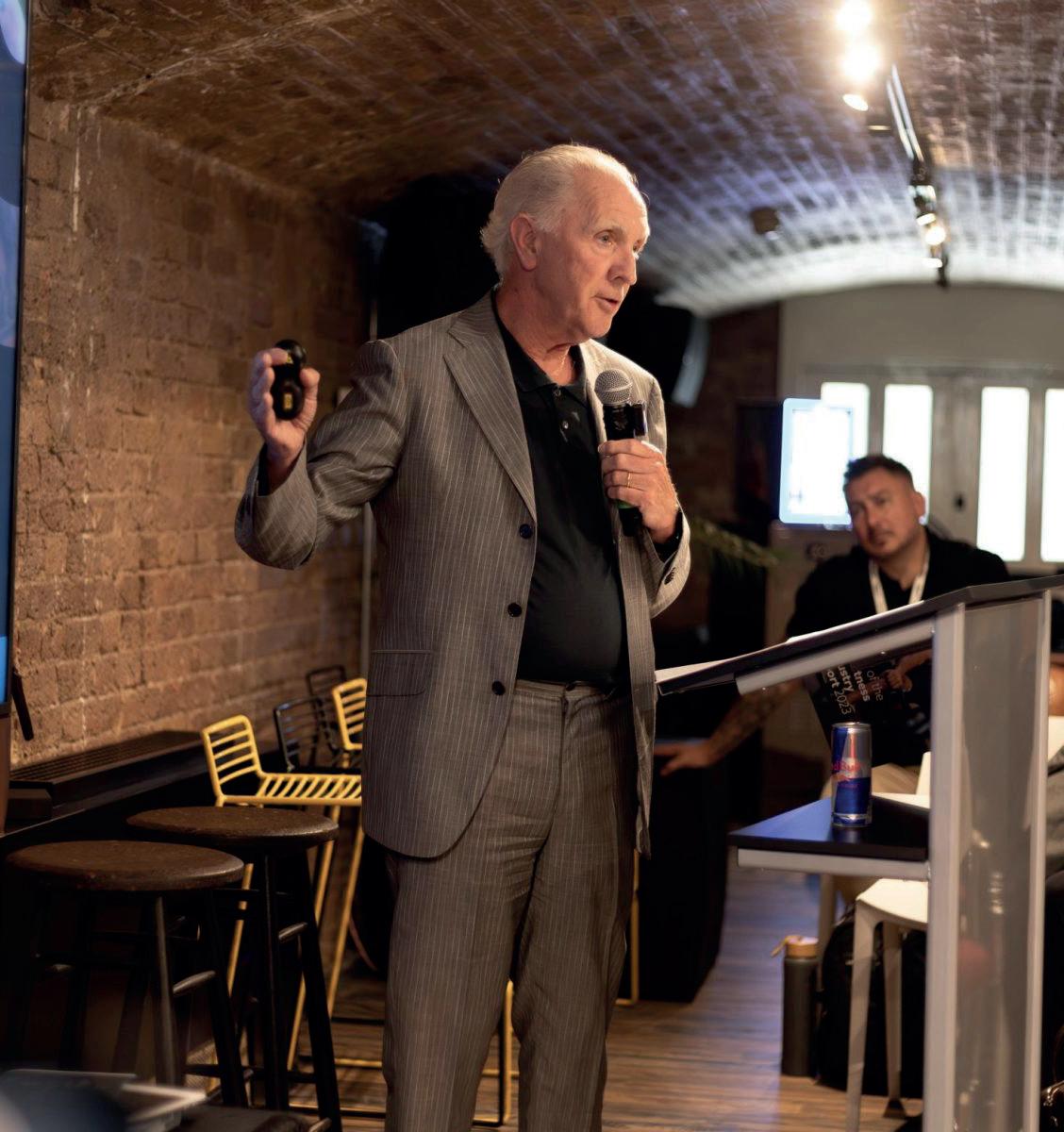
As the UK market continues to bounce back from the effects of the pandemic, member numbers are up 3.9 per cent versus 2022 – this in spite of a 0.9 per cent fall in total club numbers.
Penetration rates are also recovering, with 15.1 per cent of the UK population now a member of a gym.
Figures show that 10.2 per cent are members of private health clubs, while the public sector has a 4.9 per cent penetration rate.
While still falling short of pre-COVID highs, both figures are, According to Leisure DB, now “moving in the right direction”.

Coloured, two part adhesives for artificial grass tennis courts


















CLAY GRASS




SAPCA member, Dynamik, has secured an extension to its role as “Official Sports Flooring Partner” with British Wheelchair Basketball (BWB), the governing body for wheelchair basketball in the UK.
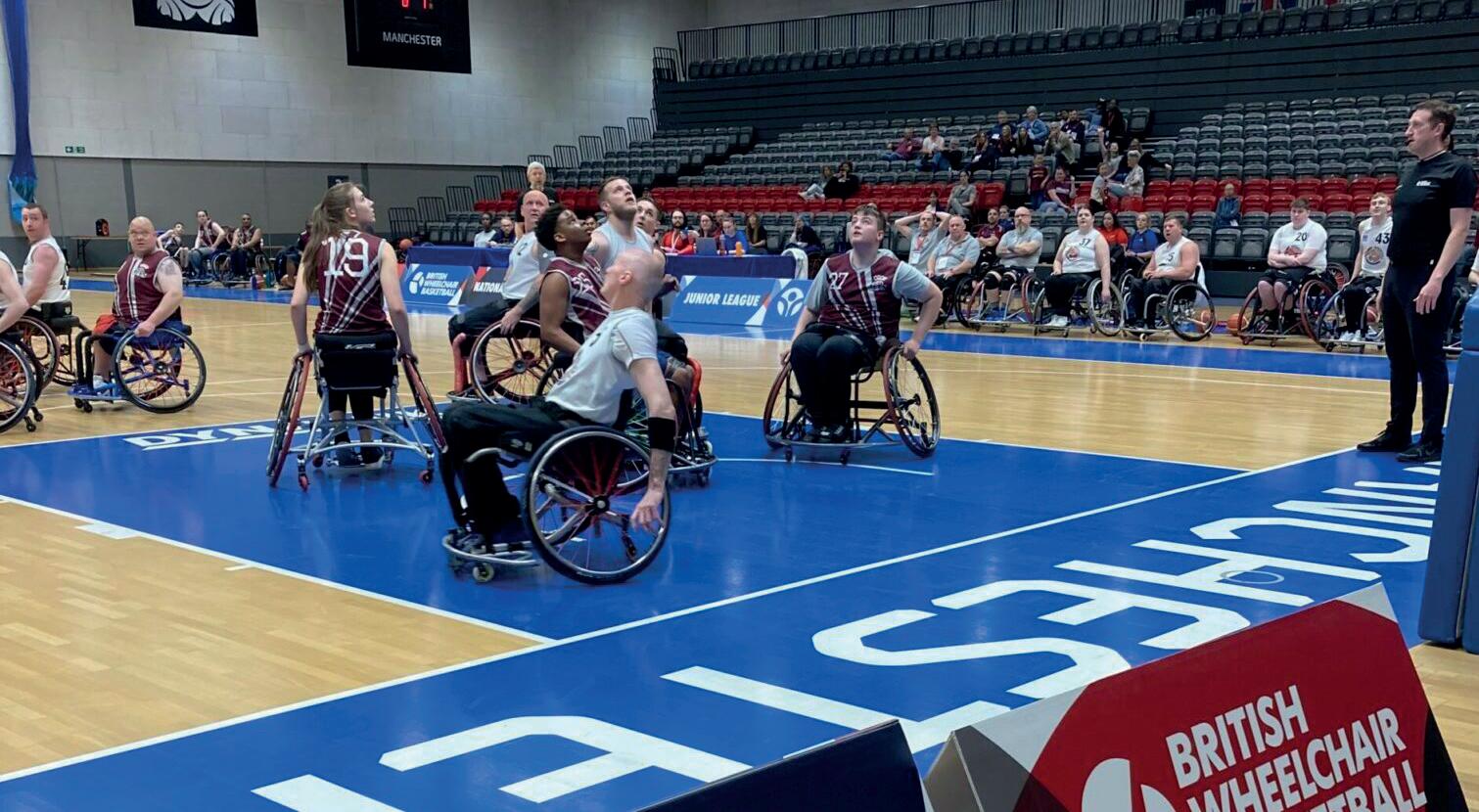
Dynamik has worked with BWB over the past five years, ensuring flooring solutions support inclusivity and are accessible for all users of sporting and non-sporting spaces.
The partnership extension comes at an exciting time for BWB, particularly for the GB teams, which recently returned from the IWBF World Championships in Dubai, after winning silver medals.

Craig Jack, managing director of Dynamik, said: “To be asked to extend our partnership beyond the Paris Olympic and Paralympic
Games really says a lot about the trust BWB has in our advice over the past five years.
“We have certainly changed the way in which the UK looks at playing surfaces, in particular the interaction a surface has on
wheelchair users rolling resistance, user fatigue and muscle strain, when not installing ideal playing surfaces. We look forward to working with the BWB team and seeing what we can accomplish together in the future.”
Play Innovation has launched a new range of games, designed to utilise the available space, such as corners and other “dead spaces”, within multi-use games areas (MUGAs), play areas and ballcourts.

The revolutionary new Corner Skills have been created in collaboration with sports coaches and young people to encourage children to get active in creative ways. The selection of games – ranging from noughts and crosses to cricket and target games – inspire children to be physically active and also encourage them to use their imagination to create their own versions of how to play the games.
Marco Boi, founder of Play Innovation – a SAPCA member company – said: “Too often, we see MUGAs, Playzones and ball courts being underutilised. With Corner Skills, facility owners can add entirely new activity areas to their play spaces.”
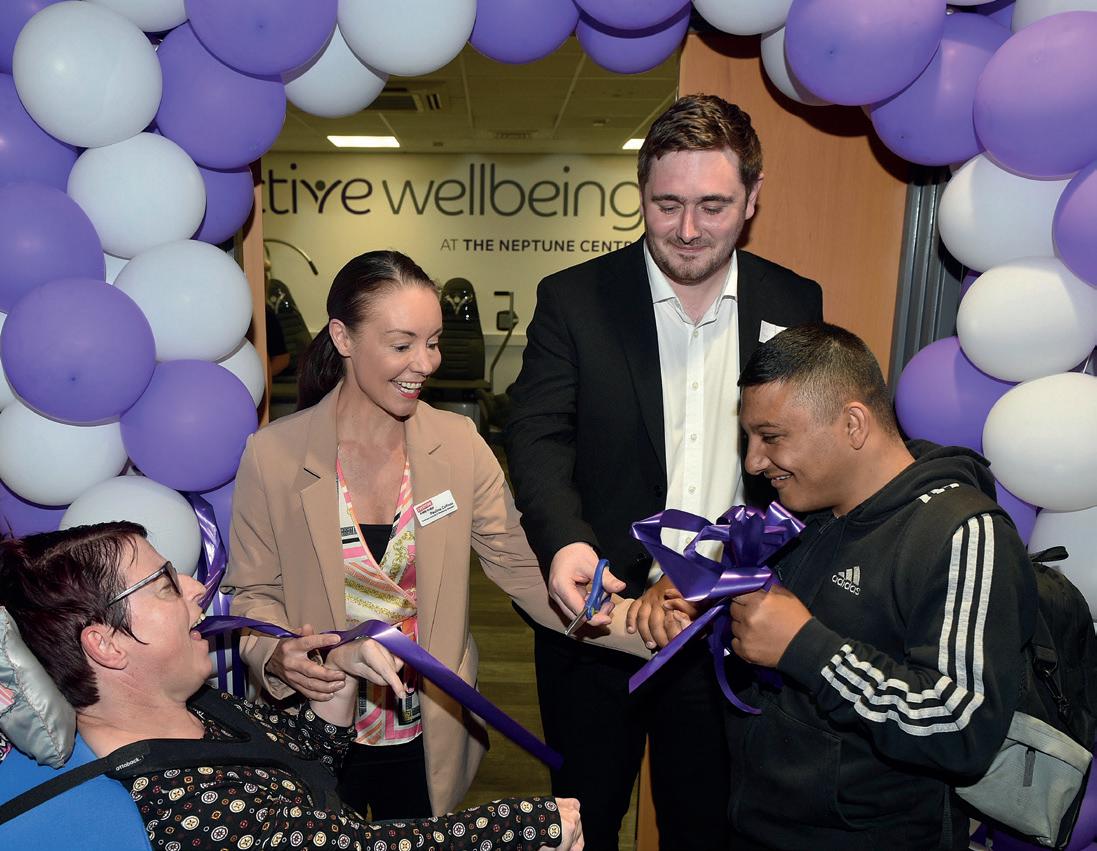
Everyone Active has launched a new exercise studio concept, designed to tackle health inequalities in local communities. The first Active Wellbeing Suite opened in Middlesbrough this month and will support active ageing initiatives and other exercise-based programmes aimed at dealing with long-term conditions.

Developed in conjunction with power-assisted fitness equipment specialist, Innerva, the new facility at Middlesbrough’s Neptune Centre utilises Innerva’s machines to empower individuals to improve their fitness and strength in a supportive and social environment.
The Active Wellbeing Suite comprises a circuit of 10, fully-

accessible machines, each targeting a specific muscle group. The power assistance nature of the equipment means users don’t have to rely solely on their muscles to complete the exercises and can determine how much assistance they need and reduce this as their fitness and strength improves.
Designed to be inclusive, the facility can be used by anyone, regardless of mobility issues or fitness level. It caters for a wide range of needs and conditions, including mobility limitations, obesity, high blood
pressure, back pain and joint problems. Individuals with health conditions such as strokes, MS, muscular dystrophy, Parkinson’s, cerebral palsy and arthritis can also benefit from the suite.
After a number of years spent planning to add a synthetic turf pitch to its facilities, a Lancashire-based school turned to SAPCA member, Surfacing Standards Limited (SSL), to help turn its vision into reality.
Bowland High School in Grindleton had struggled to provide physical education (PE) for many weeks of the year due to a steeply sloping landscape and excessive ponding during wet weather. SSL, a sports pitch consultant, carried out a review to identify a location for a 3G synthetic turf pitch – ultimately securing planning permission.
“The result is incredible, a huge asset to the school,” said Bowland’s Operations Manager, Helen Dakin.


SAPCA member, Midstream Lighting, has completed a floodlighting upgrade at Stoke City FC’s home ground, Bet365 Stadium.
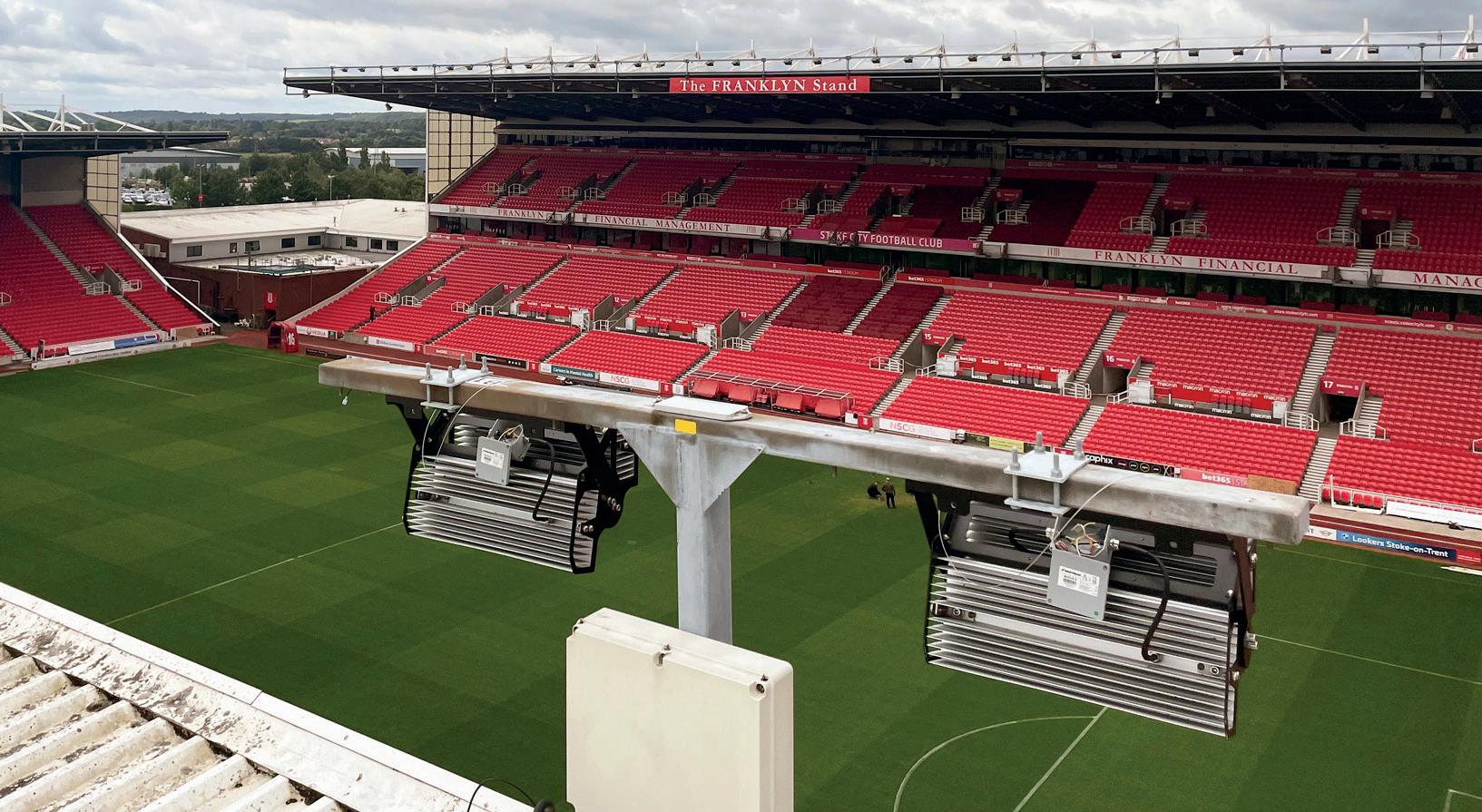
The new LED system – designed and manufactured by Midstream – includes a total of 104 energyefficient floodlights which will enhance visibility across the entire stadium and substantially reduce power consumption. While delivering the Premier League specification of 1,650 Lux, the system also reduces power usage from 528 kW used by the previous system to a mere 255 kW.

Stoke City Managing Director, Richard Smith, said: “The Club is constantly overseeing a rolling programme of infrastructure projects to keep our stadium ahead of the game in terms of the
facilities we offer. Updating the floodlighting system this summer forms the latest progression in that cycle. The options it gives us, and the power efficiencies it provides, point to it being a wise and necessary investment.
“Tackling such significant projects during such a short close season window can be immensely challenging. Midstream Lighting have met that challenge and brought it to a timely conclusion in time for the new season.”
The Swimming Teachers’ Association (STA) STA has launched a new job advertisement board called ‘Jobs in Leisure’, free for all employers, in the UK and internationally, to use to promote their job vacancies.

Hosted on STA Online, or accessed via searching jobsinleisure.com, employers will be able to register for free and upload available vacancies, add detailed job descriptions and contact information – and personalise each post with company logos.
The system also features a social sharing tool, to help employers share their vacancies across social media platforms. For people looking for a job, Jobs In Leisure’s postcode search facility will be hosted on the public STA website (and via STA Online) – STA will also be supporting with digital / SEO marketing.
Cost effective alternative to traditional building with low running costs.

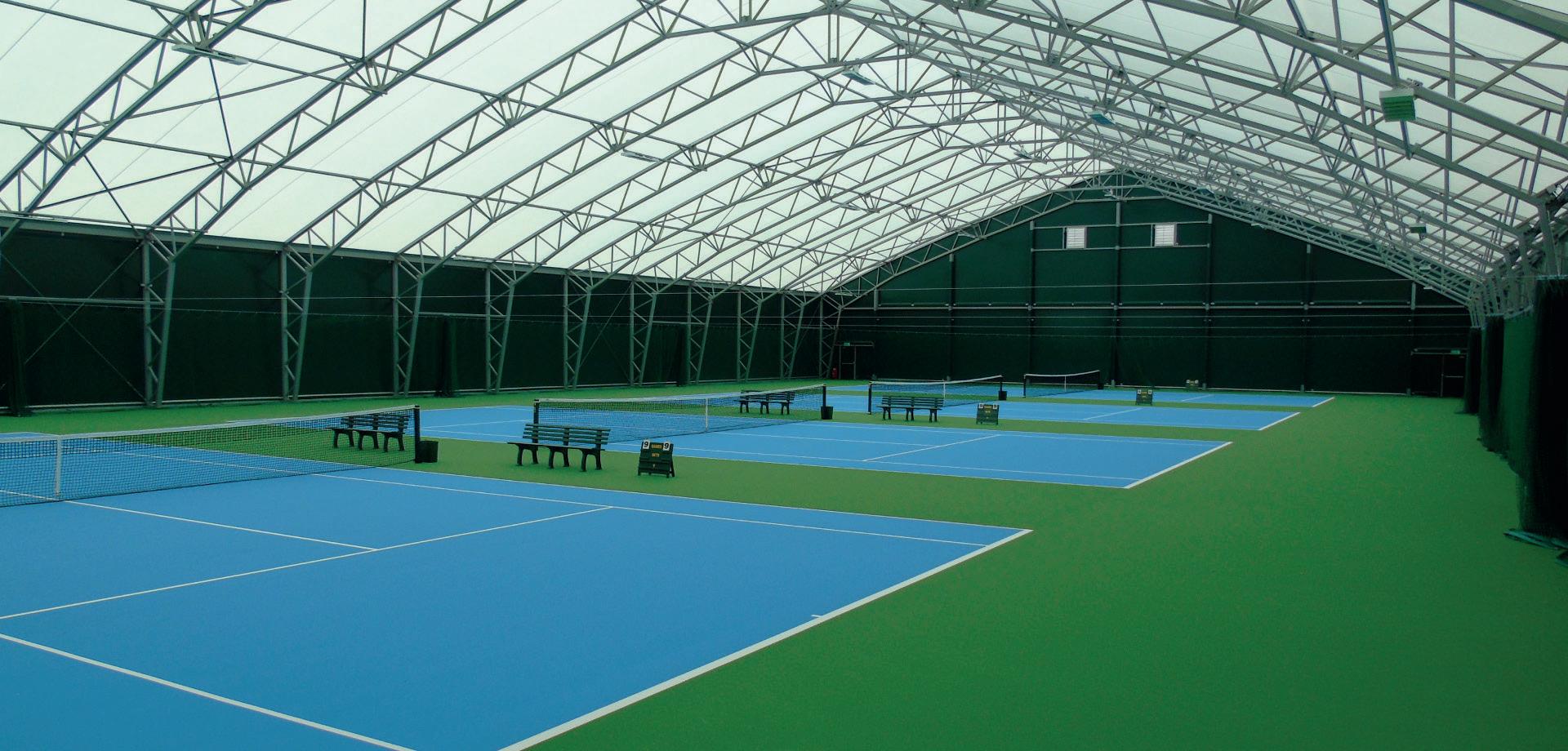
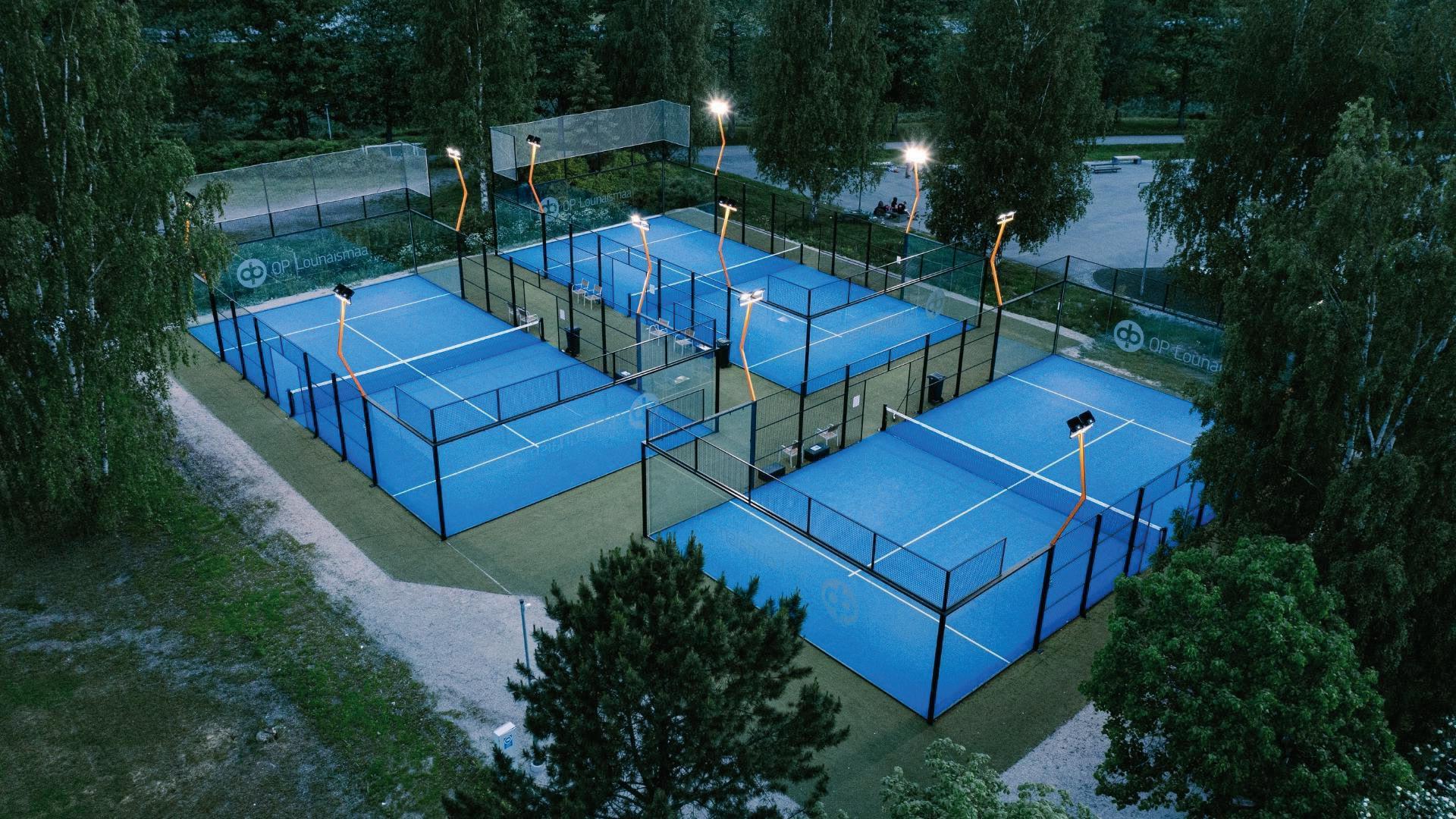
Rocklyn have partnered with Spanish manufacturer Padel10 to deliver this exciting and fast growing sport to the UK & Ireland.
Salo, Finland

Rocklyn provide the market leading Veldeman system, offering a wide range of versatile styles, tailored to meet customer’s needs.
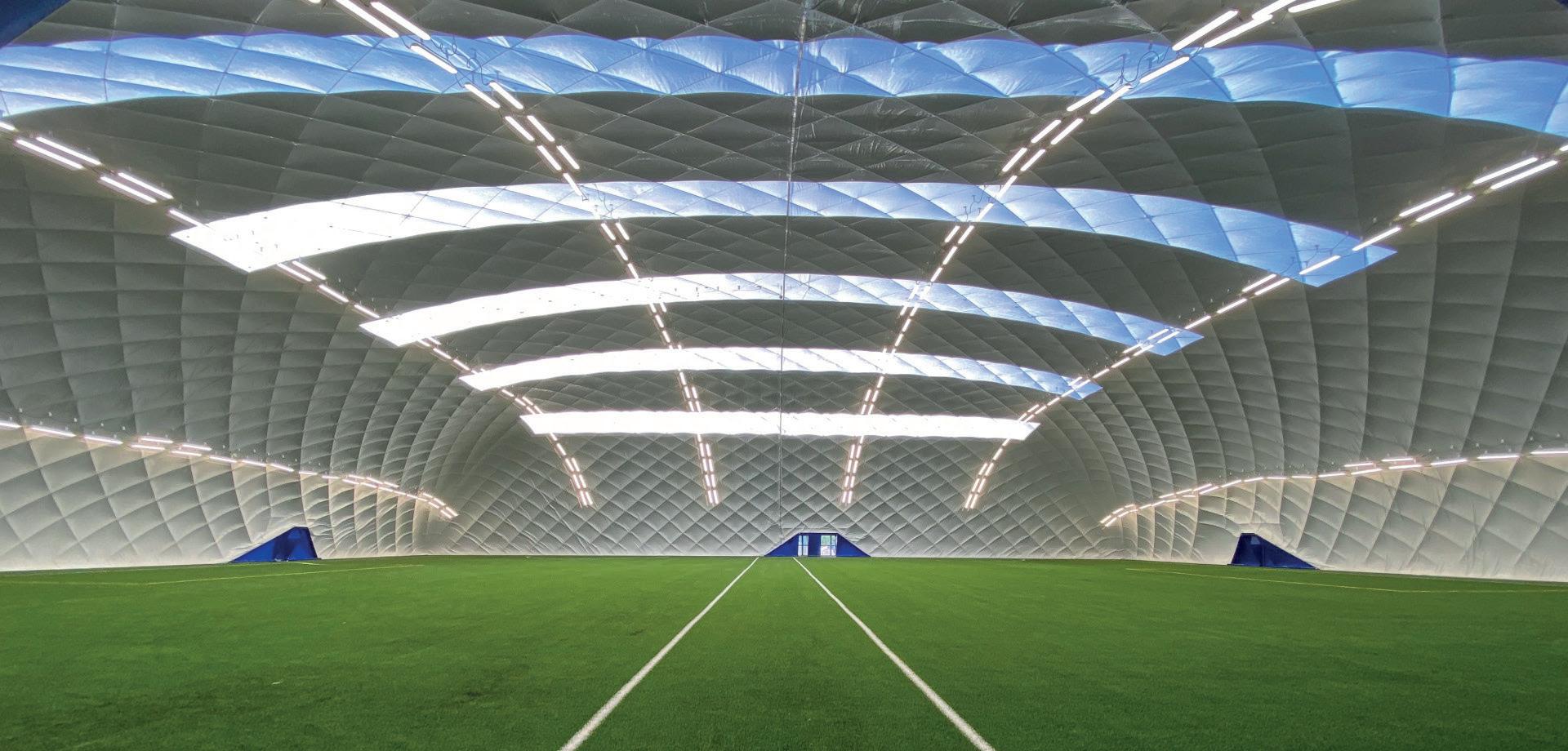
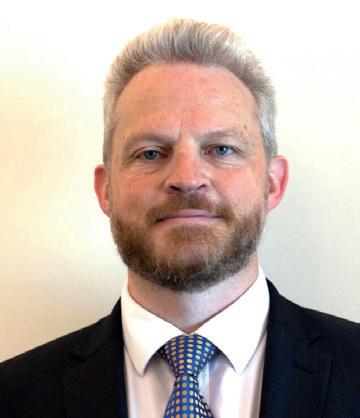

The BASIS Sustainable Sport Awards are back in 2023 and will take place at The All England Lawn Tennis Club, home to the Wimbledon Tennis Championships, on 7 November 2023. Last year’s event, hosted at Chelsea’s Stamford Bridge, saw SAPCA members tiger up! and Sportex Group win in the Product Innovation category for their closed loop recycling facility for artificial grass sports pitches.

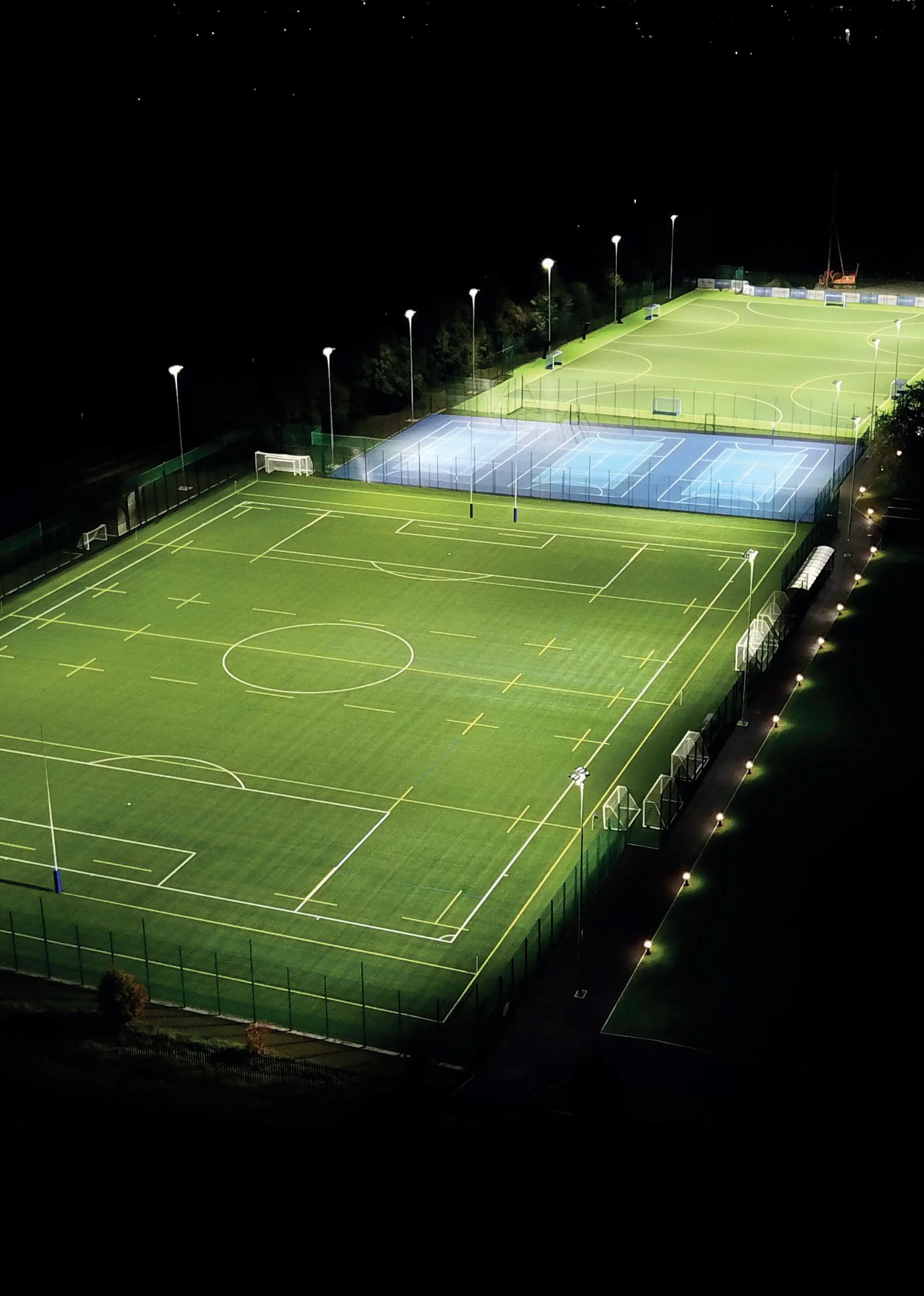
The BASIS Sustainable Sport Awards are free to enter and nominations are now open. Those shortlisted will receive one free ticket to the lunch event – and we
welcome nominations from everyone. Awards will be given for the best sustainability initiatives that show innovation, impact, and performance across any of the BASIS Sustainable Sport 12 Principles including environmental, social and economic dimensions of sustainability (you can read more here: basis.org.uk/about/12-principles/). Submissions are accepted both for an organisation and for individuals within an organisation – and will be spread across the following categories:
l Strategy of the year – showcasing the best in strategic leadership

l Innovation in Initiatives and/or Products (including use of data and analytics)
l Partnership of the Year
l Transformation Award
l Campaign of the Year - Impact, Engagement and Education
l Team of the Year
l Rising Star – is there anyone in your team who has made great strides this year?
l Special Recognition – for someone deserving of recognition for their longterm commitment to sustainability
Multiple submissions are welcome and no project is too big or too small. What we’re really interested to hear about is how and why the initiative was conceived, the impact it had, and what made it important to your organisation.
Winners and runners-up will also be offered the opportunity to present a case study on their project at future BASIS webinars. The closing date for submissions is 29th September 2023. For more information and to enter, visit the BASIS website: https://basis.org.uk/events/basis-awards
Early bird ticket rates are available



With over 6 decades of experience and completing more than 300 sports lighting projects a year, our team are on hand to bring light to your pitches, courts and indoor facilities

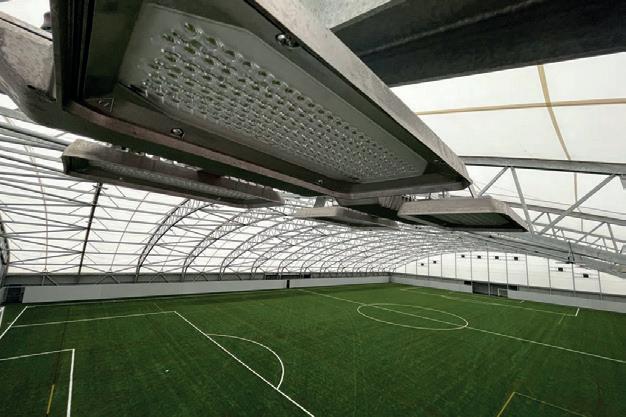
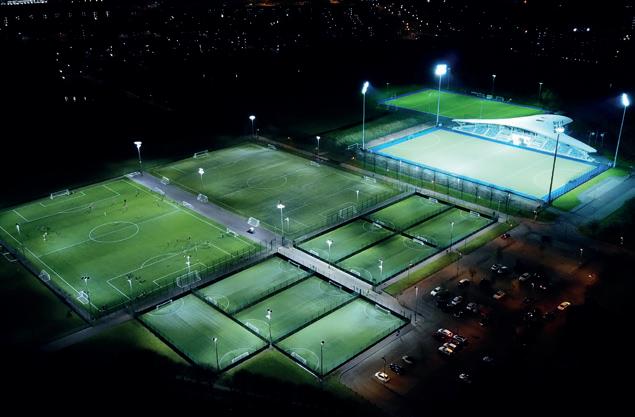


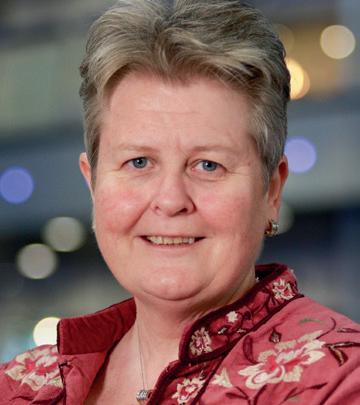
In April, the government and the Sport and Recreation Alliance published the first UK-wide Concussion Guidelines for Grassroots Sport. The guidelines were introduced to help players, coaches, parents, schools, national governing bodies and sports administrators to identify, manage and prevent the issue, with the overall message being – If in doubt, sit them out.

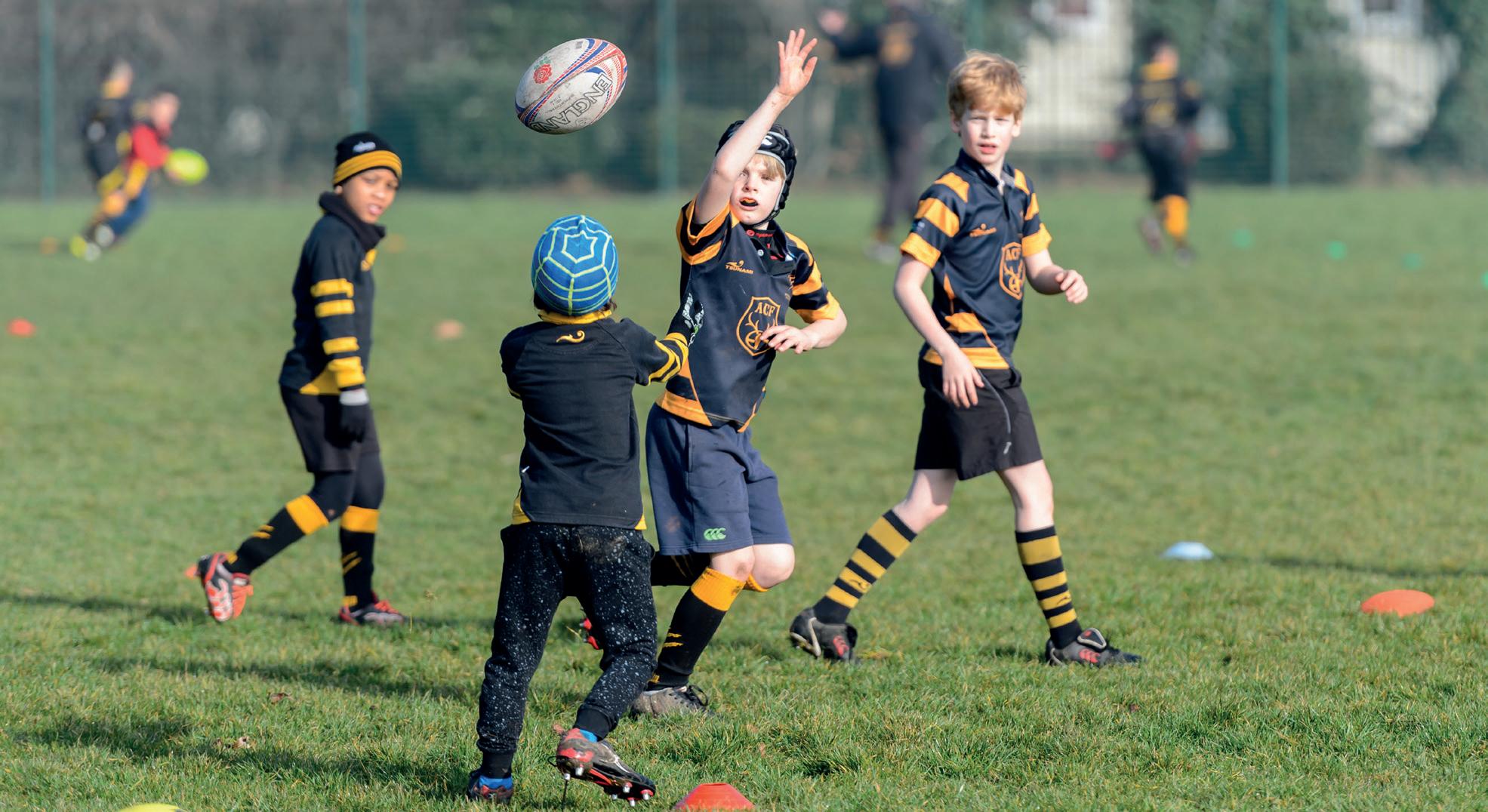
Recently, the alliance convened two online learning sessions for its members, the first being an opportunity to hear from the experts behind the guidance, highlighting why the guidelines were introduced and the evidence to support it. The second session outlined the practical implications of organisations developing their own tailored framework for the activity they deliver, with Howden and Gateley Legal on hand to discuss the legal and insurance-based factors.
As a membership organisation representing almost 300 members from across the sport and recreation sector, concussion is one of the most significant topics we need to tackle. Whether it’s football or rugby, dance
or climbing, concussion is an enormous issue impacting everyone. It is therefore imperative that governing bodies, active partnerships, sport for development charities and other membership organisations are aware of the new guidance, why it has been introduced, and how best to implement it in their own activities.
Concussion is a serious issue and we must always strive to make sport as safe as possible for all those who take part at a grassroots level in clubs, schools and many other settings every week across the UK.
We’re pleased to have supported the development of these guidelines which will ensure there is a consistent, evidence-based approach to concussion in sport across all four home nations. When it comes to concussion, the message is clear: if in doubt, sit them out.
“WHEN IT COMES TO CONCUSSION, THE MESSAGE IS CLEAR: IF IN DOUBT, SIT THEM OUT”The new guidelines aim to help clubs, coaches and parents to better prevent concussions © SPORT ENGLAND
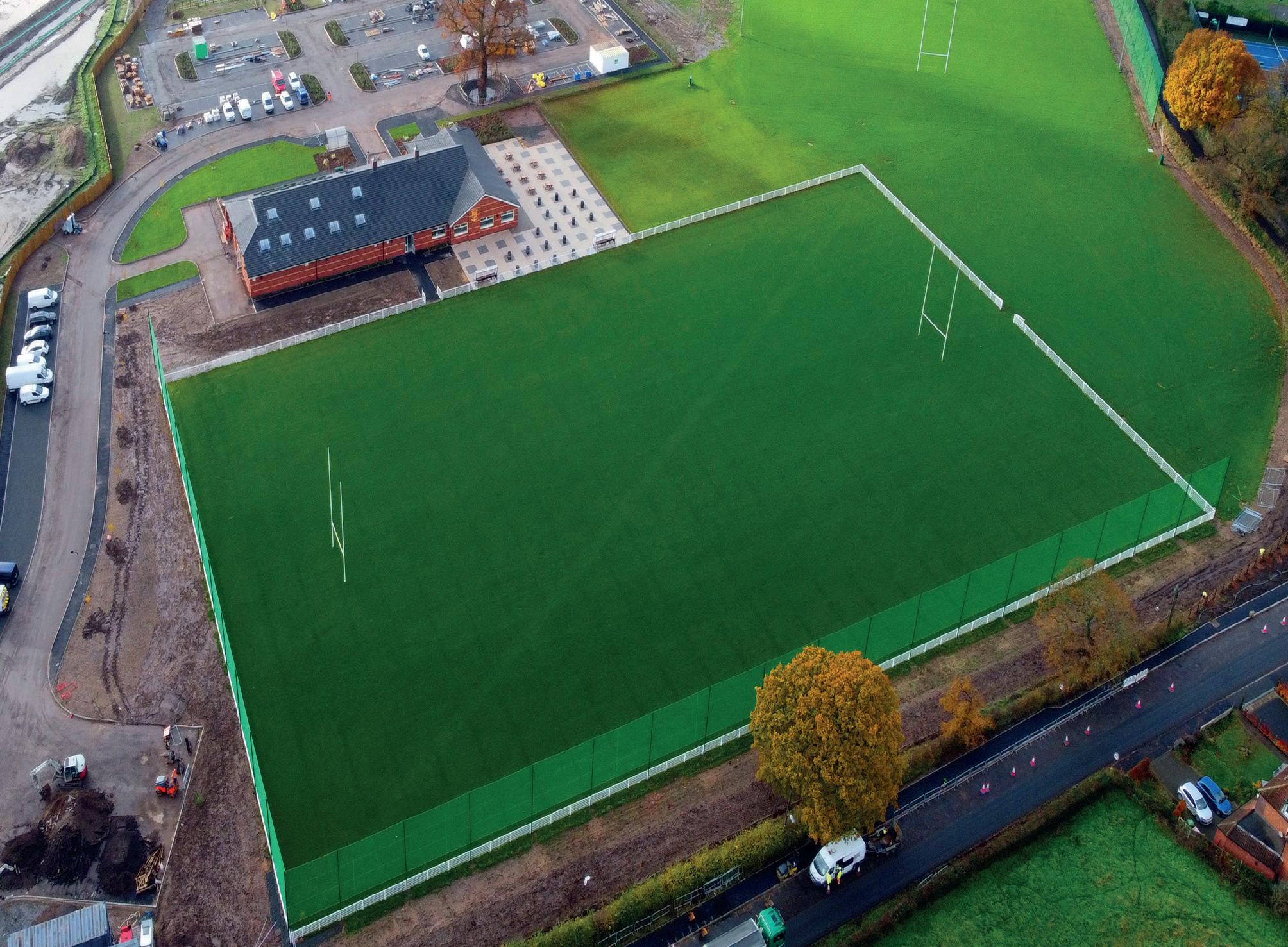
















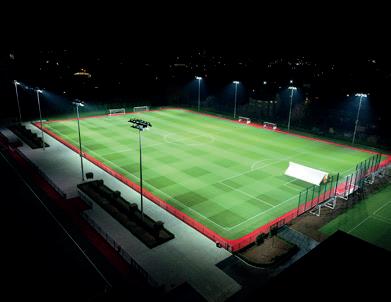


want us to play high up the pitch and condense the space. Let’s play some football when we have the space and look to play in the striker!”
The eleven-year girls, in their first season of football, looked on in a mixture of bemusement and embarrassment at their new coach. He had assumed that they all watch football regularly and that they had the benefit of understanding the “language of football”. The reality was that the coach’s words went over their heads – and they ended up going on the pitch and doing what they always did.

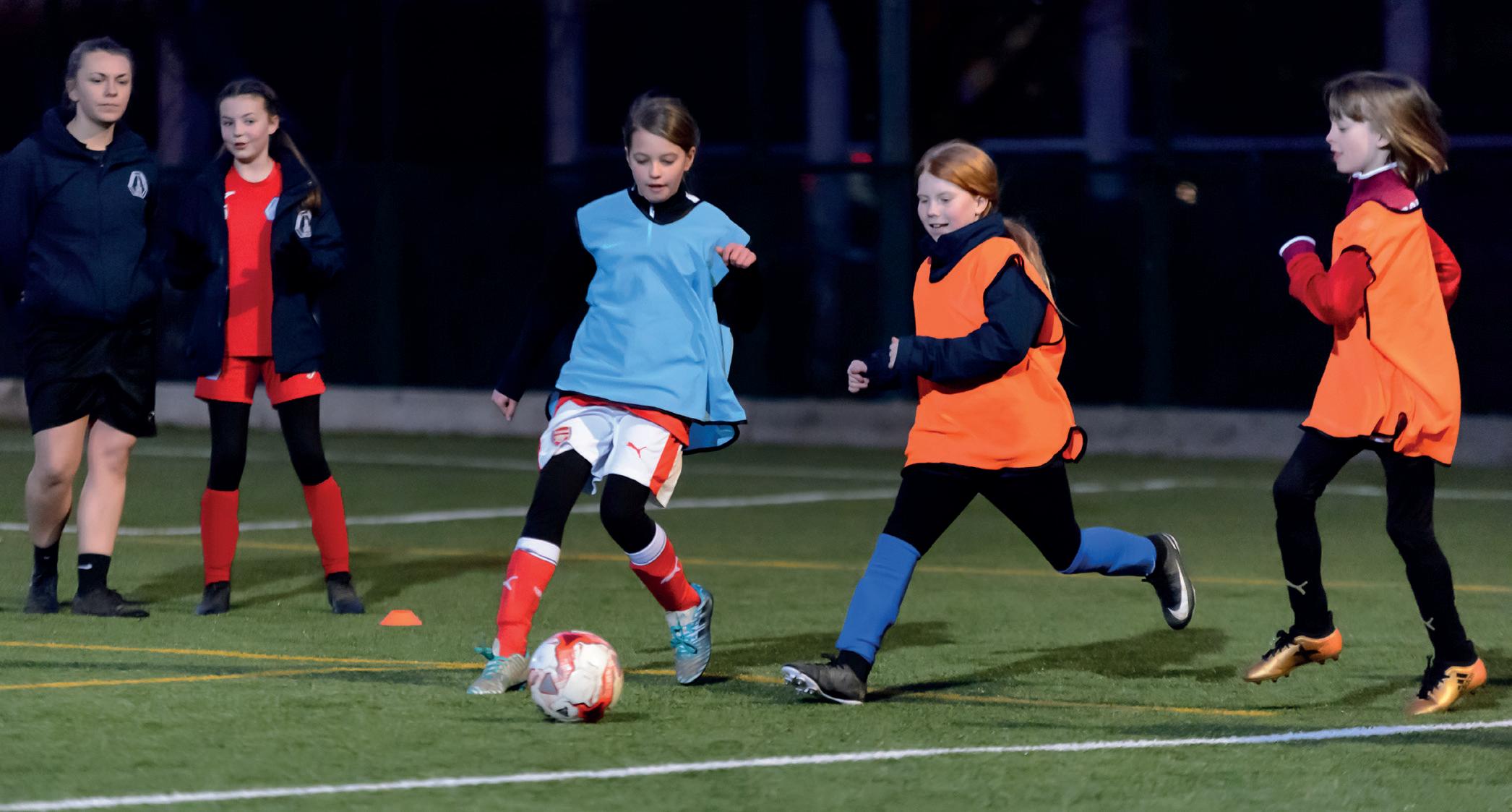
I sometimes wonder whether we in the sports and play construction industry, when talking in the language of science to describe the technologies of the sector, sometimes do a similar thing. It's obviously vital that, internally, we share and discuss the knowledge, research and specialism in the sector. But does it sometimes come at the expense of us talking about the outcomes that matter to people? Such as
player experience, health outcomes, the facilities that make communities better etc. The industry needs places to discuss the technical details and I hope that SAPCA will continue to provide and lead on those discussions. When we talk to the “outside world”, however, I think we need a greater focus on the positive outcomes we help people achieve – and the value we can add to society. This also means celebrating the positive differences we make. This year, the SAPCA Annual Awards will focus on our members’ ability to make an impact on the end user, celebrating the people and projects who have gone above and beyond. And yes, if it wasn’t already obvious, I was that coach! ●

“THE INDUSTRY NEEDS PLACES TO DISCUSS THE TECHNICAL DETAILS AND I HOPE THAT SAPCA WILL CONTINUE TO PROVIDE AND LEAD ON THOSE DISCUSSIONS.”RICHARD SHAW CEO SAPCA
Why use a SAPCA member?
Planning to develop a sports or play facility?
Make sure the companies you work with are SAPCA members!
There are a number of reasons why you should choose a SAPCA member for your project

• Members must meet strict membership criteria
• All SAPCA members are vetted and approved by SAPCA
• Members are committed to the SAPCA Code of Professional Conduct
• Members must also comply with the various SAPCA Codes of Practice (industry standards for design and construction of all types of sports facilities)
• Members have proven extensive expertise and experience in their fields of work
The “SAPCA Member” badge is a stamp of approval –always look out for it when planning a sports or play project


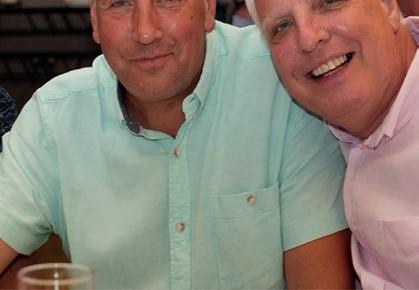

The SAPCA Golf Day took place at the St. Pierre Marriott Hotel & Country Club in Chepstow in late June. One of the sport and play construction industry’s main networking events of the year, the day was centred on the 22nd SAPCA Open tournament, played on the St. Pierre’s Championship Old Course.
Designed by C.K. Cotton and opened in 1962, the course has hosted the Solheim Cup and a number of other European tournaments – boasting six past Ryder Cup Captains as champions.


This year’s competition was won by Richard Nixon and Eric O’Donnell from SAPCA member company SportsLabs, followed by Alan Clarke and Geoff Webb from the Grounds Management Association in second place. Tim and Karen Long from SAPCA member, B&L Fencing, secured third place.

Below: The golf was followed by a networking and awards dinner





The golf was followed by a networking dinner, during which a charity auction was held on behalf of SAPCA’s 2023 nominated charity – the MND Association. The auction raised an amazing £1,800.


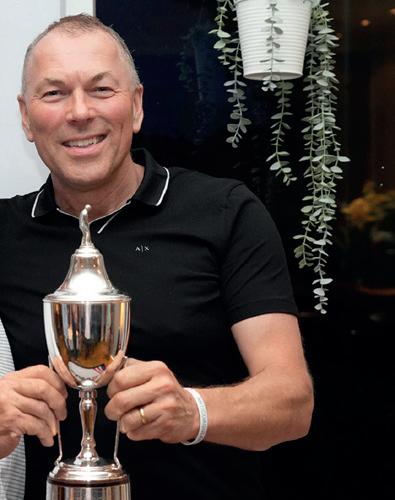
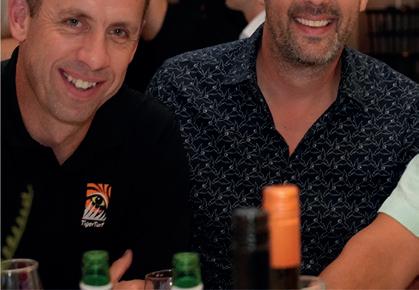

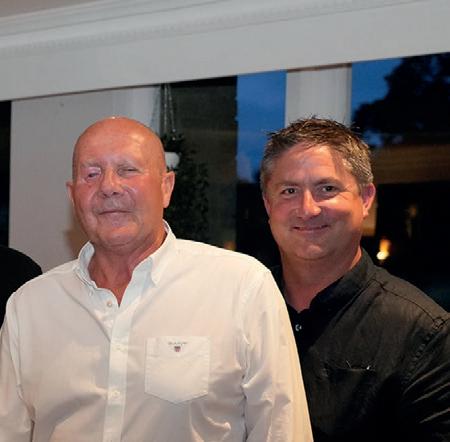
Richard Shaw, SAPCA chief executive, said: “For nearly a quarter of the century, the SAPCA Golf Day has been bringing industry people together for great networking in an informal environment. Attracting everyone from SAPCA member companies to national governing bodies of sport, it’s a great way for people to meet in a relaxed way.”

The annual SAPCA Golf Day – which this year took place for the 22nd time – is one of the sport and play construction industry’s most popular networking events







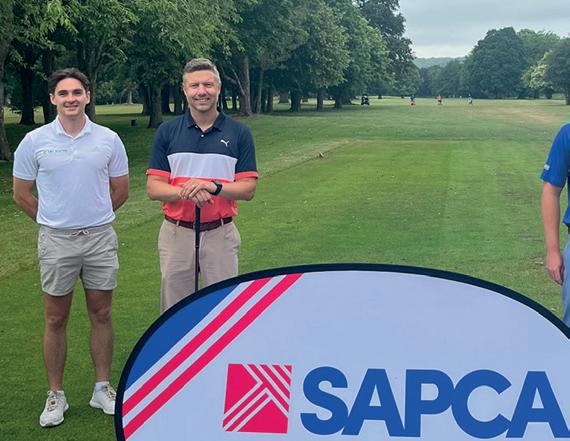


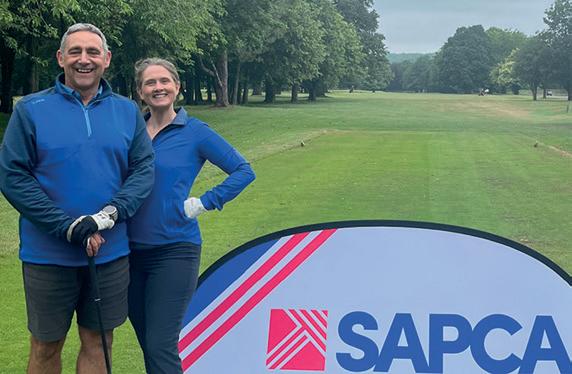
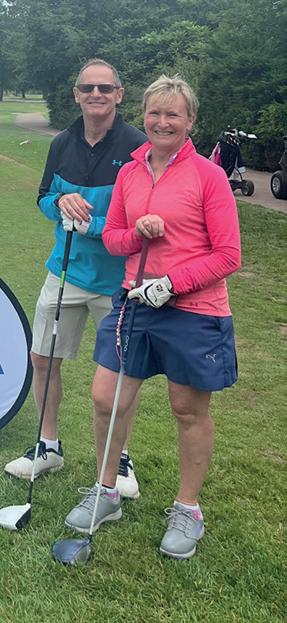
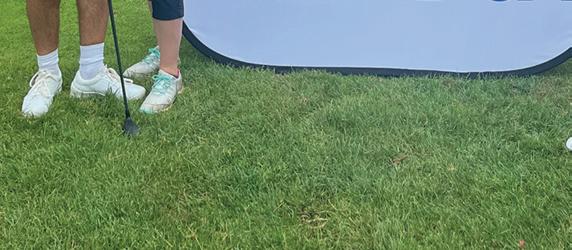



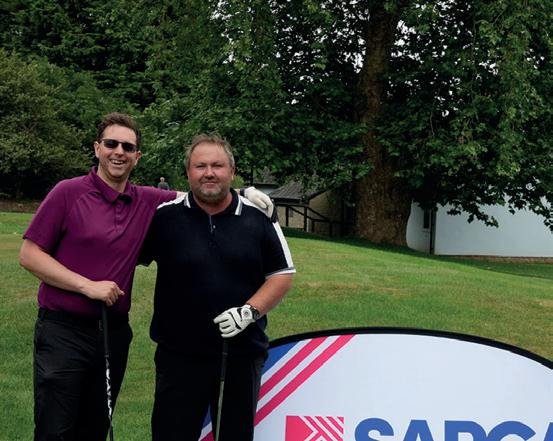


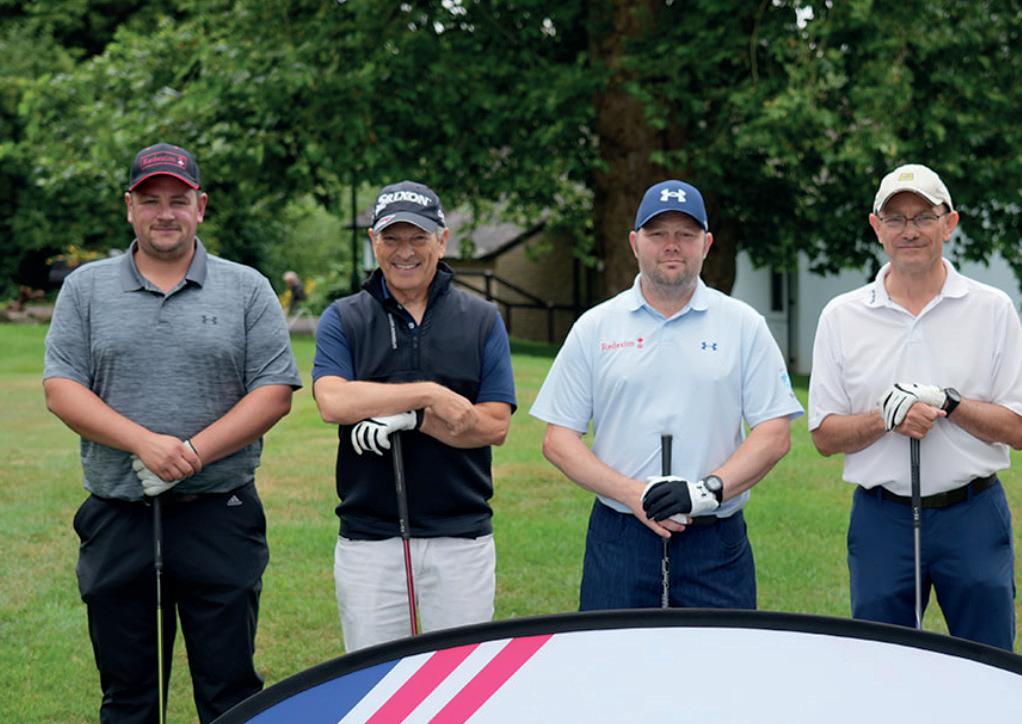
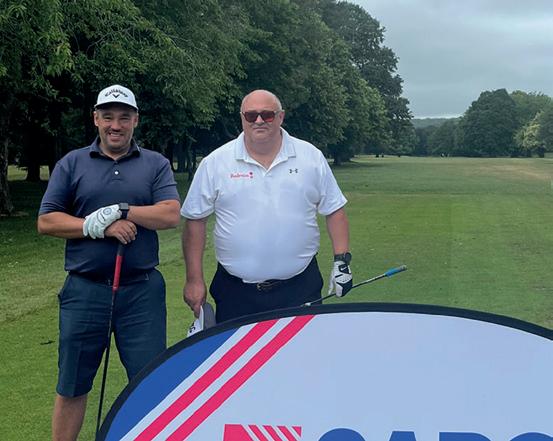



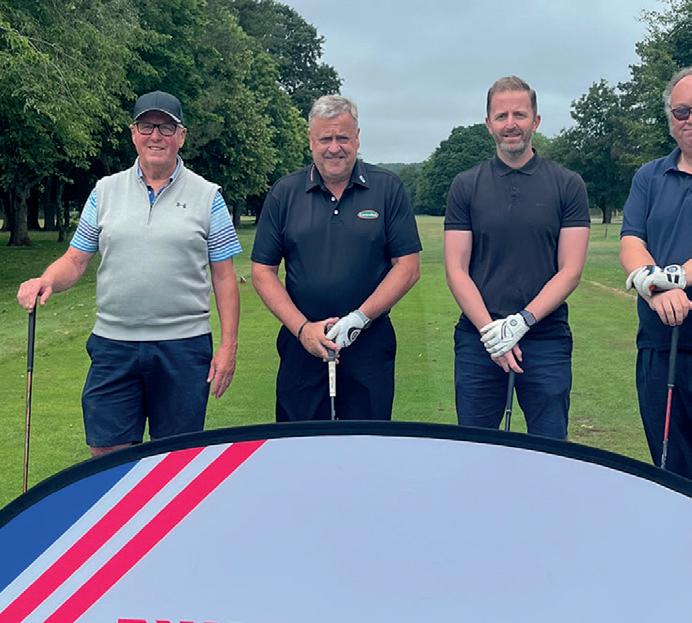

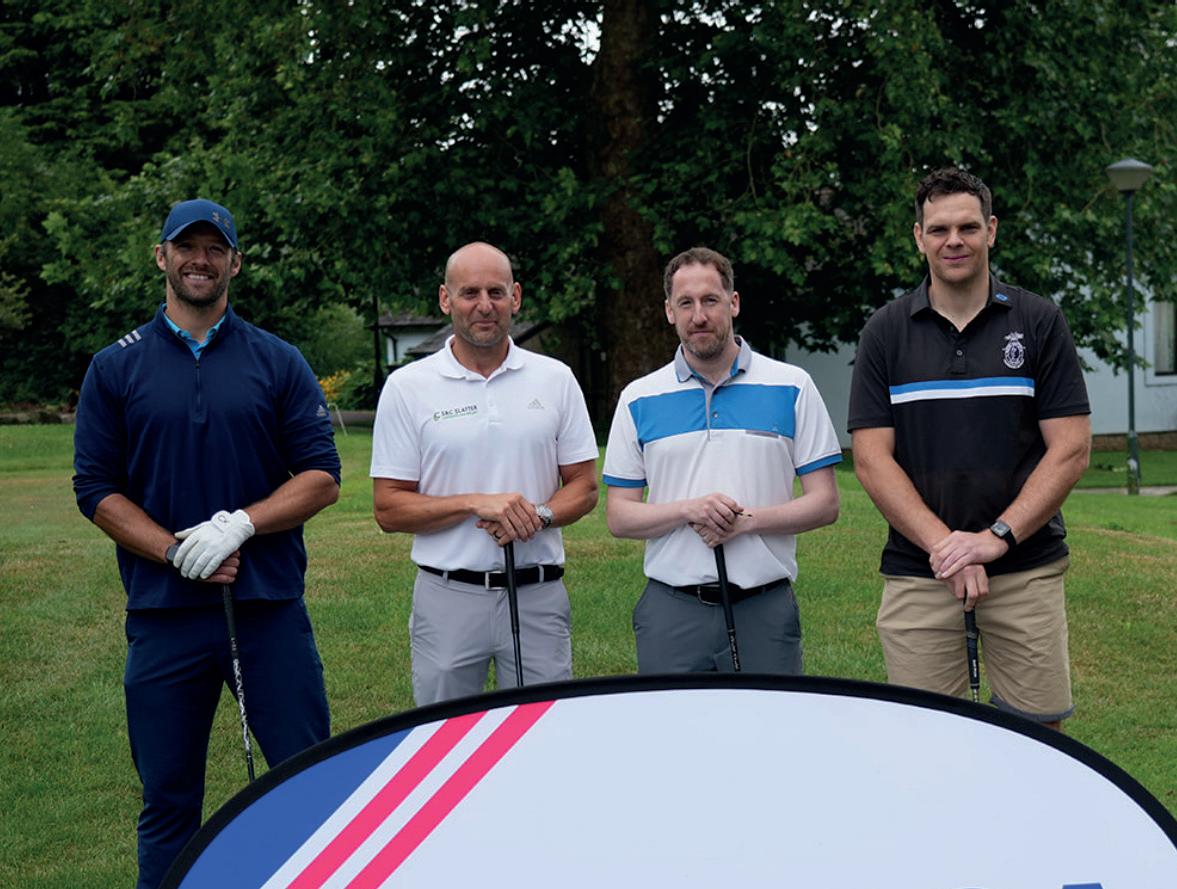
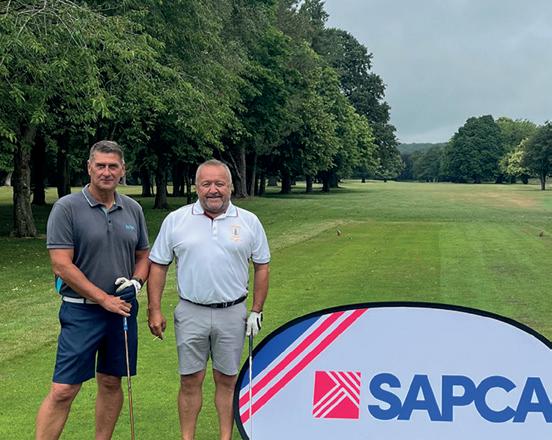
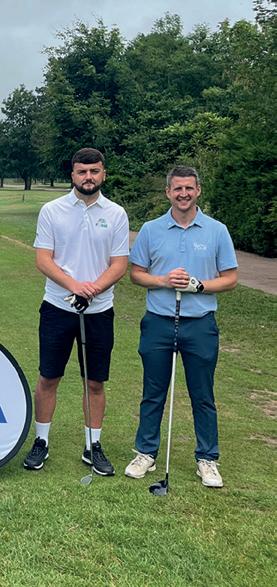


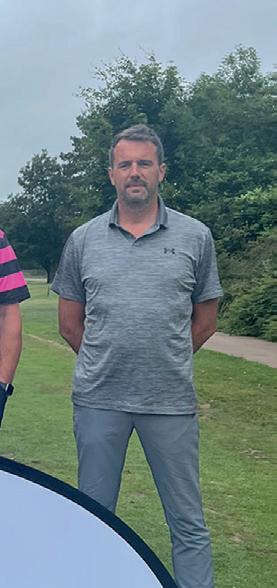
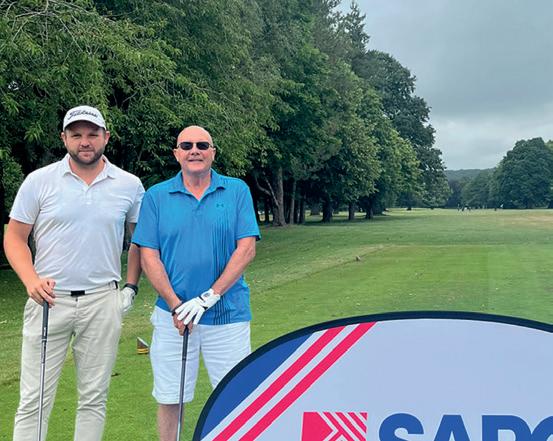
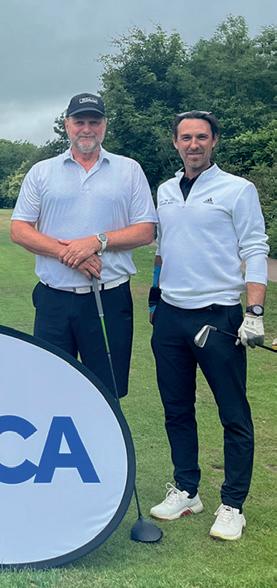





Andy King is chair of GM Active, a group of 12 partners collectively responsible for 99 leisure and sports facilities across Greater Manchester. He talks to SportsNation about the power of collaboration and how the approach adopted by GM Active can help public leisure to fulfil its potential in improving population health

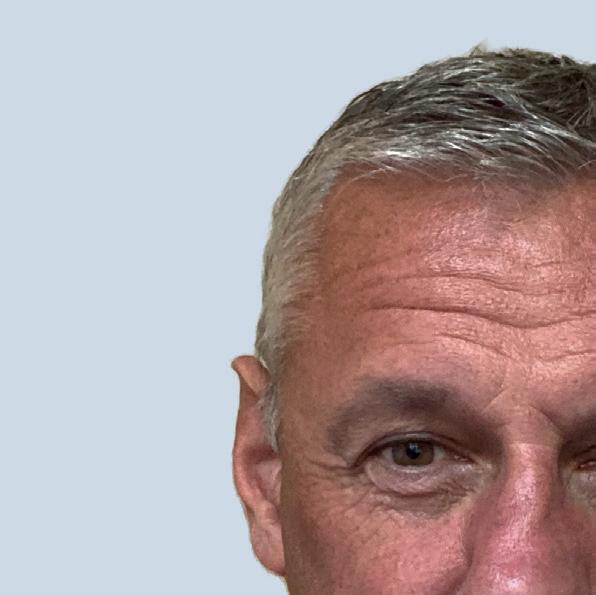
What is GM Active?



GM Active is a collaboration of 12 delivery partners across the 10 local authority boroughs in Greater Manchester. We became a Community Interest Company (CIC) in December 2020 but for a good few years prior to that, we existed as a collection of like-minded people and public sector organisations working in physical activity who decided to get together for the greater good. We’ve now got an executive board which includes a nominated director from each of the 12 Member organisations – mainly all the MDs and CEOs of the various partners.
In short, it’s a unique combination of organisations and people; we are pioneers in the health, wellbeing and physical activity sector.
What was the motivation behind forming GM Active?
The original catalyst for GM Active was the devolution deal for Greater Manchester, which resulted in pretty large sums of money being available for the region – especially when it came to health. A few of us working in public sport and leisure had already had aspirations of working more closely with health providers, so we recognised the opportunity provided by the funding deal.
The early days were challenging, but as the partnerships have matured and grown stronger, there is now more clarity of each partners’ roles and responsibilities.
In a way, the pandemic – as disrupting and damaging as it was to our sector – also helped. It really underlined that the focus of our industry should be on population health and establishing a role for sport and physical activity in it. A great example of



that is our Prehab4Cancer project. It’s the first UK integrated care service delivering prehabilitation and recovery programmes for cancer patients, via a partnership between the GM Cancer alliance and GM Active. It facilitates cancer patients to engage in exercise, nutrition and wellbeing assessments and interventions prior to, during and after treatment.
It now helps around 1,500 patients each year across Greater Manchester and the aspiration is to increase that figure to 20,000. It’s an outstanding programme that is delivered locally through sports and leisure facilities.


Nearly all other prehabilitation programmes around the country are based in clinical settings, which means people have to travel to hospitals or clinics. For us, Prehab4Cancer is a great example of the opportunities that we could miss as a sector. It shows what can – and is – being done through leisure and physical activity and how health can come to us for a lot of the services they offer.
One GM Active’s most successful projects is Prehab4Cancer, the UK’s first integrated care service that offers exercise-based prehabilitation and recovery programmes for cancer patients. Delivered in partnership with GM Cancer, Prehab4Cancer enables patients to engage in exercise, nutrition and wellbeing assessments and interventions prior to, during and after treatment. It has been designed to empower patients to take an active role in their cancer care. It prepares patients for the treatments and surgeries and aims to provide positive outcomes for patients during recovery and beyond. The programme is offered to any person who meets eligibility criteria and who is registered to a GP within Greater Manchester.
We are pioneers in the health, wellbeing and physical activity sector
It’s all about collaboration and about no one being in charge! Although I have the pleasure of chairing it, I’m definitely not the boss.
It can be tricky at times, as each of the 12 independent operators have their own business partners, suppliers and so on. We look to find common ground but even if we don’t, we don’t get too hung up about that.

Doing something together doesn’t mean everyone doing it, either – especially at the same time. There are times when someone brings an idea to the table and some of the partners are interested, while others might take a bit of time to decide, or even decide that it’s not for them. I can’t remember the last time we had to have a vote on anything, because the partners can decide whether they’re “in” or not.
Our new strategy has four different aims and objectives.
These are:
1. Encourage active lives for all and help to reduce health inequalities

The 12 members that make up GM Active account for 99 leisure and sports facilities across the city-region, with a combined reach of 20 million visits a year.
● Active Tameside
● Bolton Arena Sports Village
● Bolton Community Leisure
● Bury Council
● Life Leisure
● MCRactive
● OIdham Active
● Salford Community Leisure
● Trafford Leisure
● Wigan Council
● Wythenshawe Forum Trust
● Your Trust
within Greater Manchester.
2. Support and drive effective system wide collaboration with key partners across Greater Manchester.
3. Strengthen our resilience to ensure long-term sustainability.
4. Embed environmental sustainability and support the region’s ambition to be carbon-neutral by 2038.
We don’t have a suit of KPIs as such. We’ve toyed with the idea and we do have some for specific programmes, such as Prehab4Cancer. Also, in our day jobs, as facility operators, we’ve all got our KPIs and scores.
We’re very clear on our purpose, which is tackling inequalities and improving population health across Greater Manchester.
Do you think the GM Active model could work elsewhere - and could it be scalable, perhaps even taken nationwide?
I’ve been asked this a lot. For us, our model works because Greater Manchester provides a natural “boundary”, with 10 local authorities and 12 operators within a clearly defined region. What we’re doing can definitely be replicated elsewhere, however, and it would
be great to see nation-wide collaboration between operators and other services – particularly in health. I think the key is that it still needs to work on a local level, because that is where the delivery happens.
So maybe the way that our model could shape a nationwide picture is through national policies being influenced from a regional perspective. Perhaps through the learnings and efficiencies that we’ve achieved. Our experiences could be useful when it comes to devising strategies, such as Sport England’s Uniting the Movement (and a plethora of others), which are great but seldom include any actual implementation plans, which is a bit of a bug-bear of mine.
I think a great starting point for any collaboration – local, regional or national – would be to utilise the existing Active Partnerships. They have some resources available and, for me, should be very much part of the implementation plan for the Uniting the Movement strategy.
Use the “natural” boundary of an active partnership, identify the operators and the people within it, get everyone together –including those in the voluntary and health sectors – and then work in tandem with the active partnership and make it happen.
The thing is, I’m sure there is great appetite for more collaboration at every level. I’m sure
there isn’t a council or local authority, for example, that wouldn’t want to see their leisure services contributing to population health.
Tell us about the Pivot to Active Wellbeing study and its background Pivot for Wellbeing is an 18-month project GM Active is working on together with the University of Salford, Future Fit and SLC.

When the pandemic hit, we wrote to the Greater Manchester Combined Authority – the CEOs of the city’s 10 councils – saying how we, as sports and leisure operators, wanted to contribute more to population health. It struck a chord and they came back and said they were interested in working with us. We secured a small amount of money from all 10 authorities, which was then matched by us, which in turn was matched by Sport England. And it was that funding that enabled the launch of Pivot to Active Wellbeing.

The goal of the programme is to find answers to a number of questions: what do our facilities need to look like if they were to be better set up to serve population health? How can we collaborate even more effectively? What would the transformation from leisure to health and wellbeing mean for our workforces? And what would all of that look like in practice?
It will also look at all the things we do well – all those pockets of good practice –across the region with the view of evaluating them better than we have up until now. We also want to find out how we could better share best practice and whether we can
We’re very clear on our purpose, which is tackling inequalities and improving population health across Greater Manchester
for all
get more consistency across the different programmes. The end goal is to have information on the 10 boroughs and every programme in place that uses physical activity to tackle long-term conditions – alongside an evaluation of each and a guide on setting a similar programme up elsewhere.


It will help us with our ultimate aim, which is to change how our sports and fitness facilities, leisure centres and swimming pools – alongside services and teams –serve their people and communities.
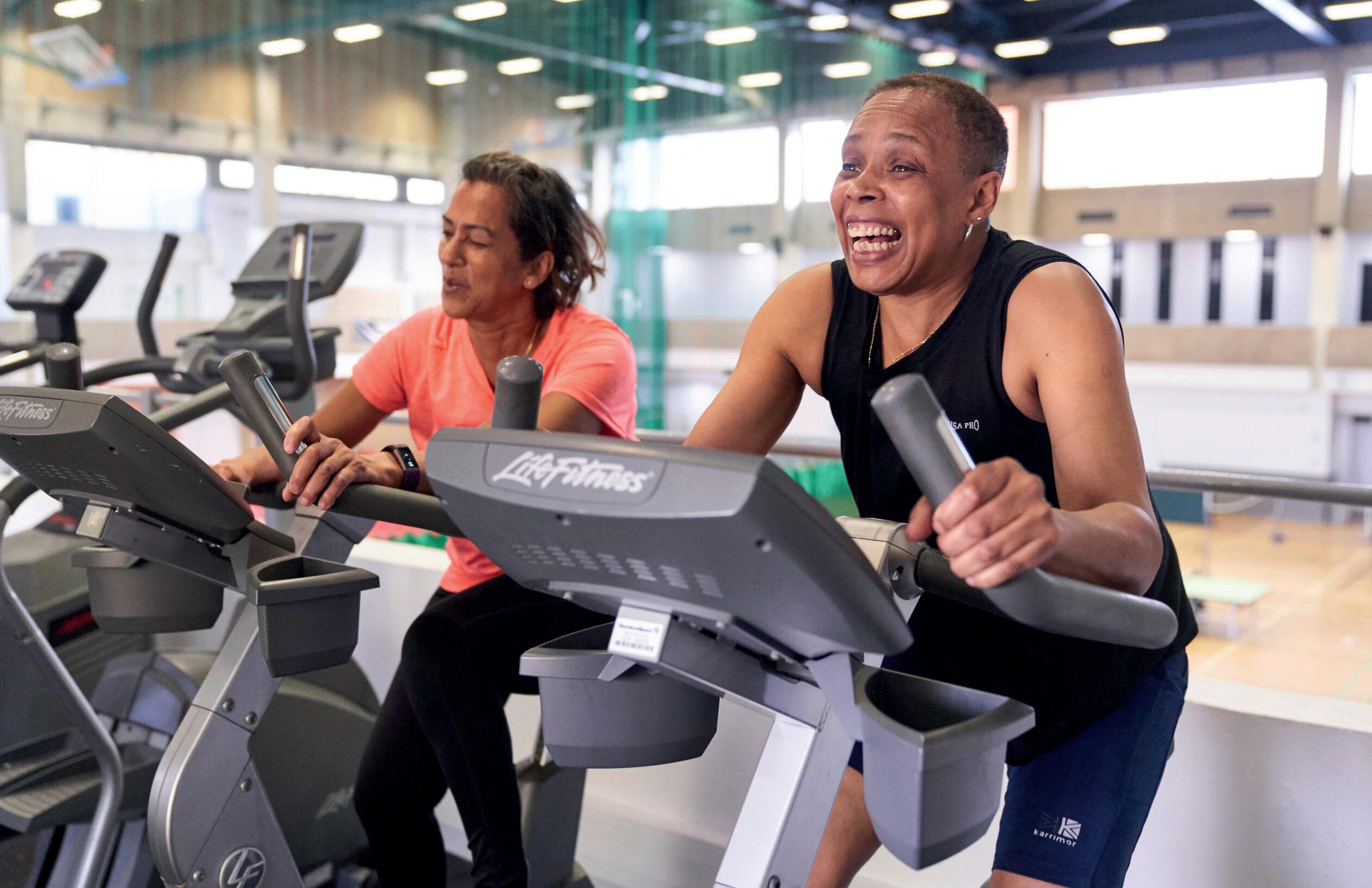
We’ve now got a movement going at GM Active which wants to transform leisure into wellbeing and wellness. To do that, we need to understand what that process looks like. How do we ensure active wellbeing becomes an integral and valued contributor to the wider health and social care system in every neighbourhood – and that’s where Pivot to Active Wellbeing comes in.
It’s a project I’d really like to see on a national scale too, because we know there are some excellent projects going on elsewhere in the country – but very few know about them outside those areas.
And let’s face it, as an industry, we need to shine a light on what we do. ●


1. After leaving school, Andy became a professional drummer
2. He started in a punk rock band called Crack, which won the National Battle of the Bands and resulted in Andy’s first TV appearance
3. His musical career included a threeyear stint playing for a showband in the former Yugoslavia

4. After returning to the UK and graduating from Bedford College, his first job in leisure was at Billingshurst Recreation Centre, owned by Horsham district council
5. He advanced up the career ladder quickly and became one of the country’s youngest managers to take charge of three leisure centres
6. He once wrote a letter to Richard Branson, suggesting that his Virgin brand would be perfect for leisure. Shortly after that, Virgin Active was launched – Andy’s still waiting for his commission
you didn’tKing (top right) during his time with punk band, Crack © DUNCAN NICHOLLS/ GM ACTIVE
Tackle inactivity in children, young people and adults with a patented Play Innovation target game.


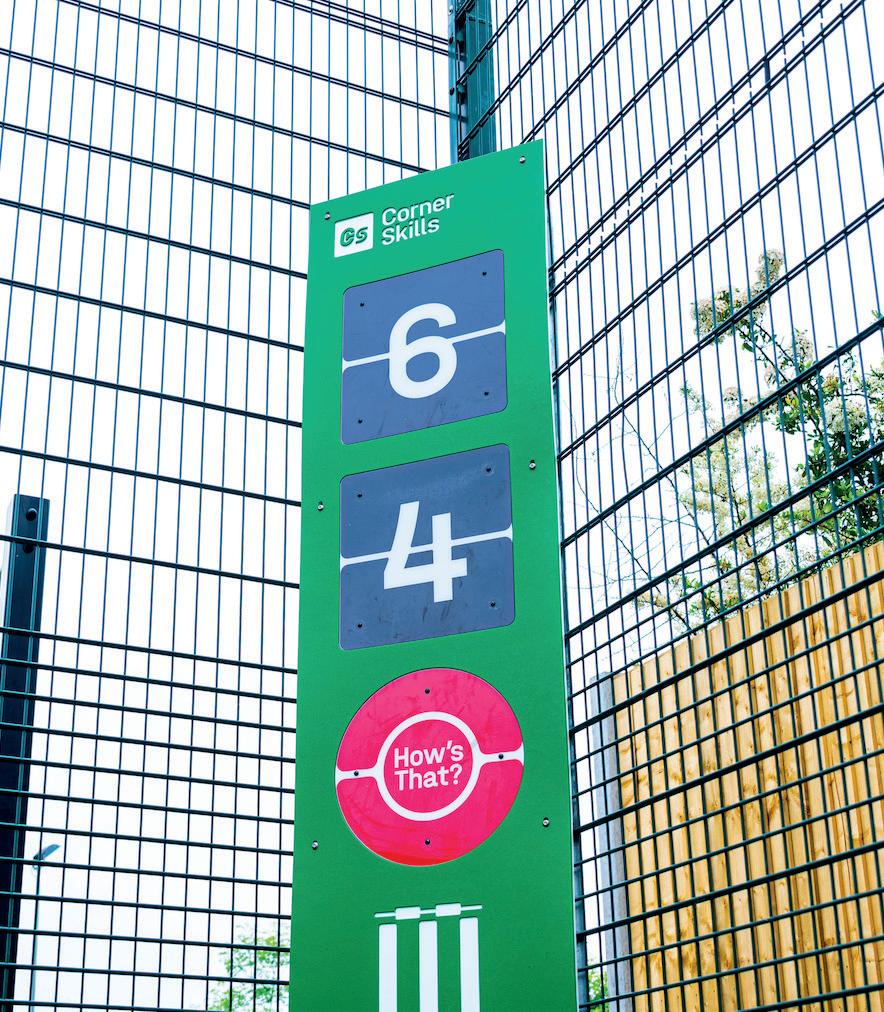

Whether you choose the famous ‘Crossbar King’ target game, ‘Noughts & Crosses’ or ‘Cricket Practice’, each board is heavy duty, low noise & even lower maintenance.



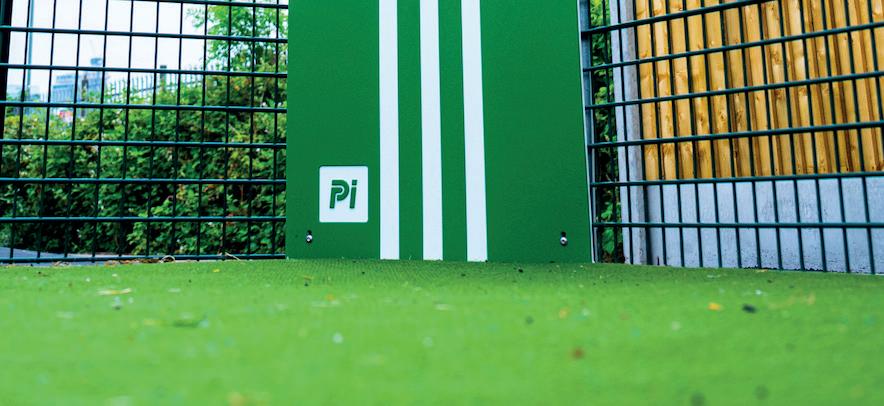
Prices start at just £2,500.
Get a quick estimate at contact@playinnovation.co.uk











Multidisciplinary consultancy specialising in inclusive, multi-sport areas and playzones
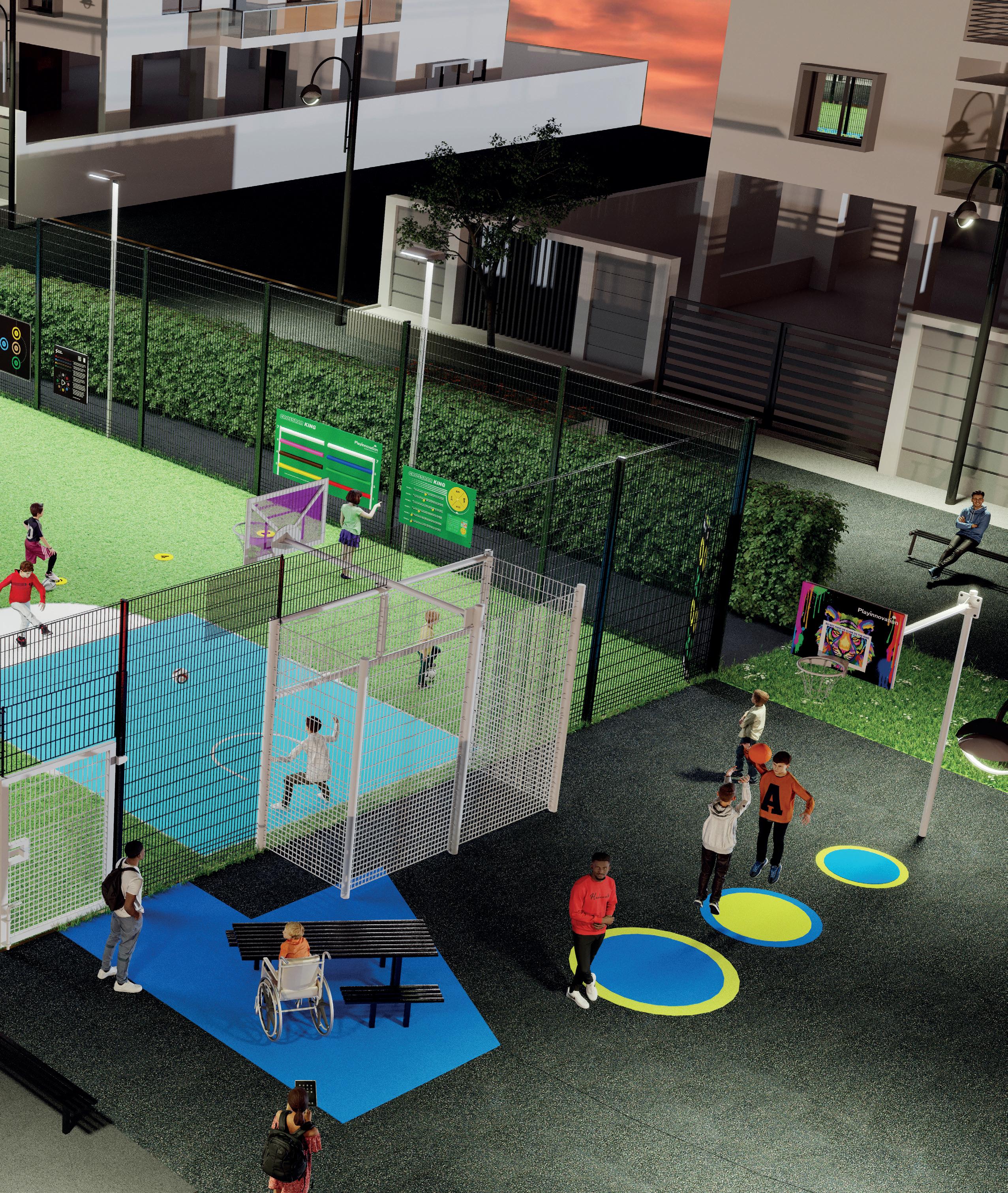










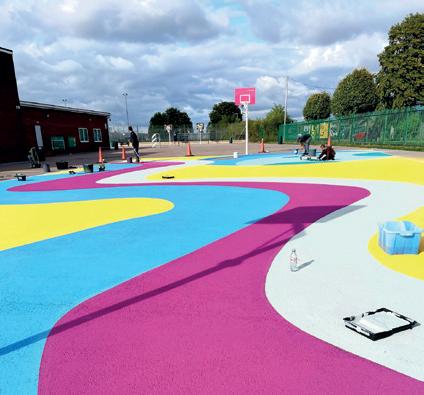


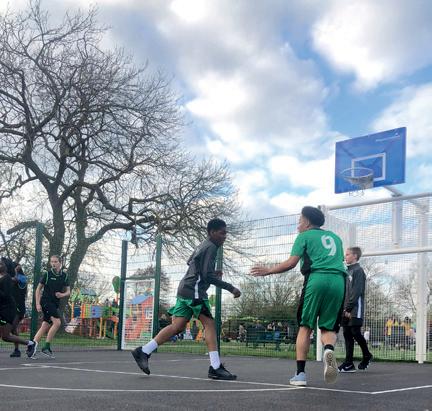
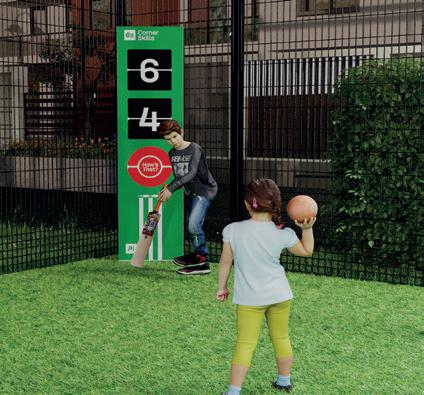

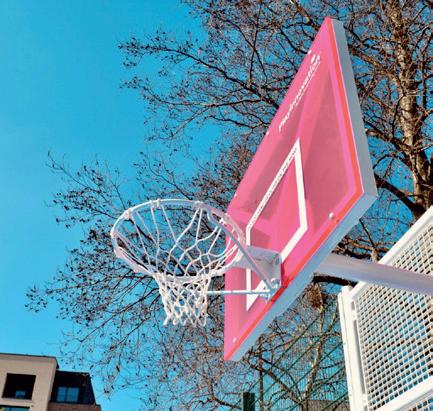

We look at some examples of recent sustainability projects
Sports events and facilities can have significant environmental footprints, from energy consumption to waste generation, transportation emissions to water usage. At the same time, sport is ingrained into our everyday lives, with millions of people each day taking part, volunteering and turning up as spectators to events and venues.
That’s why, when it comes to environmental sustainability, sport is in a unique position to make a difference. The often energyhungry activities and facilities mean that there are plenty of opportunities for sport to improve its green credentials through environmentally sound practices.

In addition, sport can also use its global platform to raise awareness and inspire action in others. Leading by example – by using renewable energy sources, implementing eco-friendly transportation options, choosing sustainable products and cutting waste –
sport can play a pivotal role in showcasing sustainable solutions and help educate athletes, fans, and communities on the importance of mitigating climate change.
Like any forward-thinking businesses, sports organisations also have a social responsibility to contribute positively to the communities they operate in. Sustainability initiatives can help with this, by providing an avenue for sports to promote social welfare, engage with local communities and address broader societal issues. By supporting environmentally conscious practices, sports can enhance community well-being, create jobs, foster inclusivity and promote health and fitness.
But environmental sustainability isn’t all about “giving”. Introducing environmentally sound practices leads to long-term economic benefits. Energy-efficient infrastructure, responsible waste management and resource conservation can reduce operational costs. In addition, a powerful sustainability strategy can attract environmentally-conscious sponsors, investors, and fans, thus enhancing financial stability and driving growth. Over the next pages, we chart some examples of the ways in which sport is making a difference through sustainable innovation.
Sustainability is now a crucial aspect of sports, from facility design and construction to the spectator experience.
Sport can play a pivotal role in showcasing sustainable solutions
Favrholm Stadionkvarter (translated as Favrholm Stadium Quarter) is a new urban and landscape development planned for the southern part of Hillerød, Denmark. Designed as an entirely new neighbourhood full of physical and social activities, the area is set to become a pioneering project and a model for the sustainable development of new residential areas of the future.
As the name suggest, the stadium quarter will be built around a major sports venue. The project is driven by Danish top flight club FC Nordsjælland, which will call the new stadium its home when the district is expected to open in 2027.


The stadium will be surrounded by football pitches, a sports academy, 2,200 homes, businesses, a day-care centre, hospital, hotel and a school.
Crucially, sustainability will shape the entire project. The whole area will be built according to the DGNB (German Sustainable Building Council) standards. A network of cycle lanes will ensure that the stadium – and everything around it – will be easily accessed without the need of cars.
In addition, the proposals seek to restore the area’s forests, in order to enhance biodiversity and to cre football pitches and the landscape activity programme.
SAPCA members, Sportex Group and tiger up! (a subsidiary of TigerTurf UK), have launched the UK’s first closed loop recycling facility for end-of-life synthetic turf facilities. The traceable recycling solution ensures that all components from a synthetic turf pitch can be separated, thoroughly cleaned, and – most importantly – processed into a condition to be re-used within the sports facility construction industry.
Using Sportex’s existing
recycling technology, reclaimed sand and SRB rubber will be available for re-use within sports facility projects. The process will also feature tiger up!’s plastic agglomeration technology, which has been moved to Sportex’s recycling factory in Grangemouth, Scotland. There, a constant feedstock of un-filled end-of-life artificial turf will be processed and facilitate the production of tiger up!‘s sustainable products for sale back into the market.
The Sportex facility has the ability to process up to 500,000sqm of synthetic turf every year; preventing an estimated 12,500 tonnes of classified waste from entering landfill every year. By recycling 100% of old sports pitches, all reclaimed materials can be used in the construction or refurbishment of new synthetic turf sports fields – eliminating thousands of tonnes of classified waste from going to landfill every year.
The Football Association (FA) has launched a new five-year sustainability strategy, setting out their plan to make a positive impact on the environment and the communities in which it serves. Called Playing for the Future, the strategy will drive forward the FA’s environmental ambitions until 2028, as it looks to establish itself as “a role model in shaping a positive football future for all”.

The strategy has been created through extensive consultation with a wide range of football stakeholders and environmental experts. It builds on the FA’s operational sustainability efforts across Wembley Stadium and St. George’s Park, particularly around waste, food and energy.


Playing for the Future focuses on three core areas – each of which has its own title and stated aims and targets:
1. Shoot for Net Zero – fight climate change and reduce emissions
● Achieve net zero status by 2040
● Invest over £35m to deliver the 2040 ambition
● Work towards reducing CO2 emissions 50% by 2030 from a 2019 baseline, reducing electricity consumption by 30% by 2028 from a 2019 baseline, and reducing gas consumption by 20% by 2028 from a 2019 baseline
2. Save our Resources – optimise resource consumption
● Reduce resource consumption across Wembley Stadium and St. George’s
Park, and embed more sustainable practices across the organisation
● Minimise impact of waste through procurement choices, avoiding waste, identifying reuse opportunities and maximising recyclability
● Reduce water consumption by 30% by 2028 from a 2019 baseline
● Protect biodiversity across all FA venues –animals, wildlife, plants, micro-organisms
3. Make an Impact – deliver and govern change across football
● As the governing body of English football, The FA is in a unique position to drive wider environmental and societal change across clubs, leagues and with partners
● The FA will create the operational framework to embed this strategy across the whole organisation, including its facilities, and increase awareness and environmental sustainability practices across football, whilst governing and supporting wider change
● The strategy will also ensure FA partners are aligned and committed to the sustainability ambitions.
the
“We

“The climate crisis presents one of the most significant challenges of our lifetime, and we are determined to play our part in inspiring positive and meaningful change. Through our new five-year commitment, we want to make tangible progress through our own sustainability initiatives, while raising awareness, and bringing
wider football community with us on this journey.
look forward to working with the leagues, clubs, County FAs and our partners to harness the unique power of football so that together we can have a beneficial impact on the planet and a positive influence for future generations.”


The Green Sports Hub Europe partnership has launched a new self-assessment tool, designed to help sports organisations to understand and improve their environmental impact. The tool will assist organisations to identify where they should focus their efforts, with six modules covering event management; natural environment; governance; resource management; facilities; and host/venue selection.
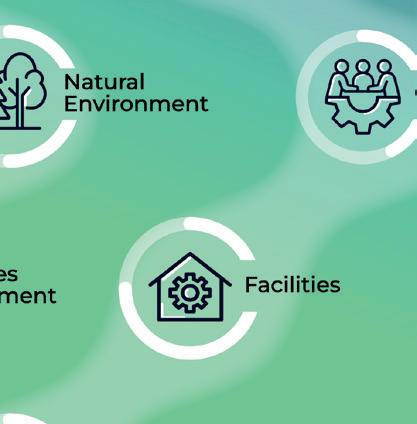

“Organisations using the tool can evaluate the level of maturity of the actions in less than 30 minutes,” The Green Sports Hub Europe said. The tool can be accessed here: https://learn. greensportshub.eu/self-assesment-tool/



A group of 44 Women’s World Cup players, led by Denmark international, Sofie Junge Pedersen, have committed to reducing their carbon footprint and address the environmental impact their travelling to this year’s World Cup will have. Described as the biggest player-led climate action in football history, the campaign will see players donating money to a combination of climate-resilience, and carbonoffsetting and adaptation, initiatives.
The tournament, which runs from July 20 to August 20, takes place across Australia and New Zealand. It is the first Women’s World Cup to be held across more than one country. It’s location – with teams flying to the countries from all round the world – presents a clear environmental problem, with air travel unavoidable.
Speaking to media, Pedersen said:
“Climate change is the biggest issue humanity faces, and I want to be part of the solution. While there are no current sustainable solutions to aviation, as players we are setting an example and taking a tangible step in the right direction.”
The campaign is supported by Common Goal and Football For Future.
Through the EVOLVE movement, Leisure DB aims to catalyse conversation, collaboration and change across the UK’s physical activity sector.
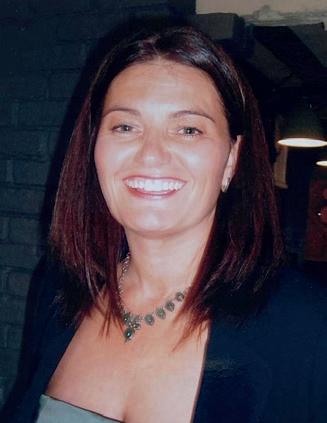


EVOLVE is a movement for the physical activity industry transformation that was conceived by Leisure DB and Pocket Rocket in 2021, with ActiveIQ, Willmott Dixon and Taylor Wessing as partners. People in our sector will be familiar with EVOLVE’s annual conference – the event at which we unveil the findings of our flagship State of the UK Fitness Industry Report and host thoughtprovoking speakers to stimulate discussion.
This began life as an online event in 2021, moving to both in-person and online in 2022 and 2023; this year it took place at Red Bull’s London HQ on 7 June.
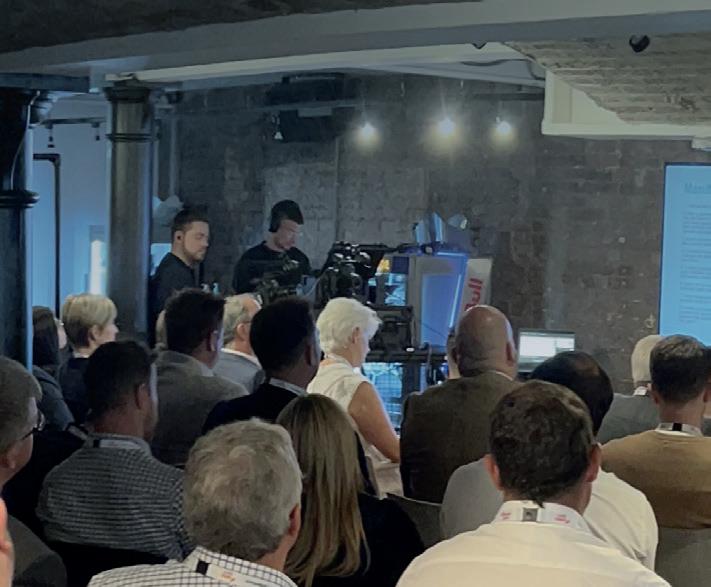
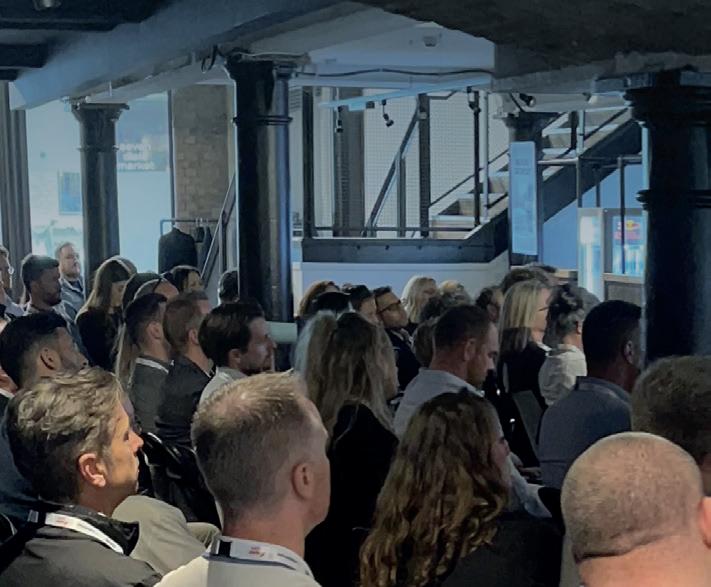



But EVOLVE is far more than just an event, conceived as a year-round movement, catalyst and platform for conversation, collaboration and change within our sector. Bringing together the industry’s disrupters and thought leaders, it aims to inspire new thinking in the human experiences our sector delivers, encourage diversification into untapped markets and stimulate growth.
That’s why this year, we wanted to deliver really strong takeaways from the event, as well as inspire
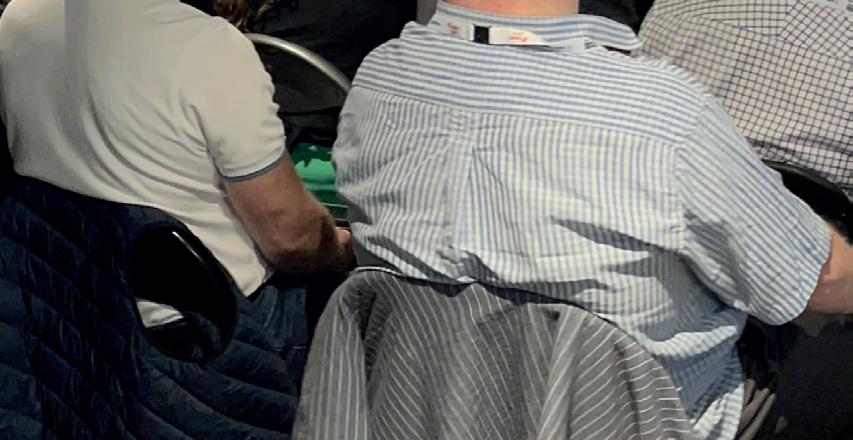
further action off the back of the day’s discussions. Change will never happen if we only get together once a year.


There were a few themes that really resonated. The first is the need to move our sector into health, while at the same time still catering for the 15 per cent who are already using our products and services.

The 15-point manifesto shared by GM Active’s Andy King was hugely powerful and I urge everyone to watch – or even rewatch – that session, with a full recording of the day available on the EVOLVE page of our website (www.leisuredb.com/evolve).
To achieve this, we must look at our workforce, how well they represent the other 85 per cent, and the qualifications they hold. Compared to those held by the likes of physiotherapists, the bar is simply too low. We will never be seen as credible if you can become a PT in a weekend.
Other key takeaways from the day were the importance of embracing broader wellness – from sleep to menopause to resilience and
everything in between – and the need to move away from silo thinking and work collaboratively.






Since our event in June, a number of conversations have been actively progressed.
CIMSPA has already committed to hosting three events this year, to continue the conversation around topics such as data and language. This is great, because if EVOLVE is to succeed, it needs to be widely embraced and actioned, sparking debate, collaboration and conversation across the sector.
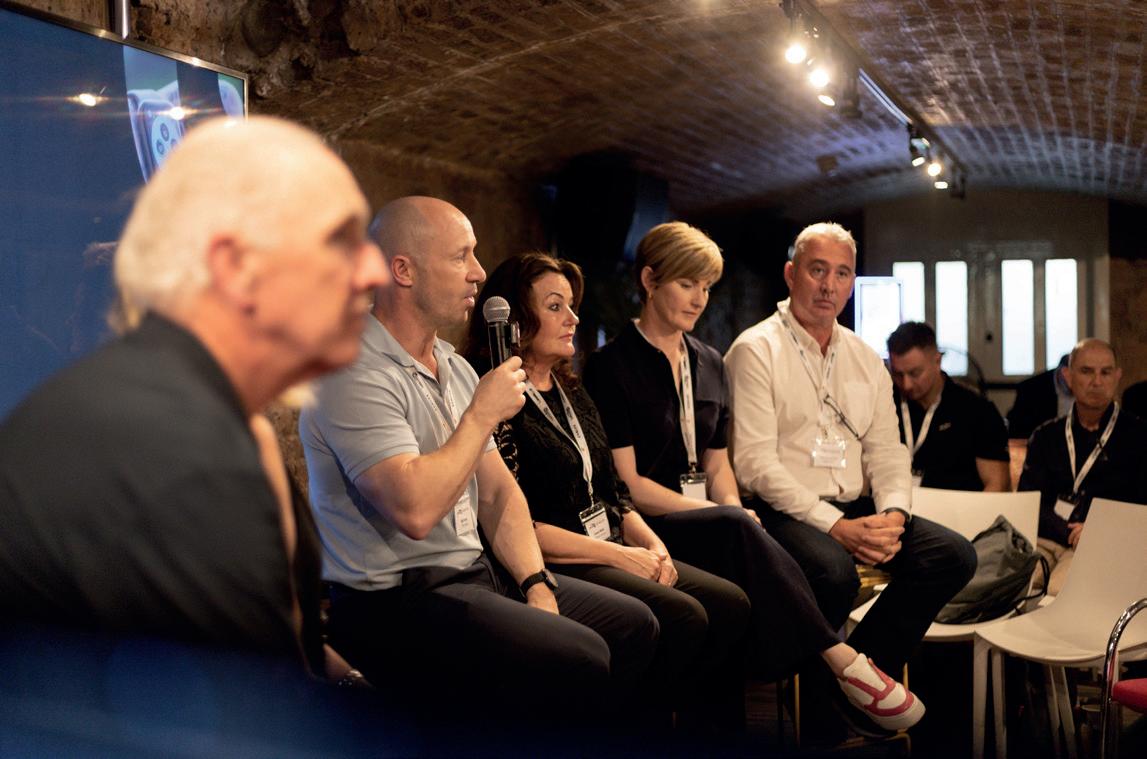



We’re also kicking off what will be a series of roundtables with a Workforce Roundtable on 26 September, led by Active IQ. Future roundtable themes are likely to include: vocabulary and narrative; education and qualifications; wellness; sustainable business models; the eco-agenda; and data.
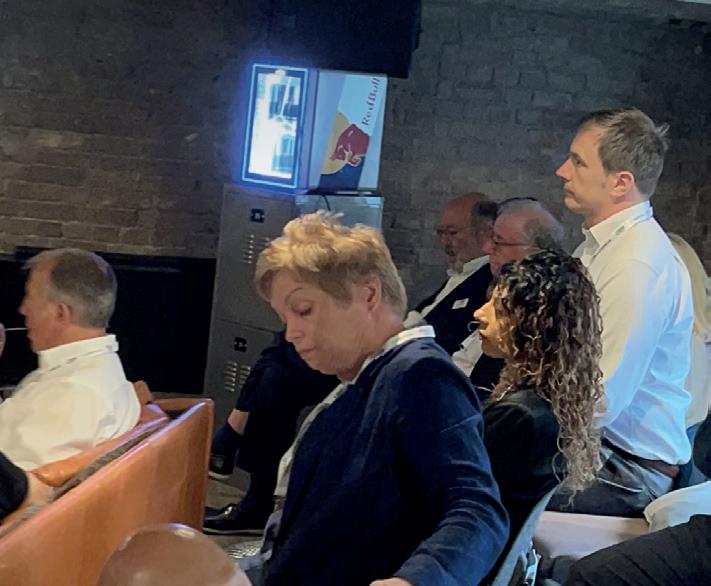
We’re certainly pushing the wellness agenda, already planning a new Leisure DB report and actively looking to create a wellness academy: a flagship facility that will provide data and best practice to shape case studies and assist the future development of wellness hubs across the

UK. We want to champion data sharing across the sector to drive better, more informed business decisions that will serve the end consumer.
At the moment, you look across our sector and most operators have no usage data, no real understanding of who’s doing what or why customers behave as they do. This is something we’re keen to address, and our intention is to enhance every one of Leisure DB’s suite of reports to include not just statistics and topline analysis, but in-depth narrative and exploration of solutions. Our State of the UK Swimming Industry Report 2023, which is out now, is our first step towards this, but we want to go further still. We want to be the independent voice that draws sector-wide data into one place and then uses it to drive learnings and implementable, unbiased advice.
Absolutely: we welcome all those willing to actively participate in shaping a bright future for our sector. Get in touch to find out more: www.leisuredb.com/contact
We’re certainly pushing the wellness agenda, already planning a new Leisure DB report and actively looking to create a wellness academyTalks focused on the current state and future of the physical activity industry
Cheriee Wales, director of Pocket Rocket – one of the partners behind Evolve – offers her views on the event

Three years ago a simple discussion between the founding partners of Evolve – Leisure DB, Active IQ, Pocket Rocket Group, Taylor Wessing and Willmott Dixon – became what is now a movement for the industry to drive collaboration through conversation, which ultimately leads to change.
Due to the pandemic, Evolve was first launched to the industry via a live webinar. The first live Evolve event was hosted at Taylor Wessing in 2022. This year, to coincide with the launch of Leisure DB’s State of the UK Fitness Industry Report, the event took place at Red Bull HQ, Covent Garden, London. Nick Mennell, Director of Pocket Rocket Group, volunteered to be compere
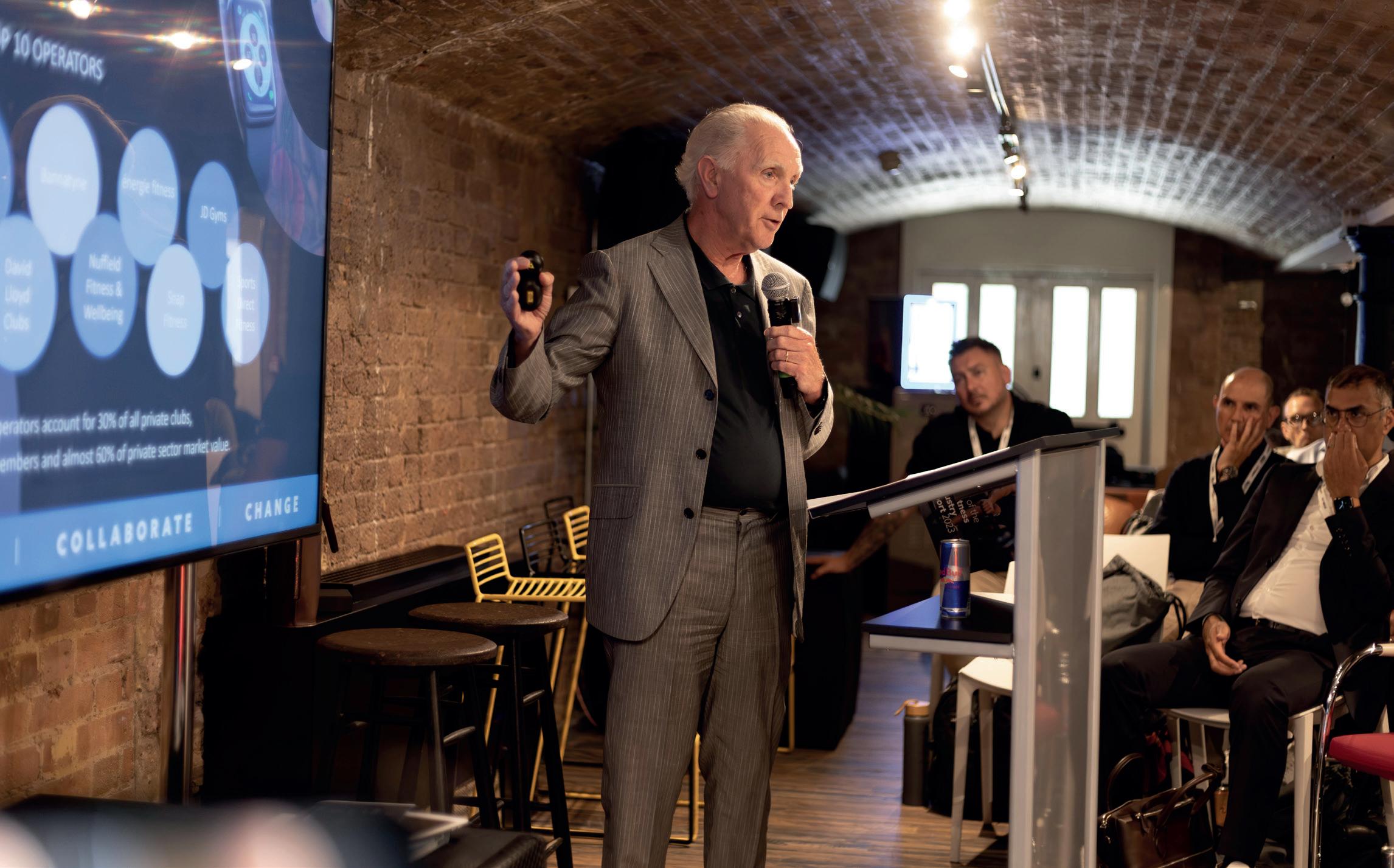
David responded to questions that were posed with the same powerful message ‘The answers are in the room’ – and he couldn’t be more right
Nick Mennell, Director of Pocket Rocket Group
for the event, leading the agenda in order to help steer the conversation with fellow industry experts towards how the industry can create a positive human experience in all of its businesses.
With keynotes from Mike Saul, Head of the Leisure Team at Barclays; Andy King, chair of GM Active; and Jenny Patrickson, MD of ActiveIQ; – who all presented delegates with thought-provoking issues, opportunities and calls-to-action – it felt like the industry was ready and primed for change.
David Minton, founder of Leisure DB, presented this year’s State of the Fitness Industry Report, which highlighted data that once again offered the sector hope and opportunity. Commenting on the session, Nick Mennell said: “David responded to questions that were posed with the same powerful message ‘The answers are in the room’ – and he couldn’t be more right. When we read any report, what we’re looking for is the ‘so-what’ – and if we work collaboratively as an industry and a movement, we can bring about change.”
Describing the event, Jenny Patrickson, said “Evolve is the ultimate gathering of movers
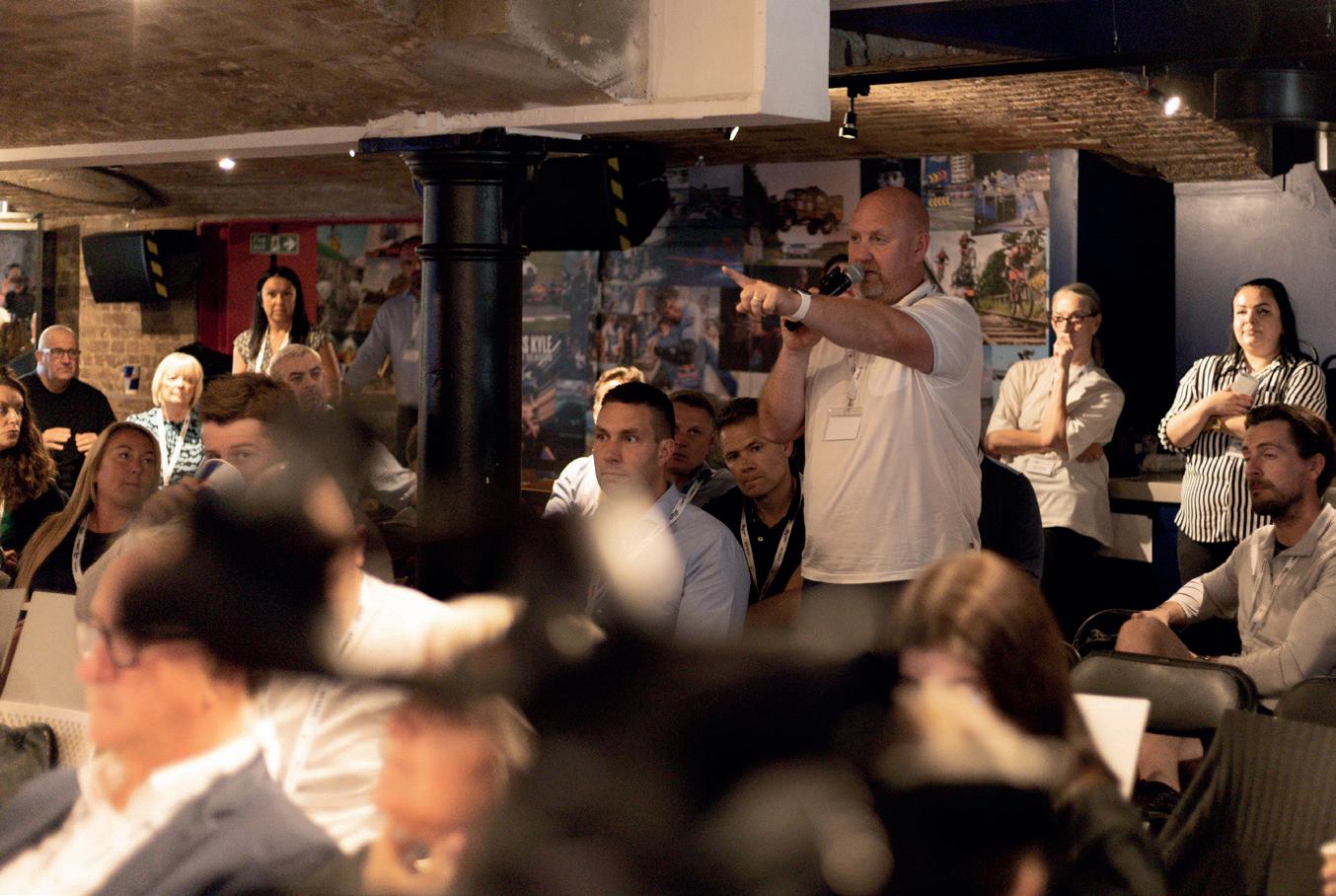
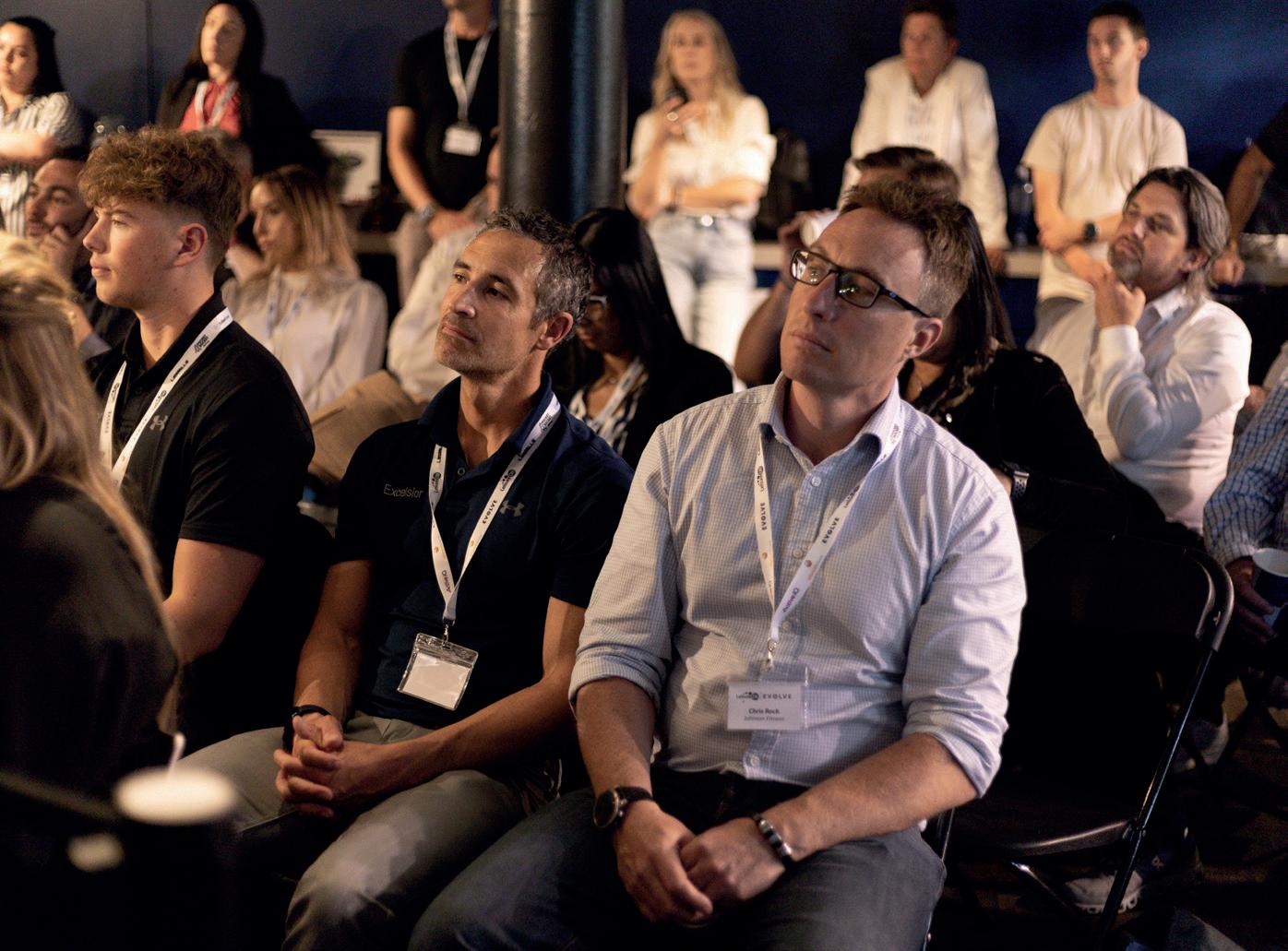
Excelsior Development Technologies is conducting research within a number of leisure facilities to correlate and evidence the link between training and education to human behaviour and experiences.
Fitronics has introduced a new brand within its existing portfolio of cutting edge software; WAM (Workflow Asset Management) is an innovative new software that enables leisure facilities worldwide to streamline their processes, putting human experience at the forefront by minimising downtime, reducing maintenance issues and saving time, resources and energy on traditionally paper based management procedures; by moving them to a more efficient and effective cloud based solution.
Pocket Rocket Group launched a new workshop called “Disco” - born from the Human Experience theme, it looks to align business values with the different personalities within an organisation which is where the magic happens. This unique half day workshop is designed to break down barriers.
FAM (Fun and Moving) has had the opportunity to give workshop presentations to Be Active Bedfordshire, Active Surrey and Live Longer better and Pat Goddard says “I feel that events such as EVOLVE are so valuable to bring like minded people together, we’re all working towards a similar goal. We at FAM have the dream of movement being (where appropriate) the first choice nondrug prescriptive medicine, and it’s been an absolute inspiration to find so many people who are also working towards this goal.”
and shakers in our industry, and we were thrilled to be a part of it. At Active IQ, as an awarding organisation, we’re constantly pushing boundaries, equipping people with the tools they need to thrive in the dynamic world of fitness and leisure. It’s all about empowering individuals and making a lasting impact.”

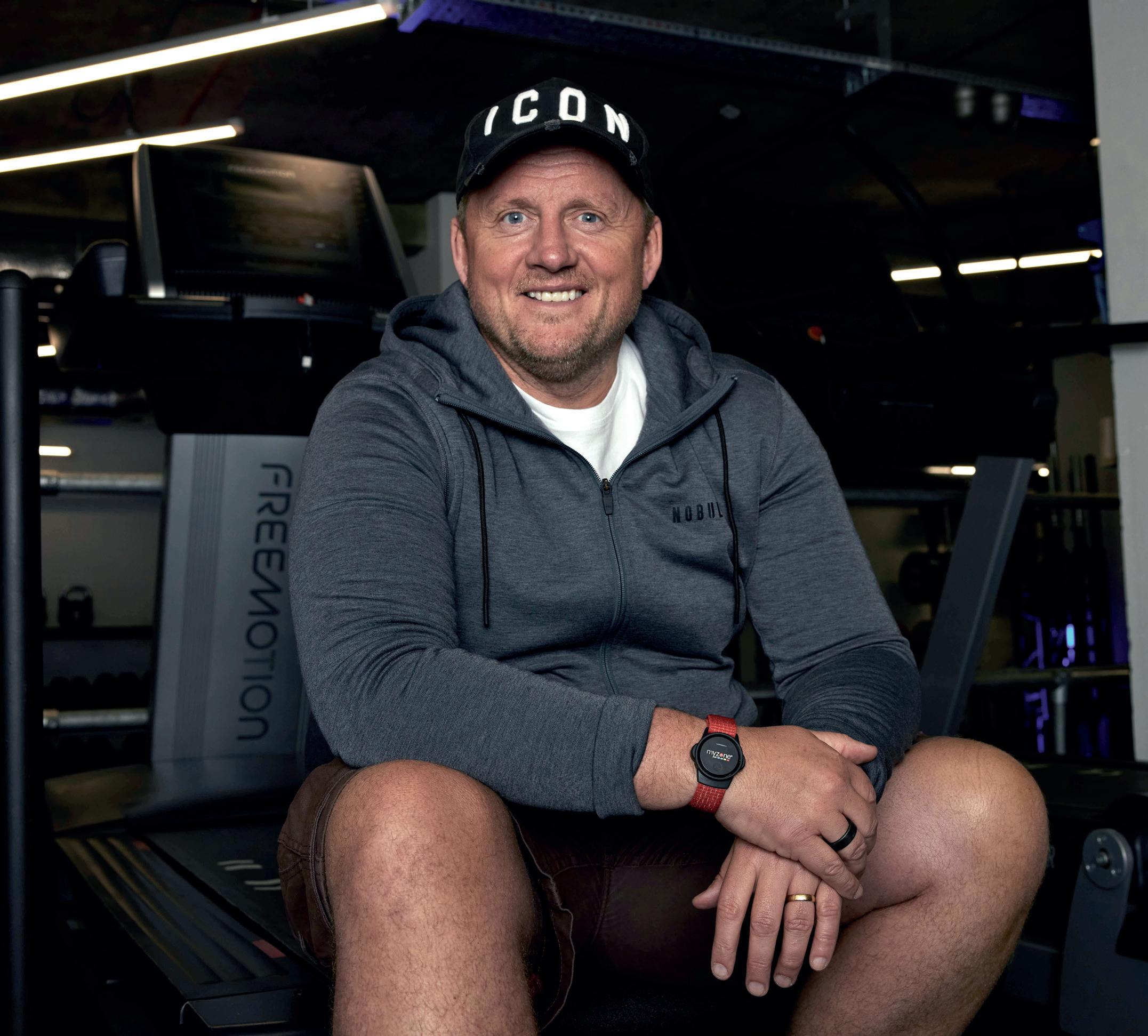



My membership marketing company, CFM, had been attracting millions of new members for health club operators, but half of these were leaving every year. I wanted to find a way of supporting our clients to keep members in their clubs for longer.
I understood that the industry was rewarding fitness, instead of effort. Operators also had challenges sustaining motivation among members and there was no in-club gamification, but a lack of trainer connection with members and, ultimately, no sense of a “tribe”.
In 2009 I started thinking about how tech could be used to solve the issues we’d identified. I believed that a system that would allow the wireless transfer of data, stored
Myzone measures activity as a percentage of the user’s maximum heart rate

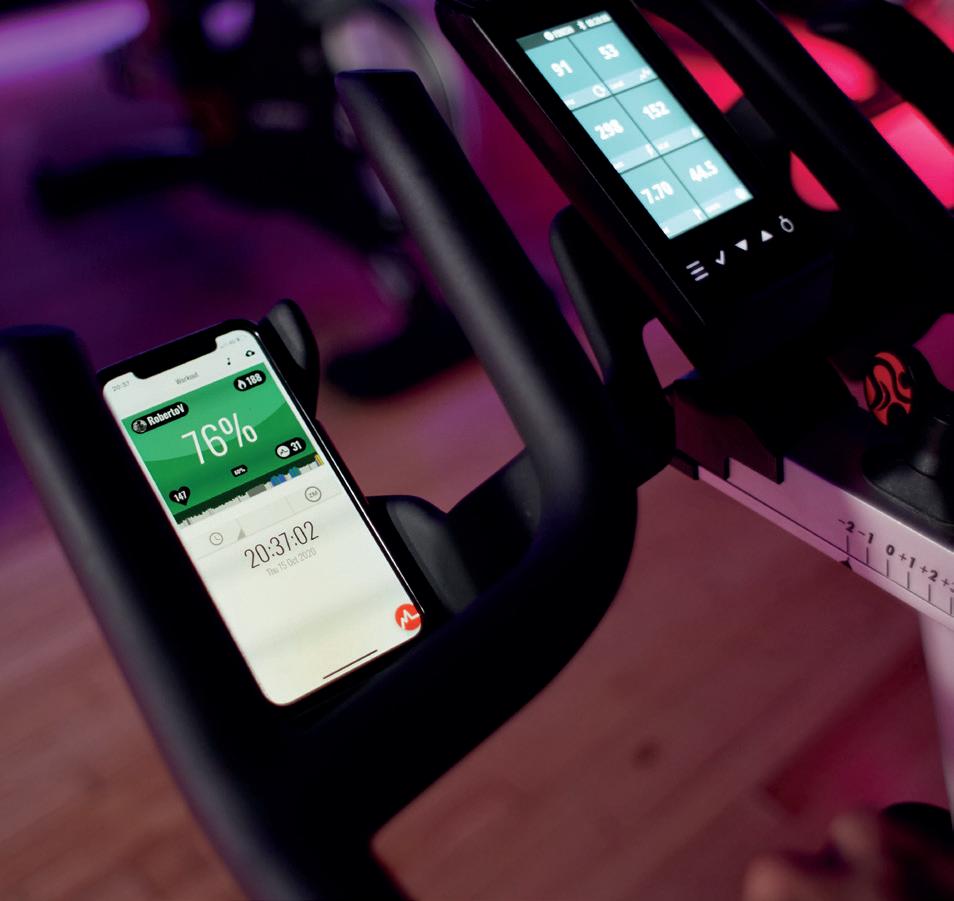
The technology provides users with instant feedback on their exercise intensity, as well as feedback over time
on a heart rate monitor, could revolutionise the gym experience, if used correctly. We set about creating the product and outsourced the development to a manufacturing company while starting to create a buzz about it in the fitness industry. We finally launched in March 2012, with a patent on the ‘wireless transfer of data from a stored belt’ in North America and patent-pending in the rest of the world.
The technology provides users with instant feedback on their exercise intensity, as well as feedback over time, allowing members to
track their progress whether they’re working out in a club, at home or in their local park.
In a gym environment, members strap on the Myzone belt (or MZ-Switch) which are linked to screens around the club, providing a real-time display of their training intensity. Seeing your performance on a screen, where you can compare it with others, acts as a powerful motivator.

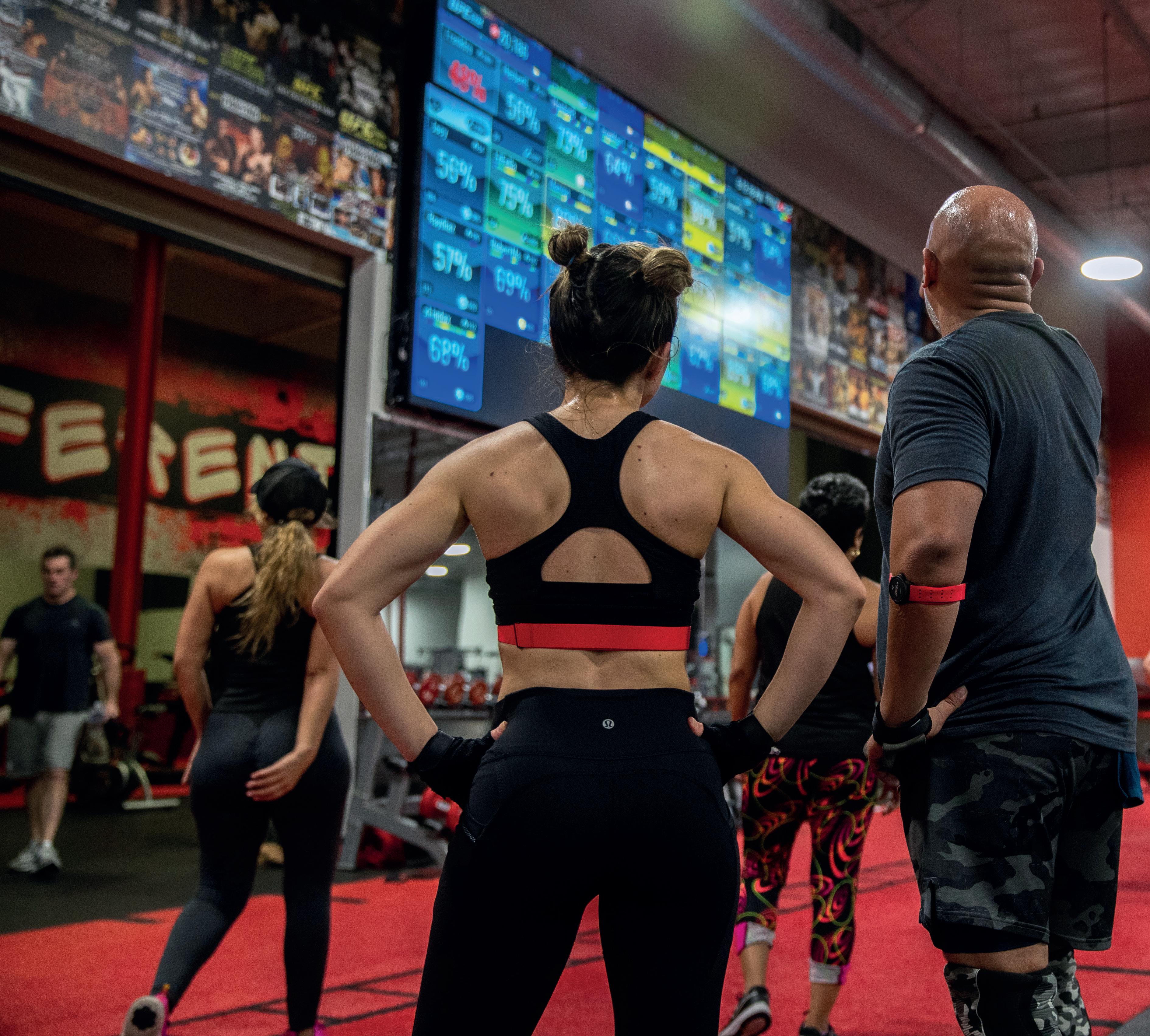
The technology rewards the effort members put into their workouts, rather than fitness, giving users Myzone Effort Points (MEPs) for every minute they spend exercising in their personal intensity zones. The system encourages members to work
their workouts
hard. The more effort they put in, the more MEPS they accumulate and the closer they get to achieving the results they want.
Myzone creates a sense of tribe among members who can take part in friendly competition in the club and share their workouts on social media.

Why has Myzone become so popular?


Measuring activity as a percentage of the user’s maximum heart rate creates a level playing field, allowing members to compete against each other regardless of their level of fitness. It means operators can run challenges in their club, with other clubs, nationally and internationally,
creating a fun and sociable gym experience.

The system also gives operators a unique insight into the key metrics and behaviours of their members and, for the first time, club managers can stay connected with members whether they use the club every day, once a month or not at all.
The technology is suitable for all fitness levels, and as such is utilised by elite athletes as well as those new to exercise or people suffering medical conditions. It puts trainers into the role of coach. They know exactly how hard their clients are working and can encourage and give feedback on their activity between scheduled sessions.
At the same time, the technology gives members accountability when they’re away from the gym. Between visits, they can view their live effort stream through the free Myzone app and can view their daily, weekly, or even yearly effort levels to see how they’ve progressed.
How do clubs benefit from integrating Myzone?
There are only four ways a club can make more money: 1. Increase the number of members. 2. Increase the price of membership. 3. Increase the yield per member. Or 4. Cut costs.
Myzone assists in all four areas by providing a tech solution that engages members with their facility. This helps clubs provide substance to their increased membership price and the longer someone stays at the club, the more the member yields. Costs can also be reduced with Myzone due to the inclusive virtual class offering, free member app, group training prescription and the ability to remote-coach clients at scale.
The technology is suitable for all fitness levels, and as such is utilised by elite athletes as well as those new to exercise or people suffering medical conditionsMyzone introduced the MZ-Switch wearable in 2021 ALL PHOTOS: © MYZONE
How much market penetration have you achieved?
To date, Myzone has been adopted by more than 9,000 clubs in 84 countries, translated into 19 different languages and we’ve shipped over two million devices around the world
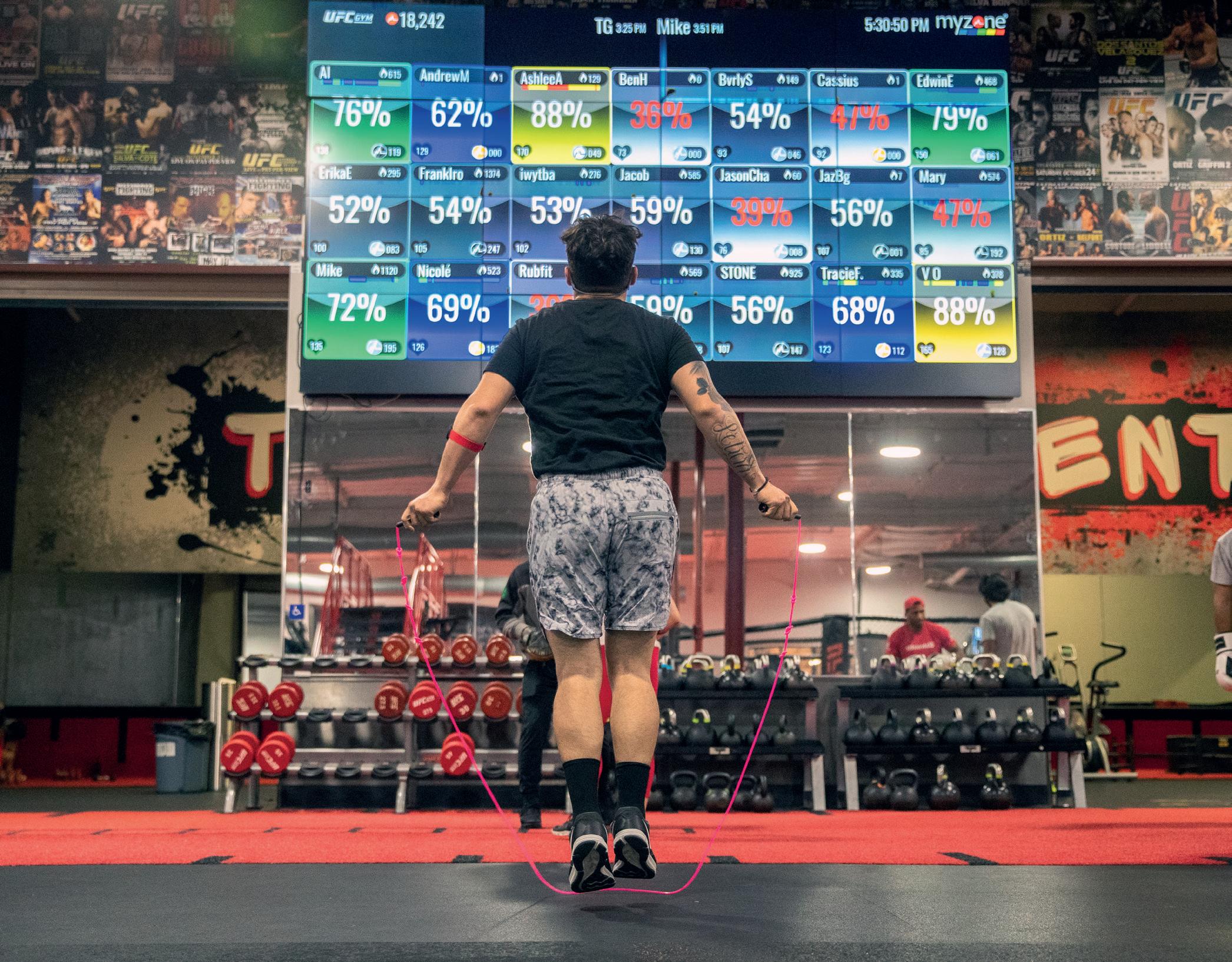
And you’ve carried on innovating since the original launch in 2012?
We have! In 2021, we launched MZ-Switch, the world’s first interchangeable heart rate monitor that can be used on the chest, arm or wrist – which means users can monitor and get MEPs for every single type of physical activity. It is also 100 per cent waterproof.
What is more, MZ-Switch is also the first device in the world that has both PPG (photoplethysmography) and ECG (electrocardiography) readings, providing a complete pathway for accurate monitoring and ensuring there are no blind spots in a user’s physical activity measurement.
What has been key to Myzone’s success? Fundamentally it’s because of our people. The pedigree of our senior leadership team comprises over 100 years at executive level in the fitness industry.
Many tech companies try to parachute into the health and fitness industry with their tech solution, but we all started from within the industry to try and solve the issue of exercise adherence and retention. That trust, respect and leadership position has enabled us to sit at the table of the top global operators and independent sites to learn and get honest feedback.
What is the current focus at Myzone?

We’ve had ten frantic years and now we plan to formalise our approach while staying as agile as possible with the evergrowing team. This will ensure we truly hear the voice of the customer while constantly improving our offering.
What is your vision?
I’d love Myzone to be the go-to data collector of physical activity evidence for the world, to help shape government policy around the benefits of exercise and to motivate the world to be more physically active. Beginning with schools, through to families, to businesses, health clubs and even elite sport, we have a clear pathway for someone sitting on the couch to become truly physically active. ●


From huge increases in pool operating costs to a chronic shortage of lifeguards and teachers, swimming, as a sport, faces plenty of challenges. SportsNation finds out how the industry is responding to the challenges
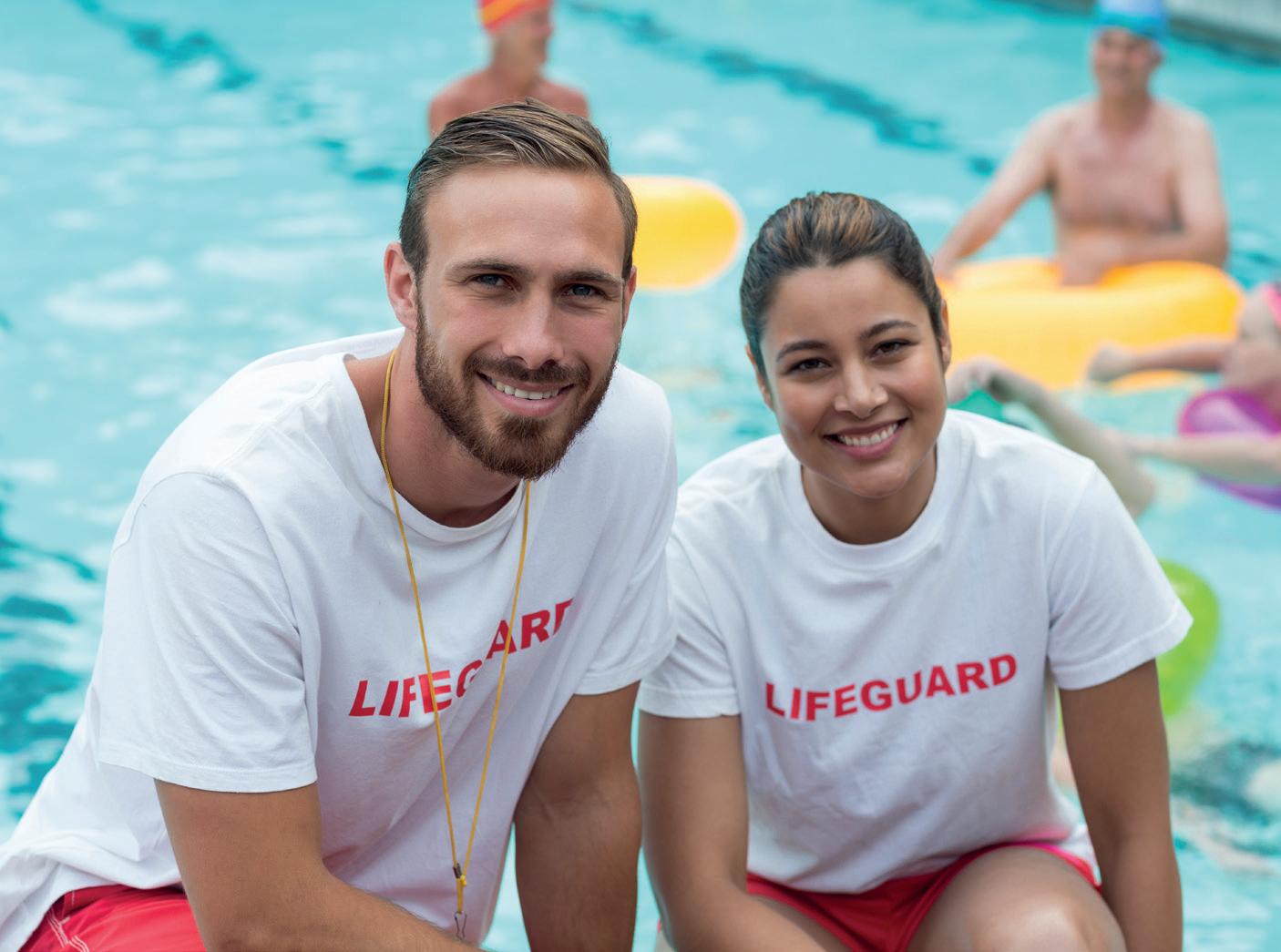


First the good news. Swimming is still among the most popular physical activities in England, with around 4.7 million people swimming twice or more a month. The latest figures from Sport England’s Active Lives report show that, between November 2021 and November 2022, 9.1% of adult females and 7.4% of adult males took part in swimming at least twice a month.
Then the bad news. Those figures, while still impressive when compared to other activities tracked by Sport England, are in permanent decline. The number of people who regularly swim has been falling ever since the first Active Lives Adult Survey came out. In 2015-16, 12% of adult
females swam at least twice a month, while for males the figure was 9.9%. That means that there has been a significant drop in the total number of adult swimmers in the past six years or so.



Unfortunately the falls in numbers aren’t limited to adults. A study by the Swimming Teachers’ Association (STA) in 2022 found that one third of UK children leave primary school without knowing how to swim. The worrying statistic is blamed on a chronic shortage in swimming teachers, which has been made worse by first the pandemic and then the cost of living crisis. An industry-wide survey that STA conducted in November 2021 revealed that UK swim schools had lost 50% of their teaching staff during the pandemic – resulting in many thousands of children now having to join long waiting lists for swimming lessons.
This, according to the STA, has led to a situation where parents recognise the importance of swimming and are keen to enroll their children for lessons, but simply can’t find opportunities to do so.
“Demand for swimming lessons is at a record high, but with availability still being restricted because of a lack of teachers – infused now too by the rise in living costs with some parents unable, through no fault of their own, able to travel further afield – they are concerned that there could be a generation of children that miss out on learning to swim,” the STA says.
Swimming remains among the most popular physical activities





The issue is well-recognised and those responsible for getting more people into swimming are tackling it. Earlier this year, Swim England – the sport’s national governing body – joined forces with the STA to conduct a learnto-swim and workforce audit of the aquatics sector. The results found that 65 per cent of learn to swim providers are restricted from growing their learn to swim programme due to the swimming teacher shortage.
As a result, of the 73,000 roles currently available across the aquatics sector, almost 12,000 are vacant. This means that the sector is down by
more than 15% of its total workforce.
The shortage is having a huge impact – it is estimated that the equivalent of more than 660,000 children could be missing out on swimming lessons. The two leading learn to swim programmes are now working together to increase the number of swimming teachers, in order to return to prepandemic workforce figures.
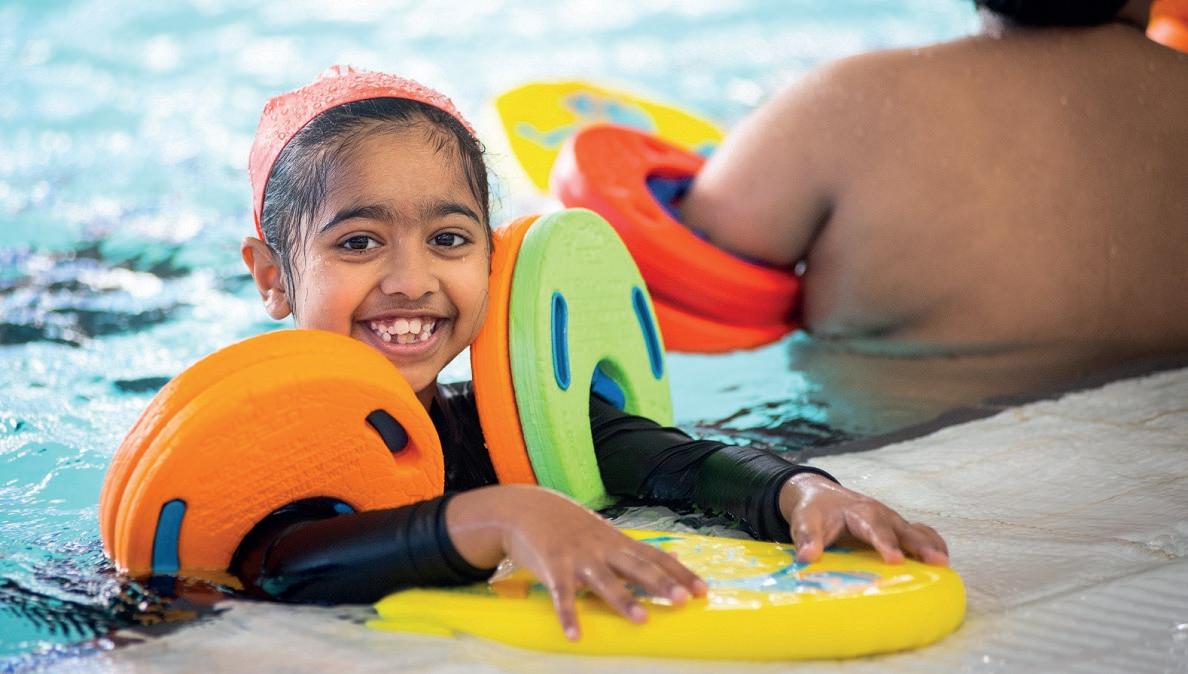
Jane Nickerson, Swim England CEO, said:
“This has always been an important topic and the sector has always been in need of more swimming teachers, but following the effects of the pandemic, this has now become an urgent issue.

“No one should miss out on the opportunity to learn to swim”Making swimming accessible to all is a major focus for Swim England
There has been a lot of good work done in an attempt to tackle the shortage from both ourselves and the STA, but now it is time to collaborate to help share this message as widely as possible.
“No one should miss out on the opportunity to learn to swim and if this is not addressed, it will have a lasting impact on the sector. We will continue to work to make the routes into teaching more accessible and inviting so that those who have changed careers will consider returning, and many more will look at teaching swimming as a viable career option.”
Dave Candler, STA’s CEO, added: “The issue of swimming teacher shortages has been a subject of concern for the leisure industry for many years, with the pandemic exacerbating the problem as our initial research in 2021 identified. Our primary concern is always the impact this is having on children being able to access swimming lessons and learn a key life skill.

“This is why, since the pandemic, we have funded and driven many recruitment campaigns, and are now joining forces with Swim England to increase awareness even further and tackle this serious issue.”
While ensuring there are enough teachers, so that children have an opportunity to learn to swim

in the first place, the Sport England figures show that there is a wider issue for swimming to tackle too – one of retention. Many children seem to abandon swimming once they learn to swim a few widths or lengths, which is a wasted opportunity for both children and the sport of swimming.

One of those to have identified the trend is Royal Life Saving Society UK (RLSS UK), which works with operators across the UK to extend the “swimming journey”. The aim is to keep children and young people engaged in the activity beyond the Learn to Swim Framework.
RLSS UK’s Rookie Lifeguard programme, for example, helps children transition from swimming lessons to life-long swimmers by adding some purpose to the activities.
Suitable for children from 8 to 12 years old, the lifesaving programme teaches survival, rescue and lifesaving sport skills. In 2022, around 48,000 children participated in Rookie Lifeguard. Swimming pool and leisure centre operators can run Rookie Lifeguard as a stand-alone course or as part of the learn to swim programme.
One of the operators to have adopted the initiative is Active Leeds, which runs a particularly successful Rookie Lifeguard scheme. Hundreds of youngsters take part in sessions across its centres, with class sizes ranging from 12 to 80 children.
Another way that RLSS UK is helping operators grow the sport and retain swimmers is the National Lifesaving Academy (NLA). Launched in October 2022 as RLSS UK’s senior lifesaving award programme, the NLA is designed for youngsters aged 12 years and over and can provide recognised prior learning (RPL) hours for lifeguard qualifications such as the NPLQ. Rookie Lifeguards can transition to the programme, which offers a suite of progressive awards teaching personal survival, first aid, CPR, rescue and fitness while keeping swimmers in the pool longer.
Perhaps the most pressing issue, however, faced by swimming is the surging cost of running pools and aquatic facilities. Energy costs alone have more than doubled in the past 18 months – and there doesn’t seem to be an immediate solution to bring those down. As swimming pools and leisure centres are disproportionately affected by rising energy costs,

given their high energy intensiveness, it is easy to see why there are concerns about their future viability.
In late 2022, industry body, ukactive, undertook a consultation with national public leisure operators to risk assess the current threat to their facilities. The findings revealed that 40 per cent of council areas are at risk of losing their swimming pools and leisure centres.

Three quarters of council areas are also classified as ‘unsecure’, meaning there is risk of the closure of leisure centres and/ or reduced services before 31 March 2024.

Following industry pressure, the government has recognised the issue and, to its credit, has made help available. In its Spring Budget, the chancellor made £63m available to leisure centres with swimming pools over a 12-month period, to help facilities most in need.
The phase one of the Swimming Pool Support Fund – which will make £20m worth of funding available to operators – opened in June and
“Rookie Lifeguards can transition to the programme, which offers a suite of progressive awards teaching personal survival, first aid, CPR, rescue and fitness”
will be managed by Sport England. The fund is open to all councils in England with a maximum of £500,000 available per applicant, based on data showing the impact of rising costs. Applications need to be submitted to Sport England before 11 August and those successful will be informed by the end of September with payments starting to be made in October.
“The Swimming Pool Support Fund will go some way to ensure that local authorities across the country are able to keep these
much-loved facilities open,” Nickerson said.
“We campaigned long and hard with a number of partners to ensure the government made this cash available as it was so clearly needed. Now, we hope as many councils as possible will be able to take advantage of it to help minimise potential closures and ensure local communities have the pools they need for our members, clubs, children learning to swim and the millions who rely on them for their mental and physical health.
“We will also be monitoring the impact of the fund closely to see if additional support is required.”
Phase two of the fund is due to be launched in September and will provide investment to improve the energy efficiency of public facilities with pools in the medium to long term.

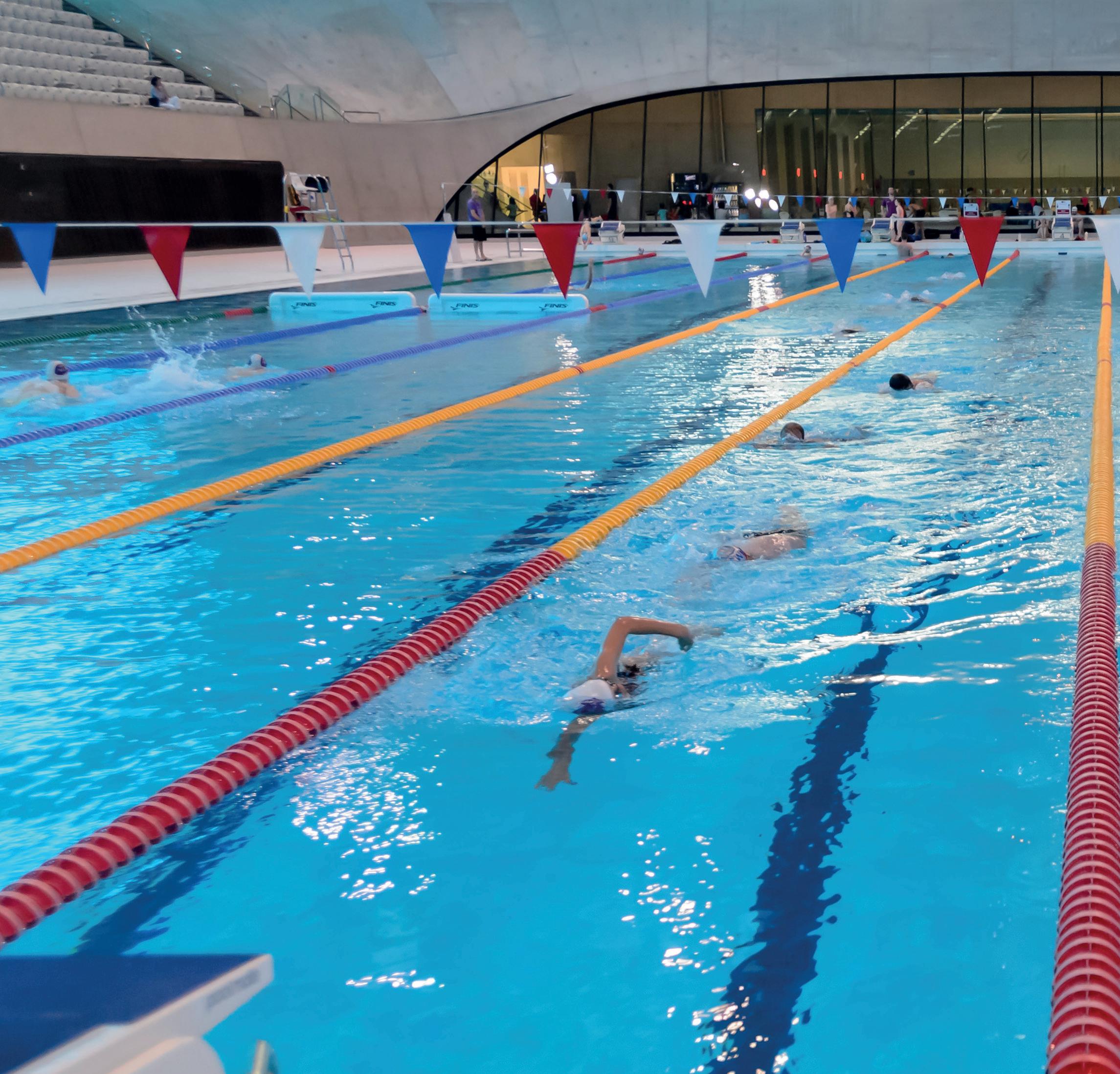
Diversity and inclusiveness in sport is a topic that affects everyone and every sport – and swimming is no different. A key objective in Swim England’s recently-published 10-year strategy, Access Aquatics, is to see the proportion of under-represented groups in both participation and the workforce rise. From November



2023, all of Swim England’s 946 clubs will have to submit a Diversity and Inclusion Action Plan as part of their requirements to remain affiliated.
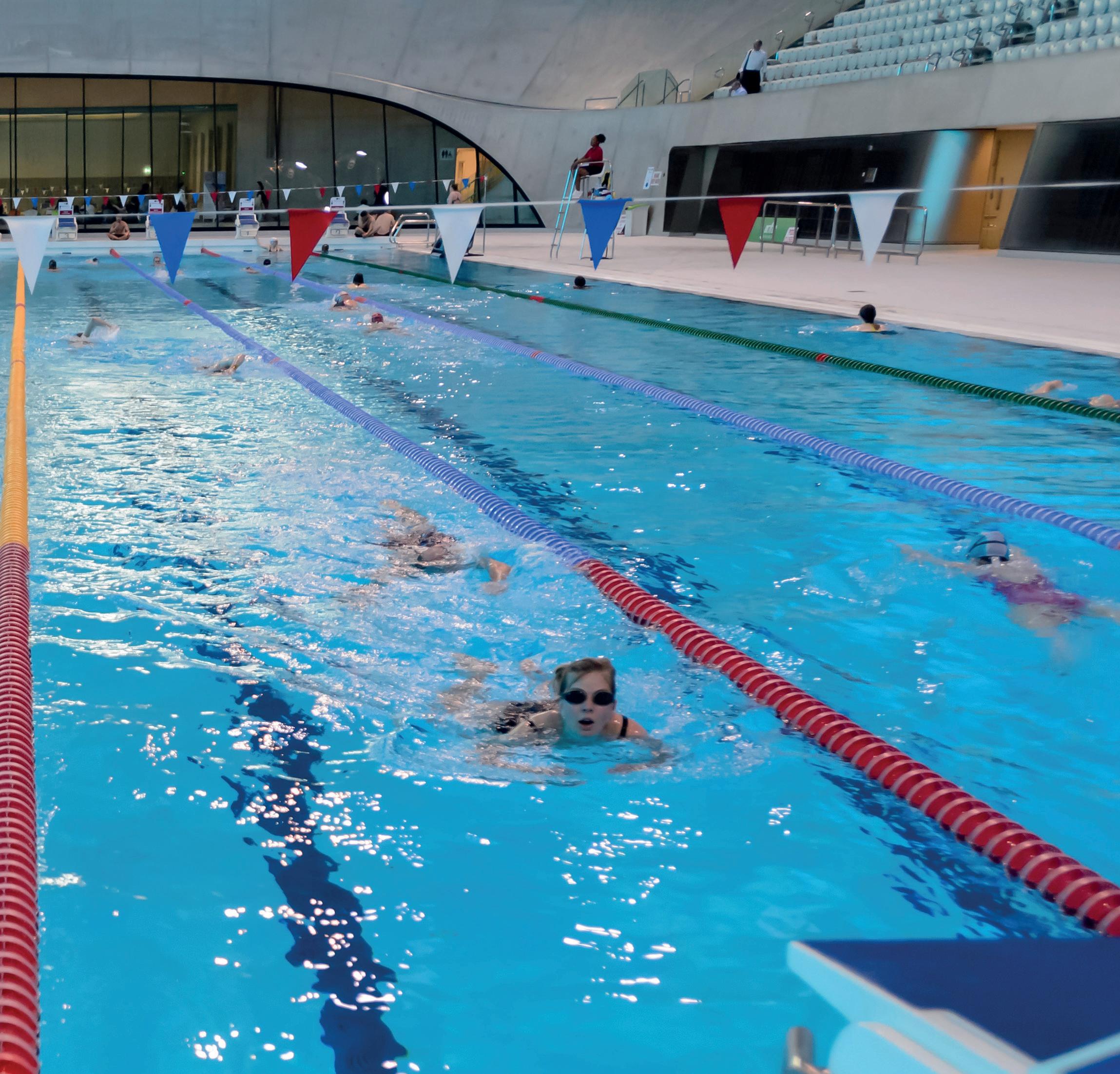
The plan aims to help clubs understand how to remove the barriers to participation and make aquatic sports and activities ‘accessible, inclusive and safe for everyone’. Relevant club officers will also be required to take a free ‘Foundations of Inclusivity’ CPD, which gives an introduction to equality, diversity and inclusion (EDI). It gives advice on how to approach EDI, the use of appropriate language and the importance of adaption.
The Diversity and Inclusion Action Plan will also include supporting resources for clubs to utilise. Mike Hawkes, Swim England’s head of diversity
and inclusion, says: “We’re committed to tackling the inequalities which currently prevent diverse communities taking part in aquatic activity – but we can’t do it on our own. Clubs can play a vital role in helping bring about this important change which will have added benefits for them, too.
“By recognising how to break down the barriers to participation, clubs can create a more accessible environment to enable people from under-represented groups to participate in the activities they provide and take on volunteering roles. The Diversity and Inclusion Action Plan and free Foundations of Inclusivity CPD will be key tools for clubs to help us achieve our mission of enabling access to aquatics for all.” l
“We’re committed to tackling the inequalities which currently prevent diverse communities taking part in aquatic activity”
Synthetic sports pitches are becoming increasingly popular across a range of sports in the UK – at both elite and grassroots level. The main reason is obvious: the increased number of playing hours they offer clubs and facility operators when compared to natural grass.

On average, a synthetic turf pitch can be used up to 60 or even 80 hours per week (depending on maintenance and floodlighting), while in a worst-case scenario, a grass pitch can only take around six to eight hours per week. In addition, synthetic surfaces can offer nearguaranteed playing hours during the winter months and in inclement weather, while thousands of community grass pitches around the country become unplayable.
Synthetic pitches can, however, be a costly investment. In order to put that investment in use and to ensure it provides benefits from the longest possible time, it’s imperative that pitches are maintained properly. When it comes to 3G pitches, combining daily and weekly in-house routines with specialist, deep-cleaning work is the key to a successful pitch maintenance programme. So what happens after the carpet has been laid and the infill has bedded in? How do the clubs and facility owners/ operators keep the pitches they’ve spent their cash on playable for longer and protect their significant investment?
Traditionally the perception has been that synthetic surfaces require very little upkeep and, while there is potentially less to be done on a newer surface than on a natural grass pitch, effective maintenance is paramount to the longevity of the pitch.




One such club protecting its investment is Northern Premier League side, Worksop Town. Nicknamed the Tigers, the club had a new 3G FIFA Quality Pro pitch installed at its Sandy Lane stadium in August 2020 and opted for a MX Elite 60B carpet supplied by SAPCA member, GreenFields.
Recognising the need for regular maintenance from the outset, Worksop Town
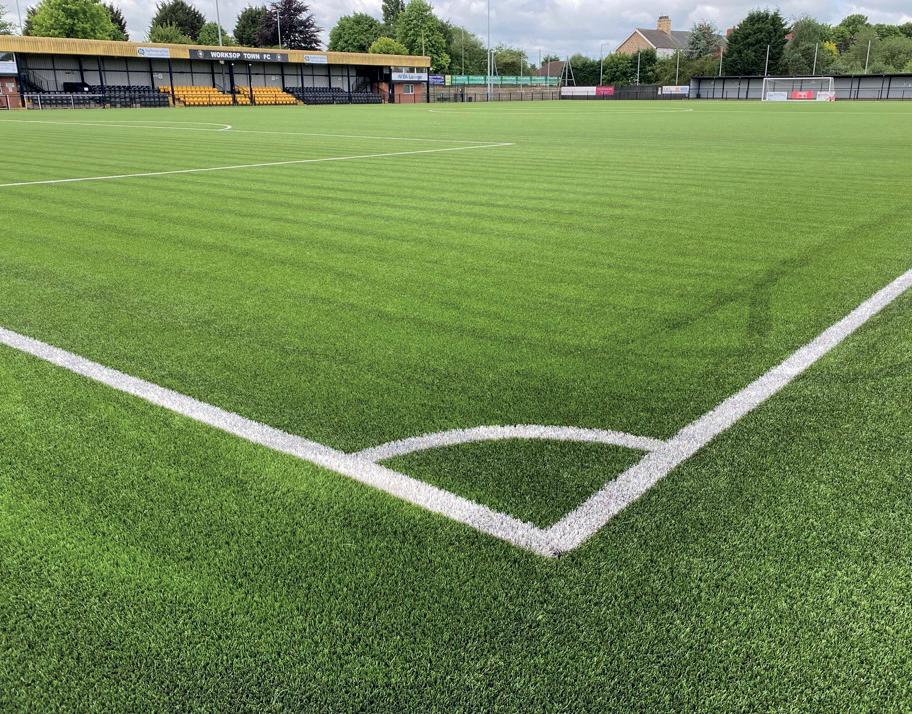
implemented a rigid in-house maintenance regime, which included regular drag brushing utilising a newly purchased Sisis Brush-Pro.
In addition to its dedicated in-house maintenance regime, the club has appointed SAPCA member, Replay Maintenance, to undertake a bi-monthly Revive procedure. Thanks to the combination of the two, the surface has been kept in immaculate condition – evident in the club securing the title in the 2022-23 season and promotion to the Northern Premier League Premier Division.
In preparation for the 2023-24 season, Replay Maintenance has completed a full pitch Renovate process and rubber infill top up for the club. The Renovate process opens the carpets’ synthetic fibres and de-compacts the lower-level infill, improving the pitch playing performance.


Worksop Town chair, Pete Whitehead, said: “One of my first actions as chair was to invest in a new synthetic pitch to provide our players with the best playing surface possible. We recognised that our investment requires specialist care from the point of installation.
“The combination of Replay Maintenance and our on-site team ensures our pitch is in excellent condition year-round and no doubt lengthening its lifespan, ensuring a better return for the club. Replay has been onhand to assist with invaluable advice, even co-ordinating our pitch’s annual FIFA test.”
SAPCA member, O’Brien Contractors, has completed a £1.65m design and build contract of a multi-use games area (MUGA) at Joseph Chamberlain College in Highgate, Birmingham. The brownfield land the college purchased was the former site of British Car Auctions and the development consists of a 3G MUGA pitch, associated 125 space car park and welfare/changing room facility.

The 1,419sq m MUGA is used predominantly for five-a-side football and has a Domo Duraforce XSL playing surface, with integrated pitch markings. Fencing to the perimeter of the pitch consists of 3m high weld mesh with a 2m-high polypropylene sports ball netting fixed above on one end and half a side to act as additional ball stop retention. The fencing was installed by SAPCA member, B&L fencing Ltd of Bromsgrove.
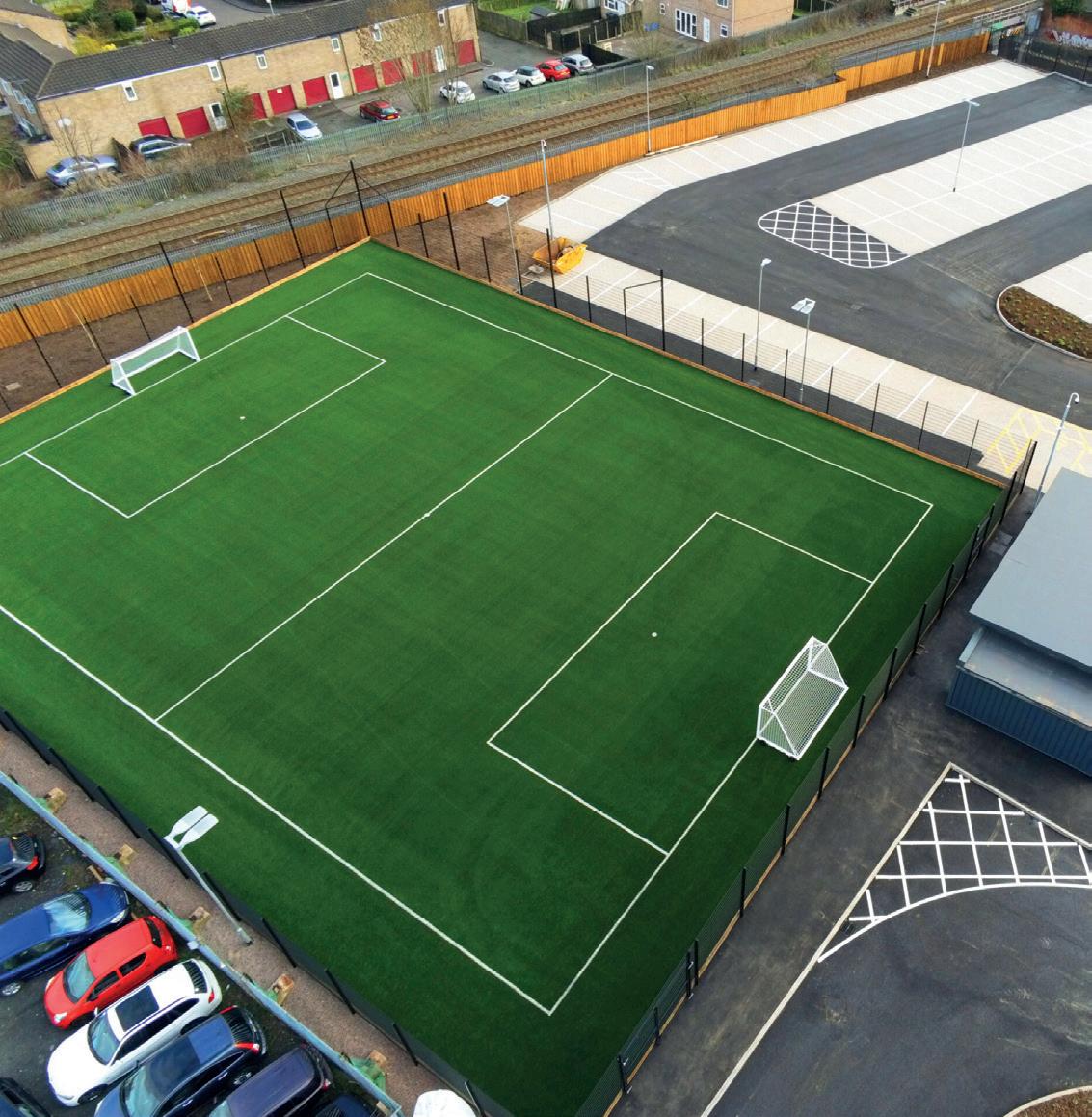


Top-quality grassroots facilities are being used to bring communities together through sport in Ilford, East London, thanks to the support of the Premier League, The FA and Government’s Football Foundation.
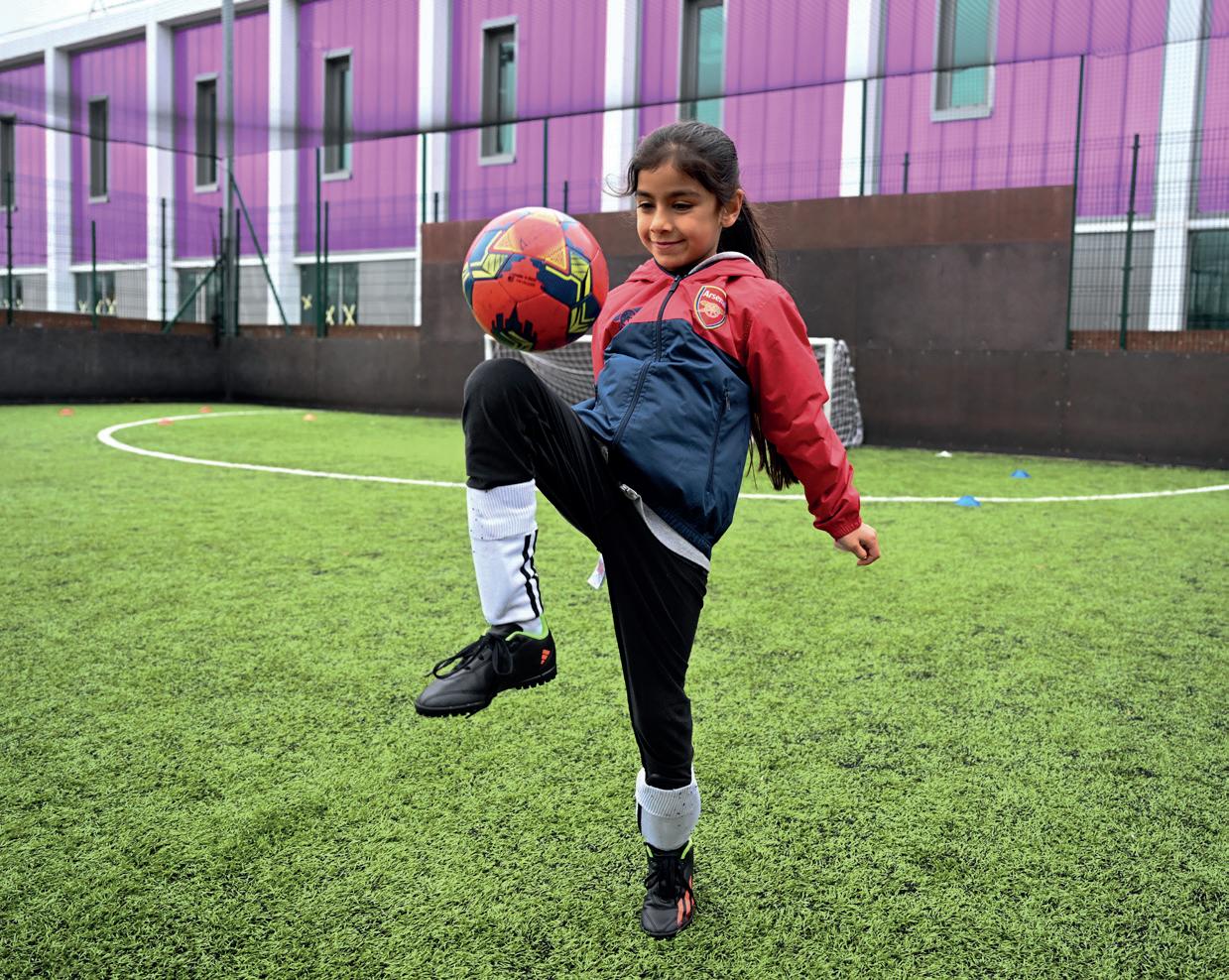
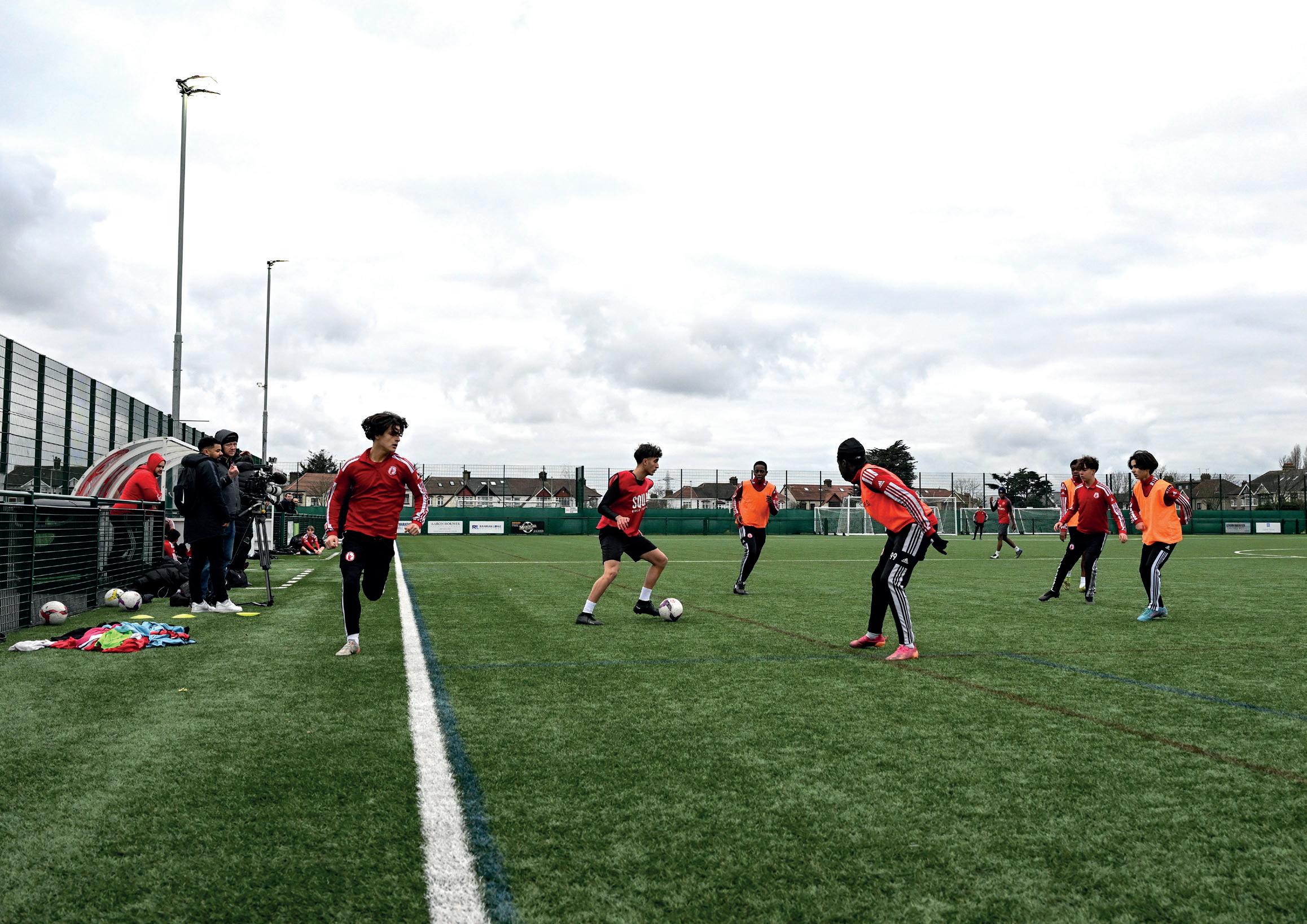
In the nearly 100 years since Frenford Clubs was first founded, the Club has gone from a group of boys meeting to play sport every Sunday to a multi-club sports and social organisation providing a varied programme of physical, mental and spiritual activities. Since 2018, the club has received more than £700,000 in Football Foundation grants to transform the facilities at their home ground, The Jack Carter Centre in Essex.
The site now boasts a new floodlit full-size 3G stadia football turf pitch, two refurbished small-sided 3G pitches, and improved grass pitches. The investment has enabled Frenford Clubs to help more people than ever before through delivering football for all ages and abilities, from grassroots
through to the first-team, as well as a range of other sports, including cricket, basketball, tennis, table tennis and martial arts.
“The whole idea of Frenford is to provide a service to young people as well as any parts of the community, young or old,” says Irfan Shah BEM, CEO, Frenford Clubs.
“Football is a huge part of what we do to engage young people from all walks of life. It builds confidence and continuity into their lives and gives them opportunities that they wouldn’t usually have.”
Especially for artificial turf sports grounds: The Trocellen XC & XC Plus series includes high-quality shock pads made of closed-cell, chemically cross-linked polyethylene foam. ProGame shock pads are delivered in rolls of 2-meter width and tailored length to meet the requirements of the field. The combination of the unique XC-punched polyethylene foam guarantees excellent drainage properties, quick and easy installation, and very high dimensional stability. The wide range of thicknesses (6 – 14 mm) and densities (30 – 90 kg/m³) caters to the requirements of a variety of sports.




WE MAKE SPORT.
We want to make football even better – for every player and for the environment. That’s why our FIFA-certified LigaTurf synthetic turf systems not only lay the perfect foundation for an incomparable playing experience and player safety, they are also sustainably produced in Germany and built to last. What’s more, with LigaTurf Cross GT zero, we have created the world’s first entirely carbon-neutral synthetic turf.








www.polytan.com




SAPCA member Amorim Sports’ infills were chosen for an outdoor pitch project at the Suwon World Cup Stadium in South Korea. S-Build Co., a Korean company specialised in the production, construction, operation and maintenance of sports fields, picked the Amorim’s Sports’ Nature product for the construction of the Footsal Park adjacent to the main stadium – home of the K League 1 team Suwon Samsung Bluewings FC.
S-Build said it chose the Sports’ Nature infill in order to meet the club’s objective of providing players users with a more sustainable football pitch.

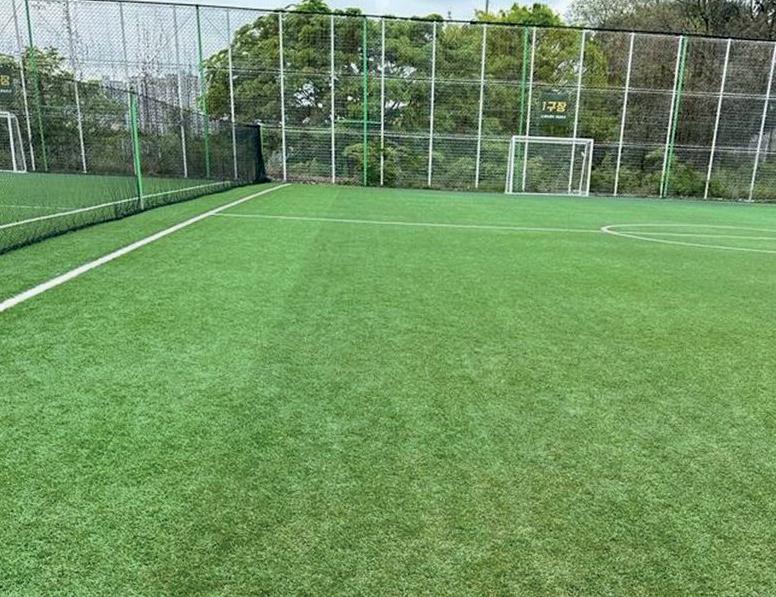
“As a natural material, cork infills offer several advantages over synthetic solutions available in the market,” Amorim says. “These include a natural look and feel, the absence of toxic substances and a neutral odour.
“By virtue of its cellular structure and composition, cork is also an excellent thermal insulator, and can attenuate thermal variations. Due to their elasticity, cork infills can optimise shock absorption and energy restitution in the artificial turf system, and also absorb the impact from falls, thereby providing a more comfortable playing field for athletes. The unique characteristics of this 100% natural, renewable and recyclable raw material ensure a perfect balance between performance and environmental sustainability.”








Guildford Hockey Club, located at Broadwater School, Surrey, is a top English Hockey club with future ambitions. The club has two full size hockey pitches – one of which already had a TigerTurf Evo Pro field and training area. The pitches, built by SAPCA member Velocity Sports are used daily by various age groups and teams for training and matches.
The club’s positive experience with the Evo Pro surface meant that, when the club decided to resurface its second fullsize pitch, there was only one choice.






“The Evo Pro surface has been absolutely brilliant,” said Dan Fox, a former Team GB and England International and current head of hockey at Guildford. “We have national league 1st teams, so we need a top-quality surface. It’s really helped us as a club and it’s a great surface to play on”.
The Evo Pro pitches are used by



every age group – from U6s to over 50s – the club’s disability Flyerz hockey programme, the national league-playing Men’s and Women’s 1st teams and the Future Stars Programme, as well as the England Hockey Talent Academy. ●

®
by Schmitz Foam ProductsSchmitz Foam Products B.V. is the global supplier of ProPlay ®, the perfect shock pad with drainage qualities for high quality artificial grass systems in sports and playgrounds.








• Meets quality standards of International Sports federations

• Excellent vertical and horizontal drainage capacity
• 25 years warranty for the owner of the field
• Circularity is key:
– Produced from post-industrial recycled foam
– Can be reused or recycled at the end of life of the field
Request your ProPlay® sample at: www.schmitzfoam.com/contact
Find us on:









Elevate is the UK’s largest trade show dedicated to fitness, sport and physical activity. Each year, the event attracts thousands of decision makers to attend the wide-ranging educational programme and an exhibition floor featuring 250 leading suppliers


The annual Elevate show was held at London’s ExCeL on 14-15 June. This year, the educational programme saw more than 200 expert speakers take to the stage for a number of keynotes, panel discussions, seminars and workshops. In attendance were thousands of industry professionals across sport, physical activity
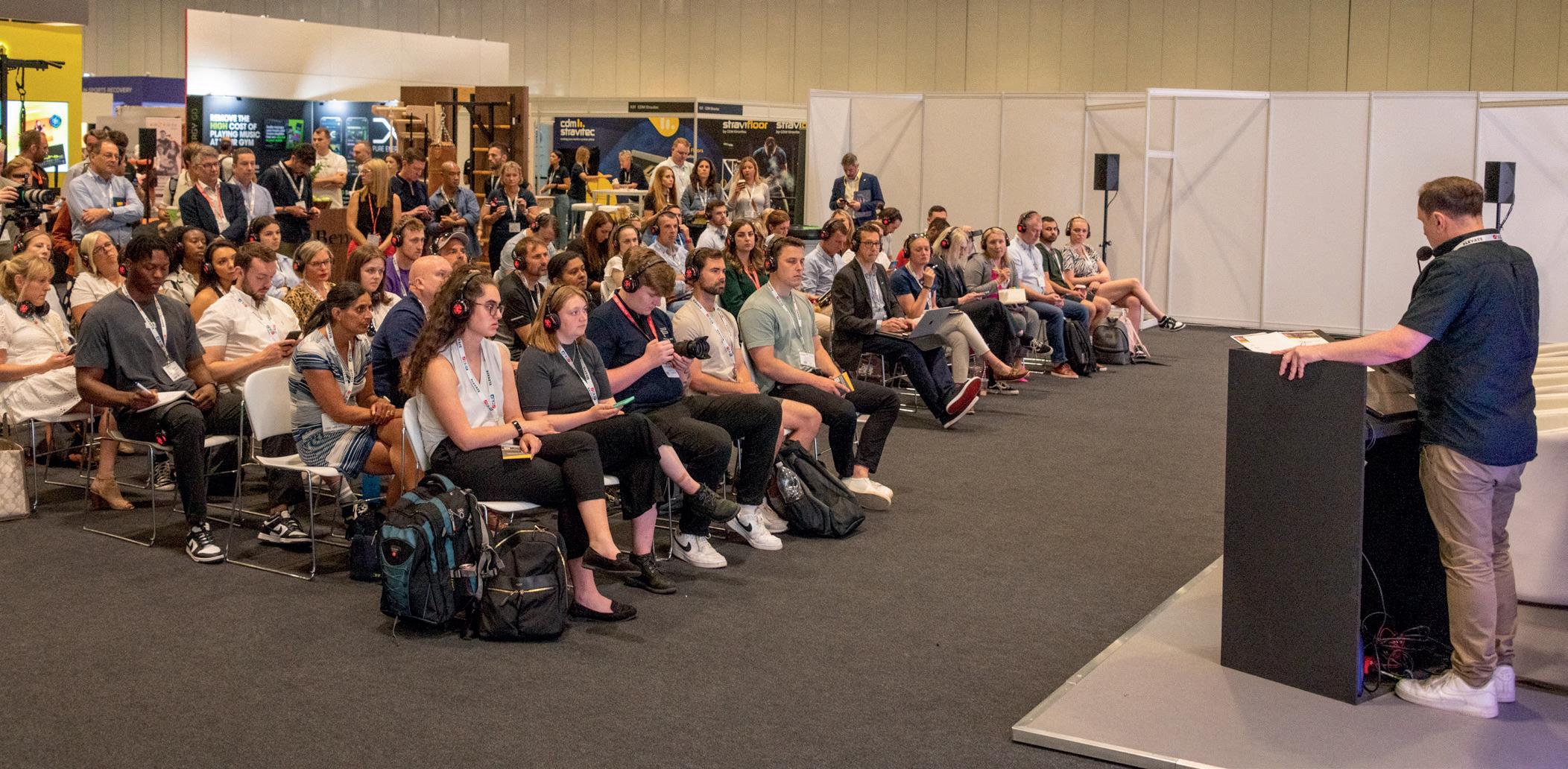
and fitness – as well as around 50 industry associations, media partners and NGOs.








The event kicked off with an opening address from ukactive CEO, Huw Edwards. In it, he outlined how the physical activity sector is still recovering following the pandemic – and that the recovery is being
severely hampered by the cost of living crisis and the skyrocketing energy prices.
Edwards also highlighted how the sector needs to make the “right choices” when it comes to aiding that recovery – and underlined the role the government can play, by enlisting the help of sport, fitness and physical activity to building a healthcare system based on prevention.


“There are choices the government must make to improve the health of the nation,” Edwards said.
“The CEO of the NHS Confederation, Matthew Taylor, assessed the situation well recently when he said that the NHS needs the support of people just as much as the people need the support of the NHS.

“The NHS is unable now, and even more so in the future, to fully service the demands being asked of it unless there is change. According
to the Times Health Commission, ill health among people of working age is projected to cost the UK economy approximately £150bn a year (equivalent to 7% of GDP) and the cost has increased 60% in the past six years.
“The government must – if it wants to preserve the NHS – make the shift to prevention. But it does have a choice on how effective and robust that preventative strategy can be. And it will only be effective and robust if it fully leverages the potential of this sector and the people in this room (at Elevate).
“The size, scale, agility, and professionalism of this sector means that – with a shared ambition with the Government – it can make tangible improvements in the nation’s health.
“In order to do so, the Government must see this sector as less of a photo opportunity, but as an industry in its own right that requires a dedicated strategy for growth.”





Elsewhere, a session titled “Language in Health, Fitness, and Leisure: Redrawing the Future” was hosted by David Stalker, President of EuropeActive. The session was constructed to provide a comprehensive overview of the current state of the health, fitness, and leisure sectors, shedding light on how the sector needs to move forward to meet the evolving needs of populations. Muir Gray, Director of The Optimal Ageing Programme, explored the language used in these industries, encouraging participants to rethink their communication approaches and to explore the traditional use of language – and the impact this has on behaviours and actions.
Tanya Hall, from fitness technology provider, Egym, then provided an honest and open view on how she thinks the sector fails to market and support those not driven by






aesthetics, highlighting how the movement towards health with easy-to-access data is essential for engaging the inactive.

The focus throughout the session was the audience – and the range of experts brought together by Elevate. Rather than a traditional panel session, with the audience asking those on stage questions, Stalker turned the format on its head – asking the audience for their thoughts, experiences, concerns and proposals, highlighting that the whole sector must work together to deliver change and become more forward-thinking.

A live illustrator visually captured the key points and discussions expressed during the session, providing a creative summary of the main takeaways from the conversation, which we are delighted to share with the sector.
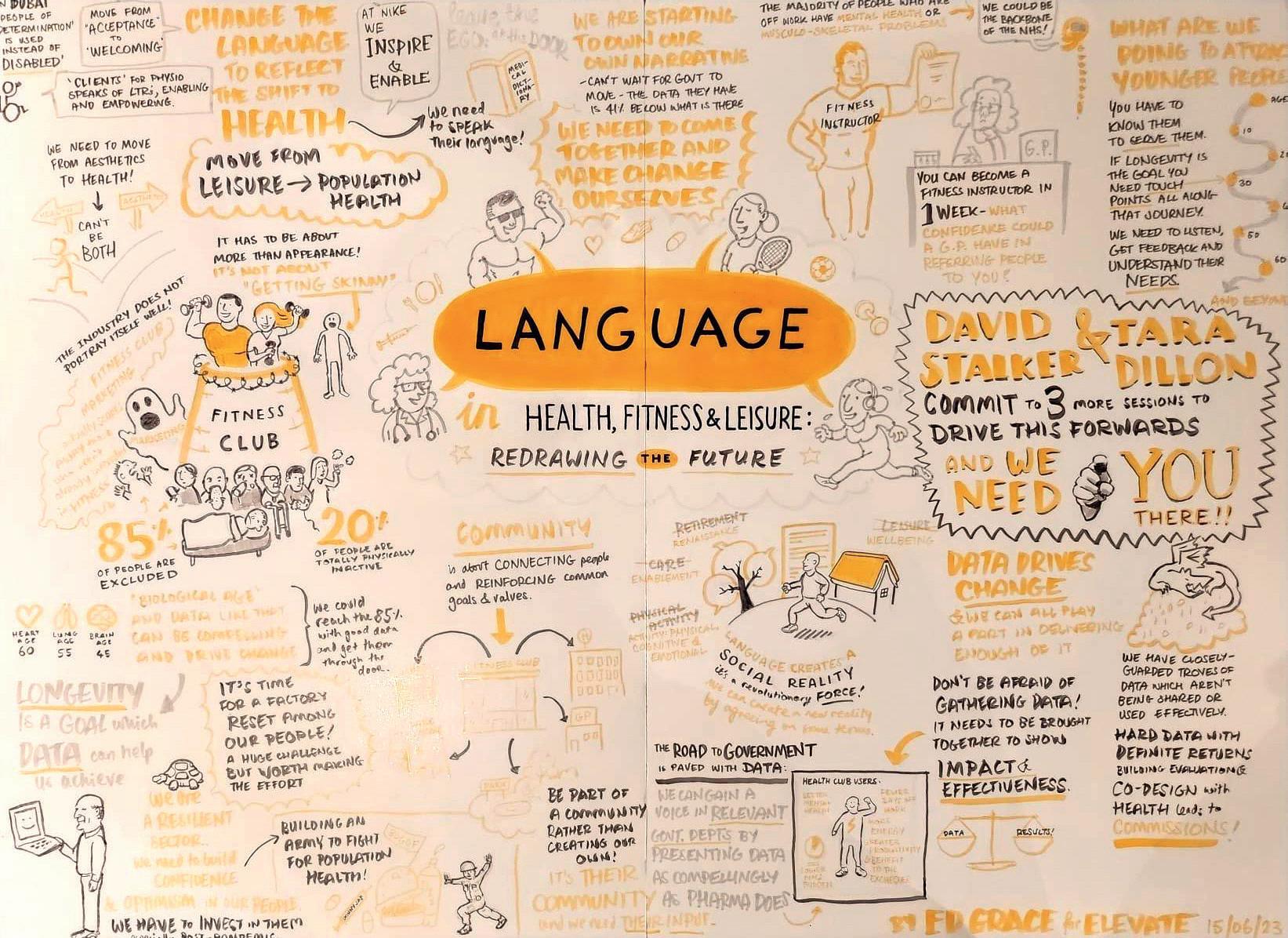
One of the key findings highlighted during the session was the need to change the








Networking is one of the main draws of the Elevate ‘experience’
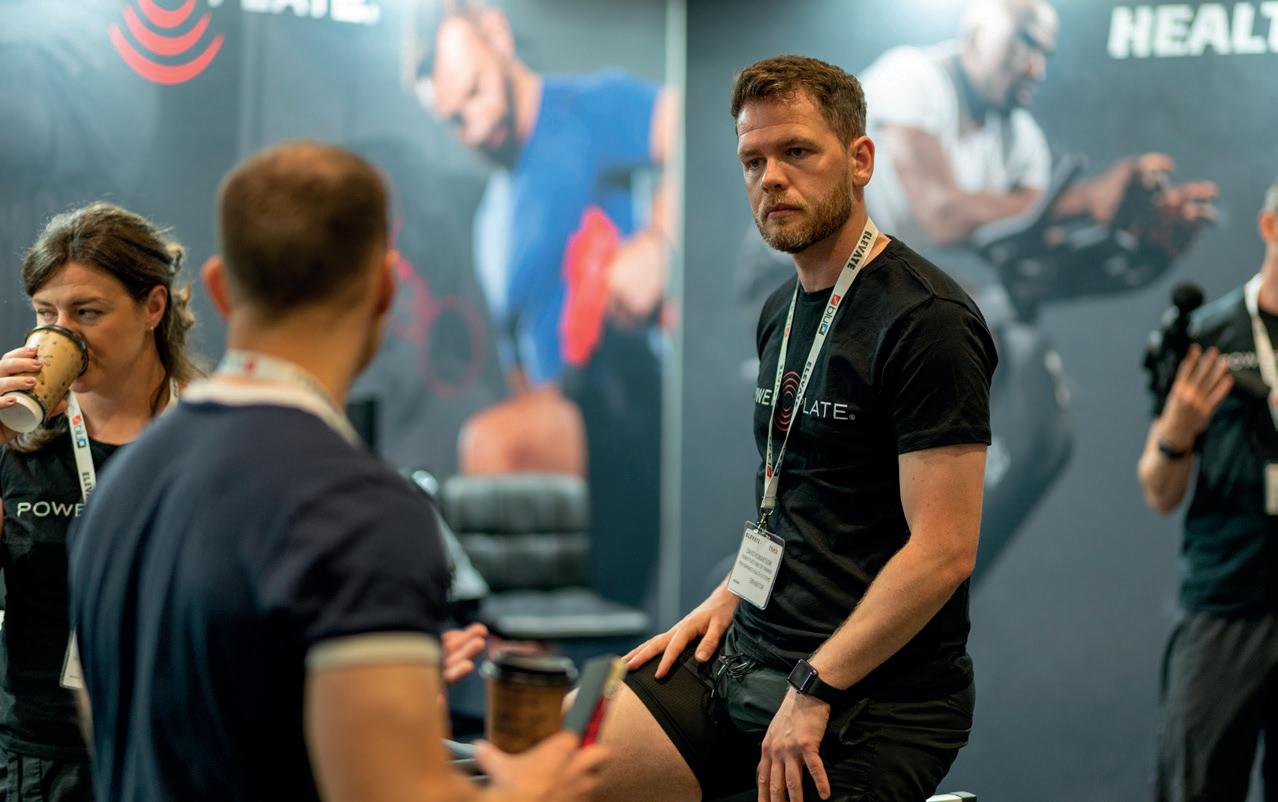
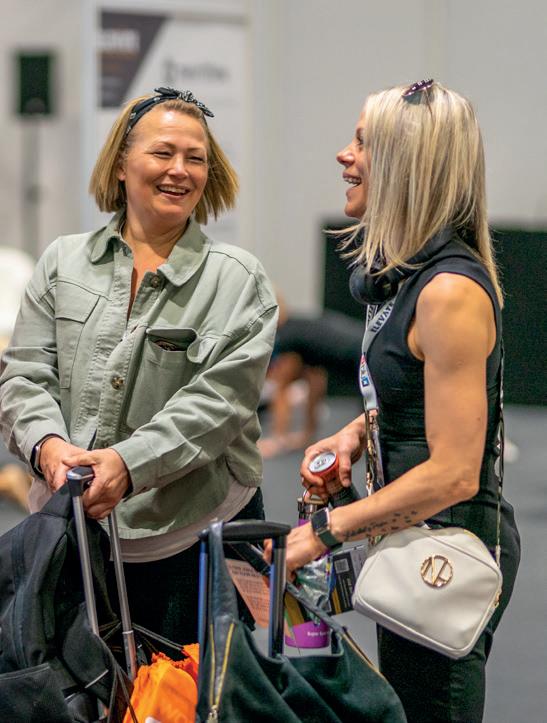




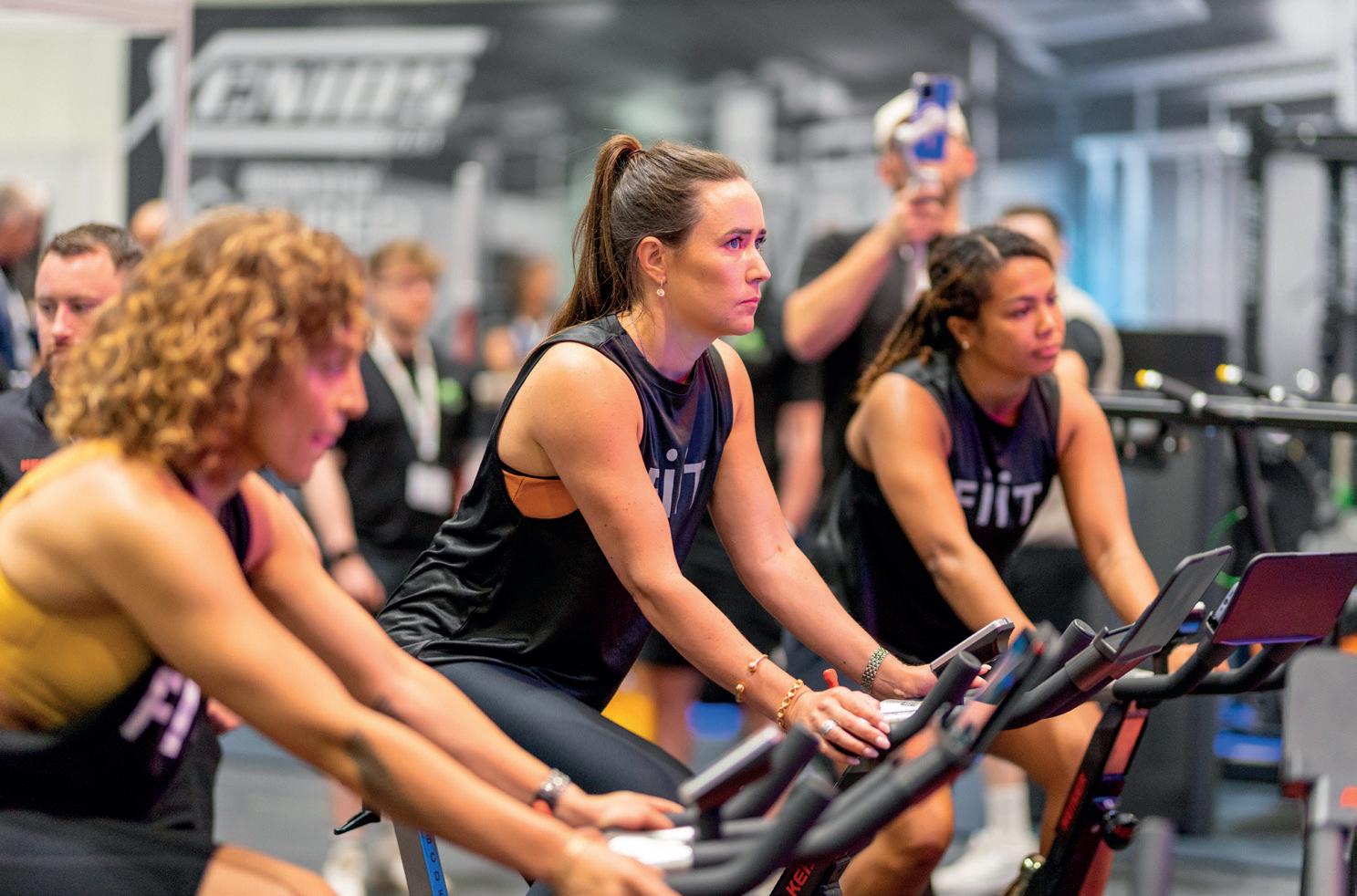


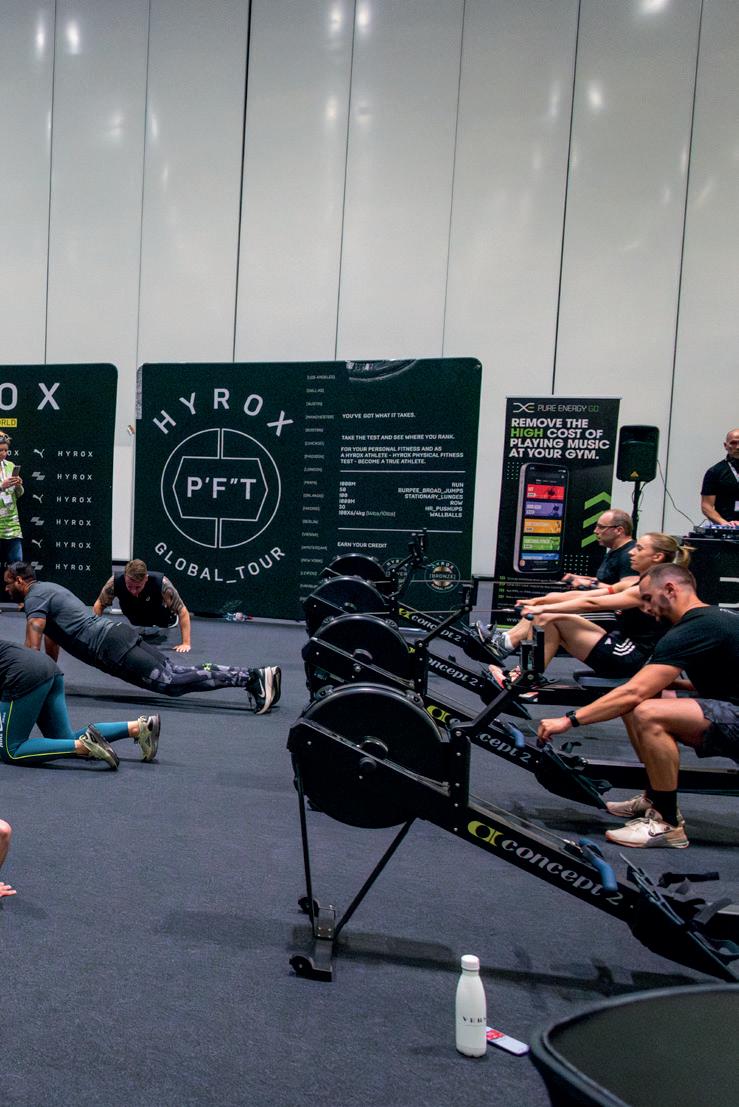
language to reflect the shift of the sector towards health. It emphasised moving from “leisure” to “population health” and shifting the focus from “acceptance” to “welcoming.” The session also stressed that the industry should move beyond the pursuit of appearance and reject previous marketing messages that have proven to be counter productive and not respected by the health markets.
Visitors to Elevate were also able to explore a large exhibition floor, with around 250 leading suppliers showcasing their latest products and services. These ranged from established fitness equipment manufacturers – such as Technogym, Keiser, Matrix, Freemotion and Life Fitness – to physical activity startups hoping to enter the market.


One of these was Hydrohex, a startup hailing from Finland, which has been trialing its virtual aqua fitness offering at five sites in the UK for a
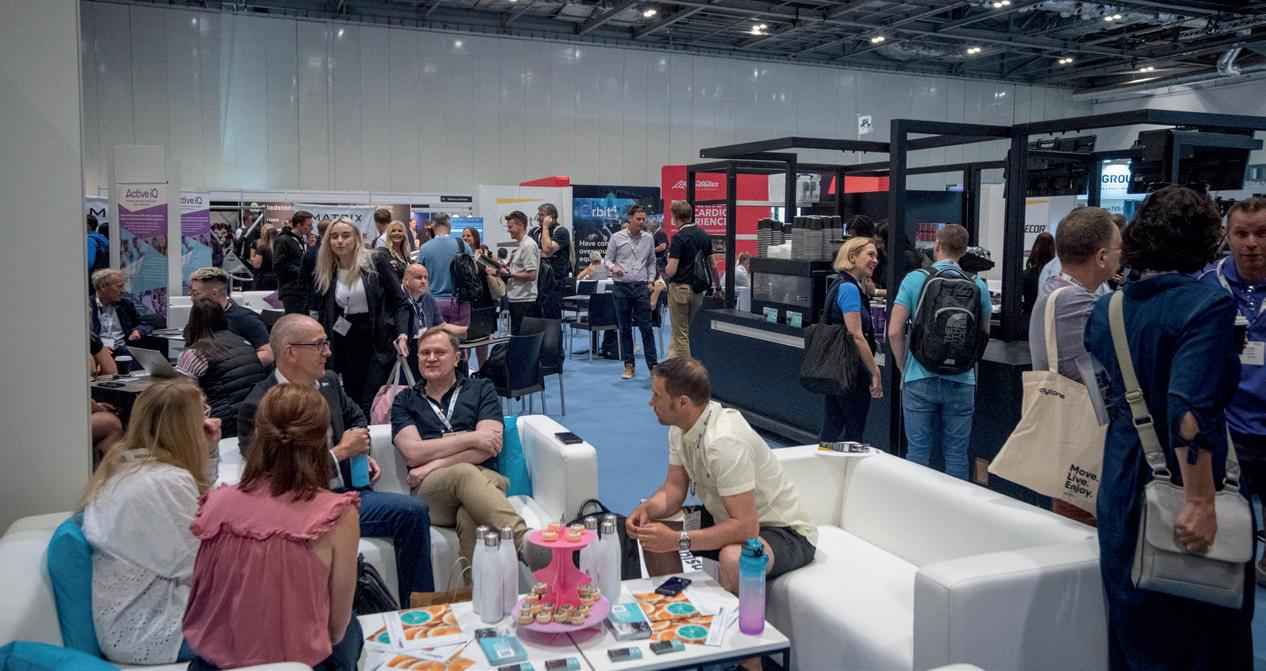

little over a year. The flagship product, Hydrohex Fitness Classes, offers exercisers an immersive aqua fitness experience with cinematic underwater views and engaging instruction. Another company, Denmark-based Ventriject, has developed a novel approach to assess the cardiorespiratory fitness, quantifiable as VO2 Max. Its Seismofit medical device relies on the seismocardiography method and advanced algorithms to assess and monitor the clinical vital sign. A monitoring device placed on the chest to capture the heartbeat vibrations for 40 seconds and the data acquired is then transferred from the device to a smartphone application onto a server, where the signals are analysed.
As a major trade show, Elevate has taken measures to limit the environmental impact of hosting the event. One of these measures

ELEVATE OFFERS AN OPPORTUNITY TO PHYSICALLY EXPLORE, DISCOVER AND TRY OUT THE LATEST PRODUCTS, EQUIPMENT, TECHNOLOGY AND SERVICES FROM ACROSS THE SECTOR
Lucy Findlay, Elevate’s Event DirectorThe educational programme included more than 200 expert speakers across the two days ALL PHOTOS: © NICK FORD PHOTOGRAPHY ELEVATE
was to plant 3,100 trees, effectively offsetting a significant portion of the show’s carbon footprint. The project was one of a series of eco-conscious initiatives, which ranged from a commitment to reducing waste and limiting resource consumption.
At the close of the event, the dates for next year’s Elevate – the 7th edition of the show – were revealed as 12-13 June 2024.
“There are four main reasons to attend Elevate,” says Lucy Findlay, Elevate’s Event Director. “It offers an opportunity to build business relationships with industry companies, to gain knowledge through the educational programme, to network and to physically explore, discover and try out the latest products from across the sector.” ●

SAVE THE DATE 12-13 JUNE 2024
“Great opportunity to network and great speakers who were very insightful.”
Carrie Morrison - Waves Swim & Fitness
“A very energetic expo, full of new ideas and products that are sure to help the evolution of the health and fitness industry.”
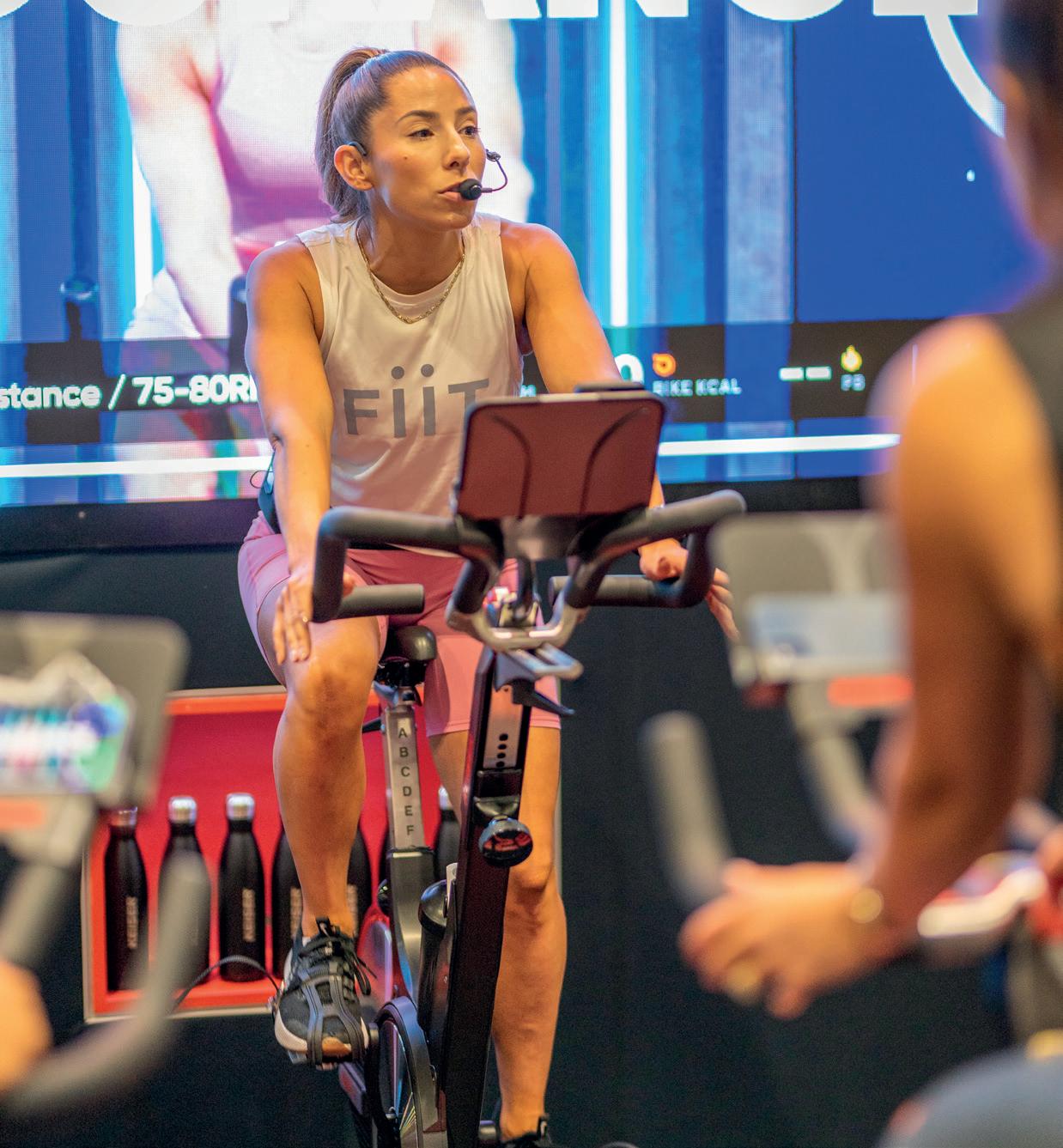
Rosa Smith, Justrunning
“Elevate 2023 provided the ideal platform to share, learn, and educate, catalysing the transformation from Leisure to Health & Wellbeing.”

Rachel Stokes, ReferAll
“Elevate is a melting pot of industries bringing together the best of each to push the sector forwards.”
Kirsten Wing, Sports Therapist
“THE destination for operators and suppliers looking to connect and explore new opportunities.”



John Leaver, Alliance Leisure
“Elevate is the most inspiring fitness conference with cutting edge technology and speakers, it really is the place to be.”
Lucy, Canterbury Christ Church University
“The crossroads of innovation and inspiration in the fitness and nutrition industry, delivering the future of personal health and performance.”
Rob Ede, Ede Fitness
“Like Disneyland for fitness!”
Kate Sutton, Fitness Trainer, BXR London
“Elevate is a great event to grow your business. So glad I attended. With so many new things taking place in the industry, definitely the event to see it all.”
Denise Brown, Onewomanfitness.co.uk












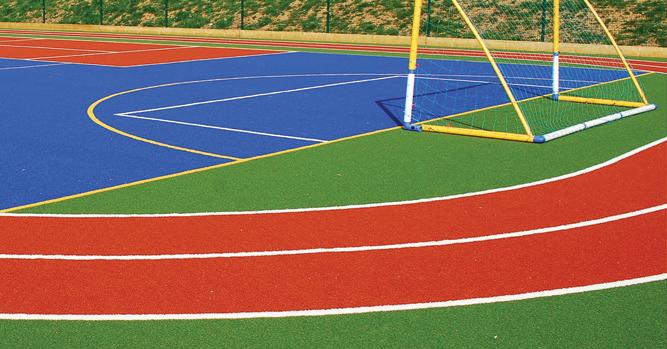









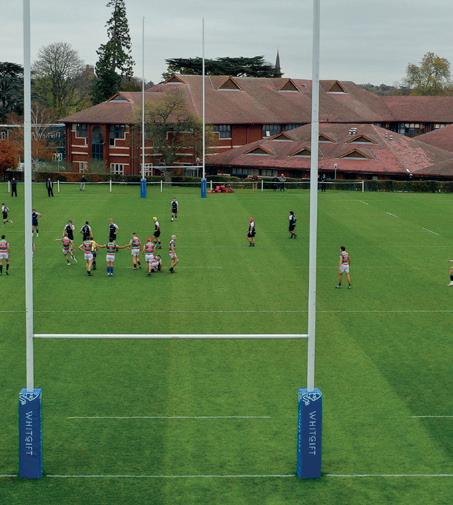



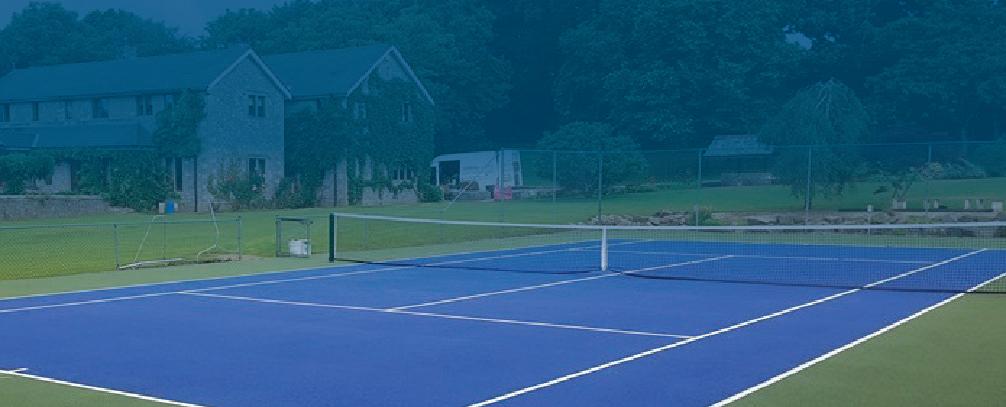



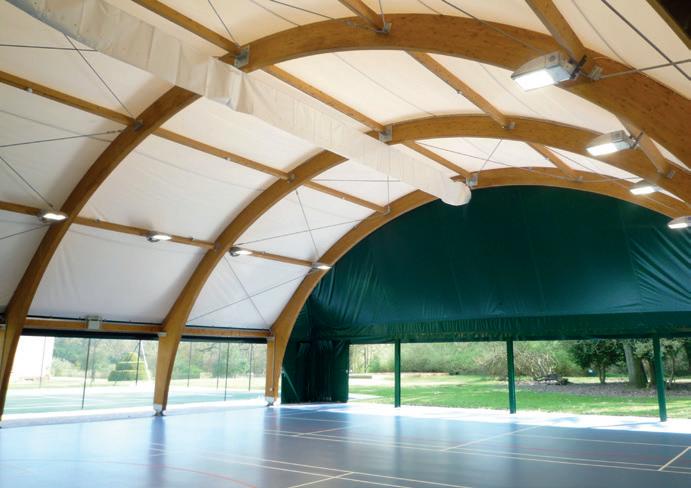











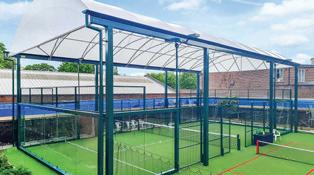







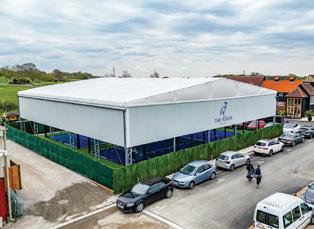
















































































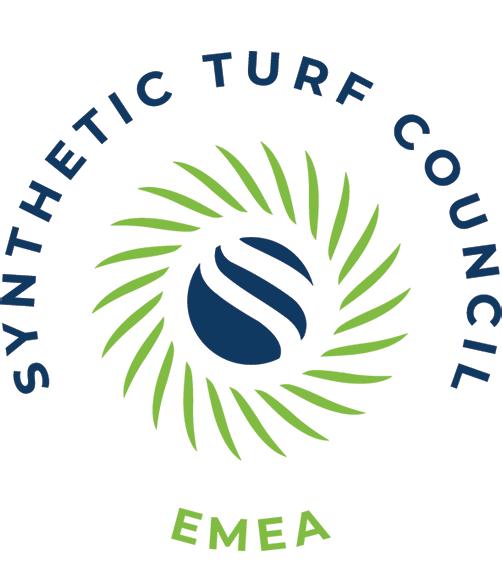



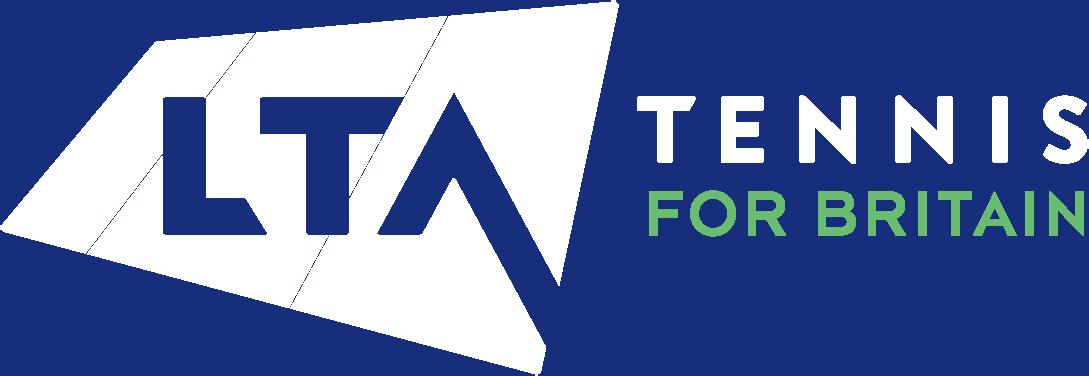















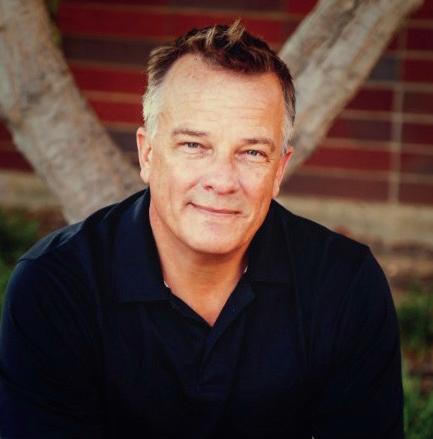
What is Fun and Moving and what does it do?
Fun and Moving (FAM) is an on-demand health and wellness platform that delivers physical therapy, occupational therapy and doctor approved routines to people’s homes via TV, computer, or phone. The idea is to bring medically-approved routines to people who are stuck at home, are ageing-in-place, or have yet to start their exercise journey as well as to those who need rehab to get healthier.
Where did the idea and motivation come to set FAM up?
From two sources, really. One was the amazing relationship I had with my immigrant grandfather, who never, ever went to a gym or purchased workout clothes but was
always fit from walking and doing exercise with only his natural body weight.
Secondly, I have owned multiple funeral homes in California for the past 19 years and I observed how, and why, people die. I felt the process of prevention and staying healthy was easier than most people realised. So, I built something for them.

Anyone who is stuck in life in some way. Injury or illness, never exercised before, aging in place, or those seeking to begin a long term, preventative health plan of their own.
What would you describe as your biggest success/achievement so far?
Partnering up with US cable companies and the US government – and the setting up of our telehealth portal.
And what have the biggest challenges been so far?
Getting people to know about us as a small company – and the lengthy corporate timelines to go live.
In the US, we work with many of the large cable and streaming platforms. They saw our content as unique and wanted it for their subscribers. We are just beginning to work with the US government in various capacities, state and local governments for their employees and residents, and a few large companies as an employee benefit.
We have three main aims/goals.
1. To build out our telehealth solution across the US and globally.
2. To show all people, everywhere, that there is now an affordable way to improve their lives and get (and stay) fit and healthy.
3. Expand the service so we can offer it in multiple languages.
Do you think that the role that exercise can play in healthcare is finally being understood by those “in power”?
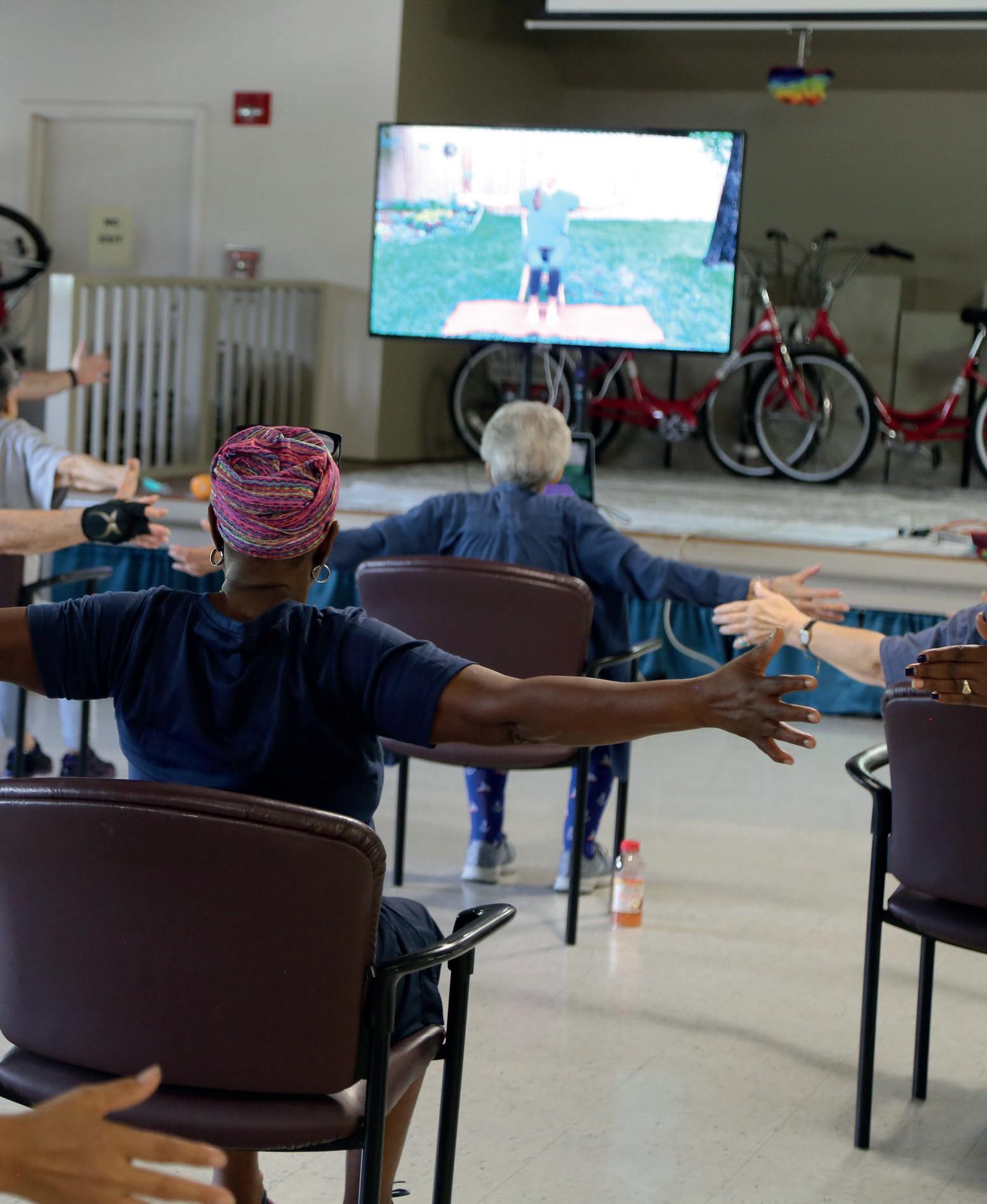
No. And that’s why providing access and affordability have always been my greatest motivators.
I tend to have a jaundiced view of healthcare and politicians because the way to health is so much simpler than people realise, or the healthcare industry lets on.
I used both as motivators to build and prove to the industry that one small company could impact the way millions of people can live healthier lives affordably. We did that. We are doing that. We are very proud of what we have accomplished… and we’re just getting started. l
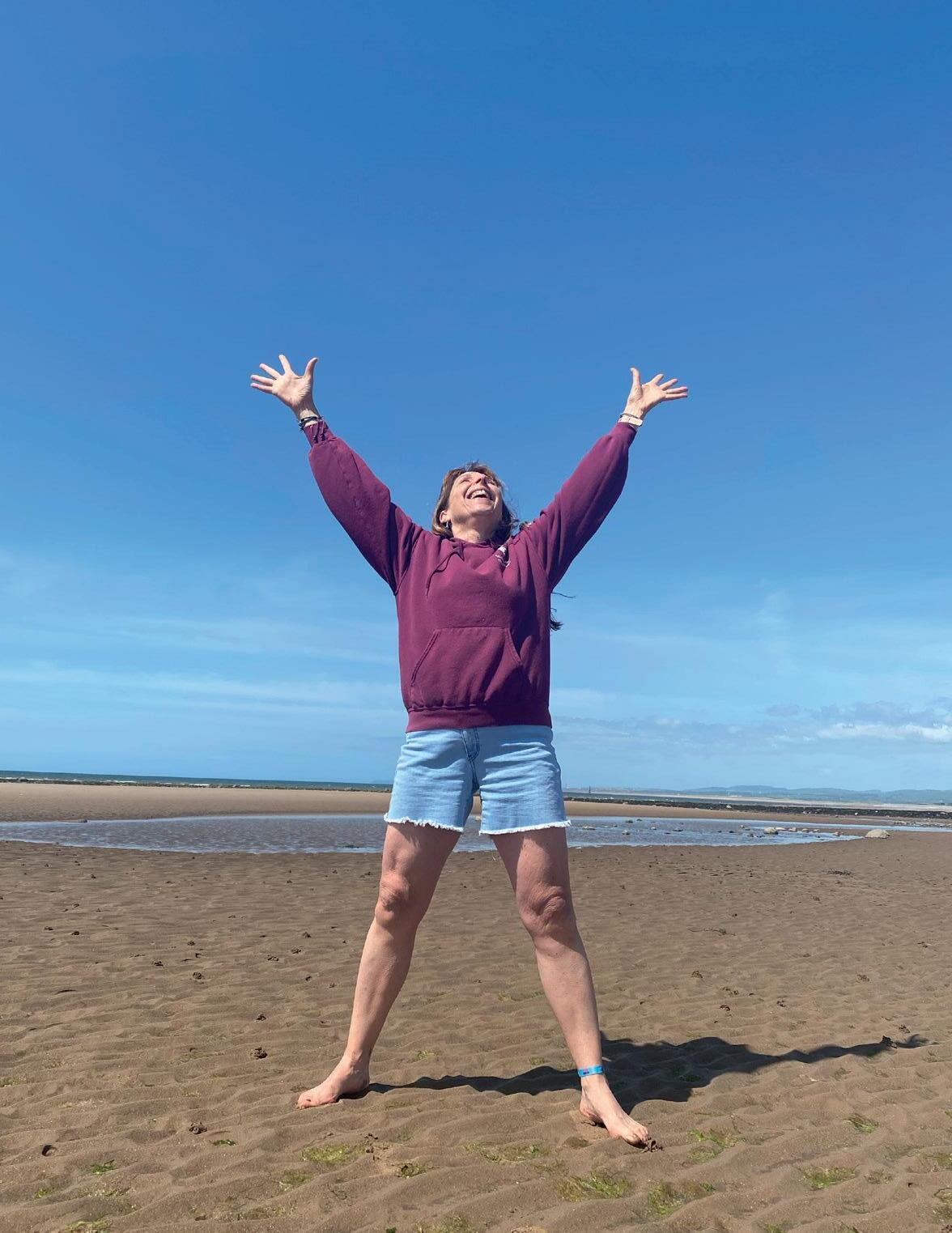
I tend to have a jaundiced view of healthcare and politicians because the way to health is so much simpler than people realise































